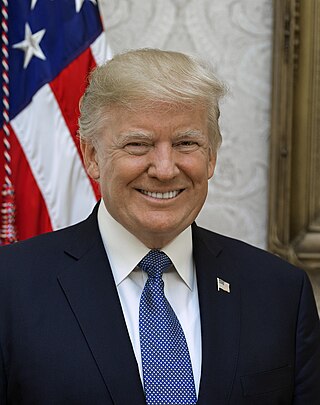
Donald Trump
Donald John Trump is an American politician, media personality, and businessman who served as the 45th president of the United States from 2017 to 2021.
Former U.S. President Donald Trump is acquitted in his second impeachment trial.

Donald John Trump is an American politician, media personality, and businessman who served as the 45th president of the United States from 2017 to 2021.

The second impeachment trial of Donald Trump, the 45th president of the United States, began on February 9, 2021, and concluded with his acquittal on February 13. Trump had been impeached for the second time by the House of Representatives on January 13, 2021. The House adopted one article of impeachment against Trump: incitement of insurrection. He is the only U.S. president and only federal official to be impeached twice and acquitted a second time. He was impeached by the House seven days prior to the expiration of his term and the inauguration of Joe Biden. Because he left office before the trial, this was the first impeachment trial of a former president. The article of impeachment addressed Trump's attempts to overturn the 2020 presidential election results and stated that Trump incited the attack on the Capitol in Washington, D.C., while Congress was convened to count the electoral votes and certify the victory of Joe Biden and Kamala Harris.
A major winter storm causes blackouts and kills at least 82 people in Texas and northern Mexico.

The February 13–17, 2021 North American winter storm, unofficially referred to as Winter Storm Uri by the Weather Channel, was a major winter and ice storm that had widespread impacts across the United States, Northern Mexico, and parts of Canada from February 13 to 17. The storm started out in the Pacific Northwest and quickly moved into the Southern United States, before moving on to the Midwestern and Northeastern United States a couple of days later.
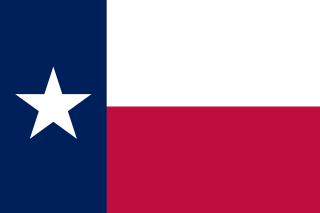
Texas is a state in the South Central region of the United States. At 268,596 square miles (695,662 km2), and with more than 29.1 million residents in 2020, it is the second-largest U.S. state by both area and population. Texas shares borders with the states of Louisiana to the east, Arkansas to the northeast, Oklahoma to the north, New Mexico to the west, and the Mexican states of Chihuahua, Coahuila, Nuevo León, and Tamaulipas to the south and southwest; and has a coastline with the Gulf of Mexico to the southeast.

Mexico, officially the United Mexican States, is a country in the southern portion of North America. It is bordered to the north by the United States; to the south and west by the Pacific Ocean; to the southeast by Guatemala, Belize, and the Caribbean Sea; and to the east by the Gulf of Mexico. Mexico covers 1,972,550 square kilometers (761,610 sq mi), making it the world's 13th-largest country by area; with approximately 126,014,024 inhabitants, it is the 10th-most-populous country and has the most Spanish-speakers. Mexico is organized as a federal republic comprising 31 states and Mexico City, its capital. Other major urban areas include Monterrey, Guadalajara, Puebla, Toluca, Tijuana, Ciudad Juárez, and León.
Kim Jong-nam, the half-brother of North Korean leader Kim Jong-un, was assassinated using VX nerve agent in Kuala Lumpur, Malaysia.

Kim Jong-nam was the eldest son of North Korean leader Kim Jong-il. From roughly 1994 to 2001, he was considered the heir apparent to his father. He was thought to have fallen out of favour after embarrassing the regime in 2001 with a failed attempt to visit Tokyo Disneyland with a false passport, although Kim himself said his loss of favour had been due to advocating reform.

Kim Jong-un is a North Korean politician who has been Supreme Leader of North Korea since 2011 and the leader of the Workers' Party of Korea (WPK) since 2012. He is a son of Kim Jong-il, who was North Korea's second supreme leader from 1994 to 2011, and Ko Yong-hui. He is a grandson of Kim Il-sung, who was the founder and first supreme leader of North Korea from its establishment in 1948 until his death in 1994. Kim Jong-un is the first leader of North Korea to have been born in the country after its founding in 1948.

On 13 February 2017, the eldest son of Kim Jong-il and half-brother of Kim Jong-un, Kim Jong-nam, was attacked with the nerve agent VX at Kuala Lumpur International Airport in Malaysia. He had been exiled from North Korea in 2003 and had been living abroad.

VX is an extremely toxic synthetic chemical compound in the organophosphorus class, specifically, a thiophosphonate. In the class of nerve agents, it was developed for military use in chemical warfare after translation of earlier discoveries of organophosphate toxicity in pesticide research. In recent years, VX was found to be the agent used in the assassination of Kim Jong-nam. In its pure form, VX is an oily, relatively non-volatile liquid that is amber-like in colour. Because of its low volatility, VX persists in environments where it is dispersed.
Kim Jong-nam, brother of North Korean dictator Kim Jong-Un, is assassinated at Kuala Lumpur International Airport.

Kim Jong-nam was the eldest son of North Korean leader Kim Jong-il. From roughly 1994 to 2001, he was considered the heir apparent to his father. He was thought to have fallen out of favour after embarrassing the regime in 2001 with a failed attempt to visit Tokyo Disneyland with a false passport, although Kim himself said his loss of favour had been due to advocating reform.

Kim Jong-un is a North Korean politician who has been Supreme Leader of North Korea since 2011 and the leader of the Workers' Party of Korea (WPK) since 2012. He is a son of Kim Jong-il, who was North Korea's second supreme leader from 1994 to 2011, and Ko Yong-hui. He is a grandson of Kim Il-sung, who was the founder and first supreme leader of North Korea from its establishment in 1948 until his death in 1994. Kim Jong-un is the first leader of North Korea to have been born in the country after its founding in 1948.

Kuala Lumpur International Airport (KLIA) is Malaysia's main international airport. It is located in the Sepang District of Selangor, approximately 45 kilometres (28 mi) south of Kuala Lumpur and serves the city's greater conurbation.
The first Vega rocket was launched by the European Space Agency.

Vega is an expendable launch system in use by Arianespace jointly developed by the Italian Space Agency (ASI) and the European Space Agency (ESA). Development began in 1998 and the first launch took place from the Centre Spatial Guyanais on 13 February 2012.

The European Space Agency is an intergovernmental organisation of 22 member states dedicated to the exploration of space. Established in 1975 and headquartered in Paris, ESA has a worldwide staff of about 2,200 in 2018 and an annual budget of about €7.2 billion in 2022.
The European Space Agency (ESA) conducted the first launch of the European Vega rocket from Europe's spaceport in Kourou, French Guiana.

The European Space Agency is an intergovernmental organisation of 22 member states dedicated to the exploration of space. Established in 1975 and headquartered in Paris, ESA has a worldwide staff of about 2,200 in 2018 and an annual budget of about €7.2 billion in 2022.

Vega is an expendable launch system in use by Arianespace jointly developed by the Italian Space Agency (ASI) and the European Space Agency (ESA). Development began in 1998 and the first launch took place from the Centre Spatial Guyanais on 13 February 2012.

Kourou is a commune in French Guiana, an overseas region and department of France in South America. Kourou is famous for being the location of the Guiana Space Centre, the main spaceport of France and the European Space Agency (ESA). It is an administrative district in French Guiana and the main town there.
For the first time in more than 100 years the Umatilla, an American Indian tribe, are able to hunt and harvest a bison just outside Yellowstone National Park, restoring a centuries-old tradition guaranteed by a treaty signed in 1855.

The Confederated Tribes of the Umatilla Indian Reservation are the federally recognized confederations of three Sahaptin-speaking Native American tribes who traditionally inhabited the Columbia River Plateau region: the Cayuse, Umatilla, and Walla Walla.
In the United States, an American Indian tribe, Native American tribe, Alaska Native village, tribal nation, or similar concept is any extant or historical clan, tribe, band, nation, or other group or community of Native Americans in the United States. Modern forms of these entities are often associated with land or territory of an Indian reservation. "Federally recognized Indian tribe" is a legal term of art in United States law with a specific meaning.
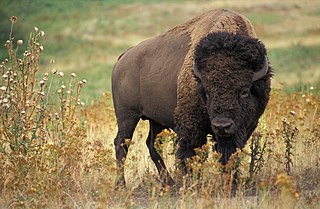
Bison are large bovines in the genus Bison within the tribe Bovini. Two extant and numerous extinct species are recognised.

Yellowstone National Park is an American national park located in the western United States, largely in the northwest corner of Wyoming and extending into Montana and Idaho. It was established by the 42nd U.S. Congress with the Yellowstone National Park Protection Act and signed into law by President Ulysses S. Grant on March 1, 1872. Yellowstone was the first national park in the U.S. and is also widely held to be the first national park in the world. The park is known for its wildlife and its many geothermal features, especially the Old Faithful geyser, one of its most popular. While it represents many types of biomes, the subalpine forest is the most abundant. It is part of the South Central Rockies forests ecoregion.
A terrorist bombing at a bakery popular among foreigners in Pune, India, killed 17 people and injured 60 others.
The 2010 Pune bombing, also known as 13/7 and the German bakery blast, occurred on 13 February 2010 at approximately 19:15 Indian Standard Time, when a bomb exploded at a German bakery in the Indian city of Pune, Maharashtra. The blast killed 18 people, and injured at least 60 more, including an Italian woman, two Sudanese students and an Iranian student.

Pune, formerly known as Poona, is one of the most important industrial and educational hubs of India, with an estimated population of 7.4 million as of 2020. Pune is considered to be the cultural and educational capital of Maharashtra state. It has been ranked "the most liveable city in India" several times. Together with the municipal corporation areas of Pimpri-Chinchwad (PCMC) and Pune (PMC), and the three cantonment towns of Camp, Khadki, and Dehu Road, Pune forms the urban core of the eponymous Pune Metropolitan Region (PMR). As of 2021, with an area of 7,256 sq km, PMR is geographically the largest metropolitan region in Maharashtra state and 5th largest in India.
A bomb explodes in the city of Pune, Maharashtra, India, killing 17 and injuring 60 more.
The 2010 Pune bombing, also known as 13/7 and the German bakery blast, occurred on 13 February 2010 at approximately 19:15 Indian Standard Time, when a bomb exploded at a German bakery in the Indian city of Pune, Maharashtra. The blast killed 18 people, and injured at least 60 more, including an Italian woman, two Sudanese students and an Iranian student.

Pune, formerly known as Poona, is one of the most important industrial and educational hubs of India, with an estimated population of 7.4 million as of 2020. Pune is considered to be the cultural and educational capital of Maharashtra state. It has been ranked "the most liveable city in India" several times. Together with the municipal corporation areas of Pimpri-Chinchwad (PCMC) and Pune (PMC), and the three cantonment towns of Camp, Khadki, and Dehu Road, Pune forms the urban core of the eponymous Pune Metropolitan Region (PMR). As of 2021, with an area of 7,256 sq km, PMR is geographically the largest metropolitan region in Maharashtra state and 5th largest in India.

Maharashtra is a state in the western peninsular region of India occupying a substantial portion of the Deccan Plateau. Maharashtra is the second-most populous state in India and the second-most populous country subdivision globally. It was formed on 1 May 1960 by splitting the bilingual Bombay State, which had existed since 1956, into majority Marathi-speaking Maharashtra and Gujarati-speaking Gujarat. Maharashtra is home to the Marathi people, the predominant ethno-linguistic group, who speak the Marathi language, the official language of the state. The state is divided into 6 divisions and 36 districts, with the state capital being Mumbai, the most populous urban area in India, and Nagpur serving as the winter capital, which also hosts the winter session of the state legislature. Godavari and Krishna are the two major rivers in the state. Forests cover 16.47 per cent of the state's geographical area. Out of the total cultivable land in the state, about 60 per cent is used for grain crops in the Deccan region, rice in coastal Konkan, and other high rainfall areas.
Australian Prime Minister Kevin Rudd makes a historic apology to the Indigenous Australians and the Stolen Generations.

Kevin Michael Rudd is an Australian former politician and diplomat who served as the 26th prime minister of Australia from 2007 to 2010 and again from June 2013 to September 2013. He held office as the leader of the Australian Labor Party.

On 13 February 2008, the Parliament of Australia issued a formal apology to Indigenous Australians for forced removals of Australian Indigenous children from their families by Australian federal and state government agencies. The apology was delivered by Prime Minister Kevin Rudd, and is also referred to as the National Apology, or simply The Apology.
Indigenous Australians or Australian First Nations are people with familial heritage from, and membership in, the ethnic groups that lived in Australia before British colonisation. They consist of two distinct groups: the Aboriginal peoples of the Australian mainland and Tasmania, and the Torres Strait Islander peoples from the seas between Queensland and Papua New Guinea. The term Aboriginal and Torres Strait Islander peoples or the person's specific cultural group, is often preferred, though the terms First Nations of Australia, First Peoples of Australia and First Australians are also increasingly common; 812,728 people self-identified as being of Aboriginal and/or Torres Strait Islander origin in the 2021 Australian Census, representing 3.2% of the total population of Australia. Of these indigenous Australians, 91.4% identified as Aboriginal; 4.2% identified as Torres Strait Islander; while 4.4% identified with both groups. Since 1995, the Australian Aboriginal flag and the Torres Strait Islander flag have been among the official flags of Australia.
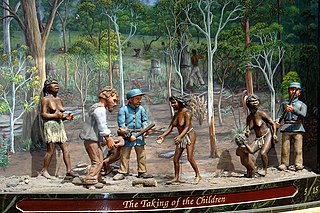
The Stolen Generations were the children of Australian Aboriginal and Torres Strait Islander descent who were removed from their families by the Australian federal and state government agencies and church missions, under acts of their respective parliaments. The removals of those referred to as "half-caste" children were conducted in the period between approximately 1905 and 1967, although in some places mixed-race children were still being taken into the 1970s.
Taiwan opposition leader Ma Ying-jeou resigns as the chairman of the Kuomintang party after being indicted on charges of embezzlement during his tenure as the mayor of Taipei; Ma also announces his candidacy for the 2008 presidential election.

Taiwan, officially the Republic of China (ROC), is a country in East Asia, at the junction of the East and South China Seas in the northwestern Pacific Ocean, with the People's Republic of China (PRC) to the northwest, Japan to the northeast, and the Philippines to the south. The territories controlled by the ROC consist of 168 islands, with a combined area of 36,193 square kilometres (13,974 sq mi). The main island of Taiwan, also known as Formosa, has an area of 35,808 square kilometres (13,826 sq mi), with mountain ranges dominating the eastern two-thirds and plains in the western third, where its highly urbanised population is concentrated. The capital, Taipei, forms along with New Taipei City and Keelung the largest metropolitan area of Taiwan. Other major cities include Taoyuan, Taichung, Tainan, and Kaohsiung. With around 23.9 million inhabitants, Taiwan is among the most densely populated countries in the world.

Ma Ying-jeou is a Hong Kong-born Taiwanese politician who served as President of the Republic of China from 2008 to 2016. His previous political roles include Justice Minister (1993–96) and Mayor of Taipei (1998–2006). He was also the Chairman of the Kuomintang (KMT) from 2005 to 2007 and 2009 to 2014.
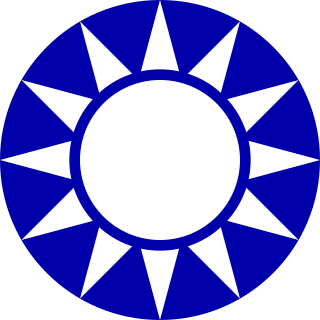
The Kuomintang (KMT), also referred to as the Guomindang (GMD) or the Chinese Nationalist Party, is a major political party in the Republic of China, initially on the Chinese mainland and in Taiwan after 1949. It was the sole party in China during the Republican Era from 1928 to 1949, when most of the Chinese mainland was under its control. The party retreated from the mainland to Taiwan on 7 December 1949, following its defeat in the Chinese Civil War. Chiang Kai-shek declared martial law and retained its authoritarian rule over Taiwan under the Dang Guo system until democratic reforms were enacted in the 1980s and full democratization in the 1990s. In Taiwanese politics, the KMT is the dominant party in the Pan-Blue Coalition and primarily competes with the rival Democratic Progressive Party (DPP). It is currently the largest opposition party in the Legislative Yuan. The current chairman is Eric Chu.

Taipei, officially Taipei City, is the capital and a special municipality of the Republic of China (Taiwan). Located in Northern Taiwan, Taipei City is an enclave of the municipality of New Taipei City that sits about 25 km (16 mi) southwest of the northern port city of Keelung. Most of the city rests on the Taipei Basin, an ancient lakebed. The basin is bounded by the relatively narrow valleys of the Keelung and Xindian rivers, which join to form the Tamsui River along the city's western border.
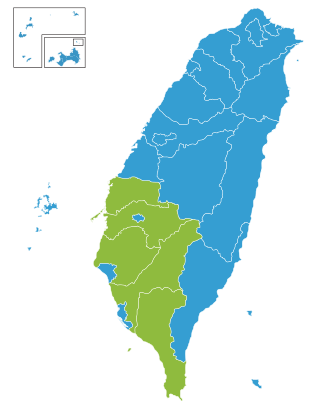
Presidential elections were held in Taiwan on 22 March 2008. Kuomintang (KMT) nominee Ma Ying-jeou won with 58% of the vote, ending eight years of Democratic Progressive Party (DPP) rule. Along with the 2008 legislative election, Ma's landslide victory brought the Kuomintang back to power in the Republic of China.
The Harvard–Smithsonian Center for Astrophysics announces the discovery of the universe's largest known diamond, white dwarf star BPM 37093. Astronomers named this star "Lucy" after The Beatles' song "Lucy in the Sky with Diamonds".

The Center for Astrophysics | Harvard & Smithsonian (CfA), alternatively called the Harvard–Smithsonian Center for Astrophysics, is an astrophysics research institute jointly operated by the Harvard College Observatory and Smithsonian Astrophysical Observatory. Founded in 1973 and headquartered in Cambridge, Massachusetts, the CfA leads a broad program of research in astronomy, astrophysics, Earth and space sciences, as well as science education. The CfA either leads or participates in the development and operations of more than fifteen ground- and space-based astronomical research observatories across the electromagnetic spectrum, including the forthcoming Giant Magellan Telescope (GMT) and the Chandra X-ray Observatory, one of NASA's Great Observatories.

Diamond is a solid form of the element carbon with its atoms arranged in a crystal structure called diamond cubic. Another solid form of carbon known as graphite is the chemically stable form of carbon at room temperature and pressure, but diamond is metastable and converts to it at a negligible rate under those conditions. Diamond has the highest hardness and thermal conductivity of any natural material, properties that are used in major industrial applications such as cutting and polishing tools. They are also the reason that diamond anvil cells can subject materials to pressures found deep in the Earth.

A white dwarf is a stellar core remnant composed mostly of electron-degenerate matter. A white dwarf is very dense: its mass is comparable to the Sun's, while its volume is comparable to the Earth's. A white dwarf's faint luminosity comes from the emission of residual thermal energy; no fusion takes place in a white dwarf. The nearest known white dwarf is Sirius B, at 8.6 light years, the smaller component of the Sirius binary star. There are currently thought to be eight white dwarfs among the hundred star systems nearest the Sun. The unusual faintness of white dwarfs was first recognized in 1910. The name white dwarf was coined by Willem Luyten in 1922.

A star is an astronomical object comprising a luminous spheroid of plasma held together by its gravity. The nearest star to Earth is the Sun. Many other stars are visible to the naked eye at night, but their immense distances from Earth make them appear as fixed points of light. The most prominent stars have been categorised into constellations and asterisms, and many of the brightest stars have proper names. Astronomers have assembled star catalogues that identify the known stars and provide standardized stellar designations. The observable universe contains an estimated 1022 to 1024 stars. Only about 4,000 of these stars are visible to the naked eye, all within the Milky Way galaxy.

BPM 37093 is a variable white dwarf star of the DAV, or ZZ Ceti, type, with a hydrogen atmosphere and an unusually high mass of approximately 1.1 times the Sun's. It is about 50 light-years from Earth in the constellation Centaurus and vibrates; these pulsations cause its luminosity to vary. Like other white dwarfs, BPM 37093 is thought to be composed primarily of carbon and oxygen, which are created by thermonuclear fusion of helium nuclei in the triple-alpha process.

The Beatles were an English rock band, formed in Liverpool in 1960, that comprised John Lennon, Paul McCartney, George Harrison and Ringo Starr. They are regarded as the most influential band of all time and were integral to the development of 1960s counterculture and popular music's recognition as an art form. Rooted in skiffle, beat and 1950s rock 'n' roll, their sound incorporated elements of classical music and traditional pop in innovative ways; the band also explored music styles ranging from folk and Indian music to psychedelia and hard rock. As pioneers in recording, songwriting and artistic presentation, the Beatles revolutionised many aspects of the music industry and were often publicised as leaders of the era's youth and sociocultural movements.

"Lucy in the Sky with Diamonds" is a song by the English rock band the Beatles from their 1967 album Sgt. Pepper's Lonely Hearts Club Band. It was written primarily by John Lennon and credited to the Lennon–McCartney songwriting partnership. Lennon's son Julian inspired the song with a nursery school drawing that he called "Lucy – in the sky with diamonds". Shortly before the album's release, speculation arose that the first letter of each of the nouns in the title intentionally spelled "LSD", the initialism commonly used for the hallucinogenic drug lysergic acid diethylamide. Lennon repeatedly denied that he had intended it as a drug song, and attributed the song's fantastical imagery to his reading of Lewis Carroll's Alice in Wonderland books.
An earthquake measuring 7.6 on the Richter magnitude scale hits El Salvador, killing at least 944.

The January 2001 El Salvador earthquake struck El Salvador on January 13, 2001 at 17:33:34 UTC. The 7.6 quake struck with the epicenter 60 miles (100 km) SW of San Miguel, El Salvador at a depth of 60 km. At least 944 people were killed, 5,565 injured, 108,261 houses destroyed – with another 169,692 houses damaged – and more than 150,000 buildings were damaged in El Salvador. About 585 of the deaths were caused by large landslides in Santa Tecla and Comasagua. As is often the case after earthquakes in El Salvador, landslides wreaked significant damage. Estimation of the number of slides is difficult because individual scarps conjoin. The total has been reported as high as 16,000, though it is unclear how this figure was arrived at. Damage and injuries occurred in every department of El Salvador, particularly the departments of La Libertad and Usulután. Eight people were killed in Guatemala. The tremor was felt from Mexico City to Colombia. An aftershock measuring 5.7 magnitude was felt on January 15, an event not widely reported outside the country until after another earthquake on February 13, which initially was assessed by the USGS at 5.7 magnitude as well.
The Richter scale —also called the Richter magnitude scale, Richter's magnitude scale, and the Gutenberg–Richter scale—is a measure of the strength of earthquakes, developed by Charles Francis Richter and presented in his landmark 1935 paper, where he called it the "magnitude scale". This was later revised and renamed the local magnitude scale, denoted as ML or ML .
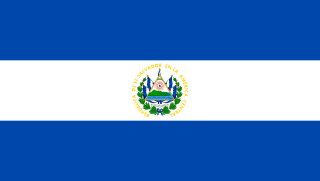
El Salvador, officially the Republic of El Salvador, is a country in Central America. It is bordered on the northeast by Honduras, on the northwest by Guatemala, and on the south by the Pacific Ocean. El Salvador's capital and largest city is San Salvador. The country's population in 2021 is estimated to be 6.8 million.
The Nepalese Civil War is initiated in the Kingdom of Nepal by the Communist Party of Nepal (Maoist-Centre).

The Nepalese Civil War was a protracted armed conflict that took place in the former Kingdom of Nepal from 1996 to 2006. It saw fighting between the Nepalese royal government and the Communist Party of Nepal (Maoist) throughout the country. The conflict began on 13 February 1996, when the Communist Party of Nepal initiated an insurgency with the stated purpose of overthrowing the Nepalese monarchy and establishing a people's republic; it ended with the signing of the Comprehensive Peace Accord on 21 November 2006.

The Kingdom of Nepal, also known as the Gorkha Empire or Asal Hindustan (transl. Real Land of the Hindus), was a Hindu kingdom in South Asia, formed in 1768, by the unification of Nepal. Founded by King Prithvi Narayan Shah, a Gorkha monarch who claimed to be of Khas Thakuri origin, it existed for 240 years until the abolition of the Nepalese monarchy in 2008. During this period, Nepal was formally under the rule of the Shah dynasty, which exercised varying degrees of power during the kingdom's existence.

The Communist Party of Nepal , abbreviated CPN , CPN-Maoist Centre, CPN Maoist Centre, or CPN (MC), is the third largest political party in Nepal. It was founded in 1994 after breaking away from the Communist Party of Nepal.
Gulf War: Two laser-guided "smart bombs" destroy the Amiriyah shelter in Baghdad. Allied forces said the bunker was being used as a military communications outpost, but over 400 Iraqi civilians inside were killed.

The Gulf War was a 1990–1991 armed campaign waged by a 35-country military coalition in response to the Iraqi invasion of Kuwait. Spearheaded by the United States, the coalition's efforts against Iraq were carried out in two key phases: Operation Desert Shield, which marked the military buildup from August 1990 to January 1991; and Operation Desert Storm, which began with the aerial bombing campaign against Iraq on 17 January 1991 and came to a close with the American-led Liberation of Kuwait on 28 February 1991.

A guided bomb is a precision-guided munition designed to achieve a smaller circular error probable (CEP).

The Amiriyah shelter bombing was an aerial bombing attack that killed at least 408 civilians on 13 February 1991 during the Persian Gulf War, when an air-raid shelter in the Amiriyah neighborhood of Baghdad, Iraq, was destroyed by the U.S. Air Force with two GBU-27 Paveway III laser-guided "smart bombs".

Baghdad is the capital of Iraq and the second-largest city in the Arab world after Cairo. It is located on the Tigris near the ruins of the ancient city of Babylon and the Sassanid Persian capital of Ctesiphon. In 762 CE, Baghdad was chosen as the capital of the Abbasid Caliphate, and became its most notable major development project. Within a short time, the city evolved into a significant cultural, commercial, and intellectual center of the Muslim world. This, in addition to housing several key academic institutions, including the House of Wisdom, as well as a multiethnic and multi-religious environment, garnered it a worldwide reputation as the "Center of Learning".
German reunification: An agreement is reached on a two-stage plan to reunite Germany.

German reunification was a geo-political event on 3 October 1990 by which the German Democratic Republic was dissolved and its territory became part of the Federal Republic of Germany to form present-day Germany.
Konstantin Chernenko succeeds the late Yuri Andropov as general secretary of the Communist Party of the Soviet Union.

Konstantin Ustinovich Chernenko was a Soviet politician and the seventh General Secretary of the Communist Party of the Soviet Union. He briefly led the Soviet Union from 13 February 1984 until his death on 10 March 1985.

Yuri Vladimirovich Andropov was the sixth paramount leader of the Soviet Union and the fourth General Secretary of the Communist Party of the Soviet Union. After Leonid Brezhnev's 18-year rule, Andropov served in the post from November 1982 until his death in February 1984.
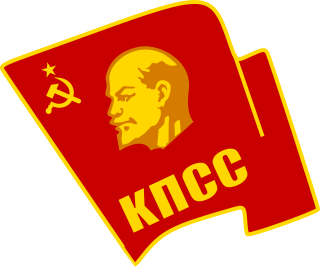
The Communist Party of the Soviet Union (CPSU), also known by various other names during its history, was the founding and ruling party of the Soviet Union. The CPSU was the sole governing party of the Soviet Union until 1990 when the Congress of People's Deputies modified Article 6 of the 1977 Soviet Constitution, which had previously granted the CPSU a monopoly over the political system. The party has its roots in the Russian Social Democratic Labour Party (RSDLP). The RSDLP was founded in 1898, when Russia was ruled by an absolute monarchy. The broad anti-Tsarist ideology was the driving factor in its initial growth. Russians across the political spectrum flocked to the party, as Marxists, socialists, and centrists made up its ranks. Despite the Tsar's harsh oppression including imprisoning and even executing party members, the RSDLP continued to grow albeit underground. Initially the party operated in a unified and cohesive manner, but by 1900 cracks within party unity began to show.
A cinema fire in Turin, Italy, kills 64 people.
Cinema Statuto was a movie theater located in Turin, Italy, when on 13 February 1983, at 18:15, during the projection of La Chèvre, a fire caused the death of 64 people as a result of smoke inhalation. According to statements by Raimondo Capella, the owner of the cinema, the flames spread from an old curtain. This was the largest disaster to have occurred after World War II in Turin.
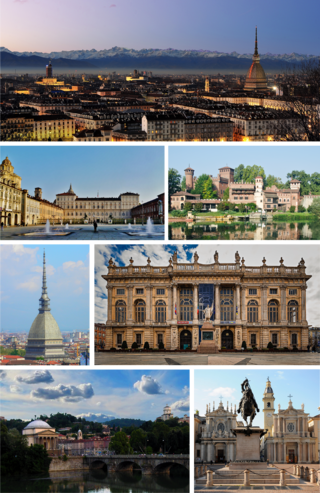
Turin is a city and an important business and cultural centre in Northern Italy. It is the capital city of Piedmont and of the Metropolitan City of Turin, and was the first Italian capital from 1861 to 1865. The city is mainly on the western bank of the Po River, below its Susa Valley, and is surrounded by the western Alpine arch and Superga Hill. The population of the city proper is 847,287 while the population of the urban area is estimated by Eurostat to be 1.7 million inhabitants. The Turin metropolitan area is estimated by the OECD to have a population of 2.2 million.
Explosions caused by the ignition of hexane vapors destroyed more than 13 miles (21 km) of sewer lines in Louisville, Kentucky.
On February 13, 1981, a series of explosions destroyed more than 13 miles (21 km) of sewer lines and streets in the center of Louisville in Kentucky, United States. The explosions resulted in extensive damage to property and infrastructure; there were no fatalities, but four people were injured.
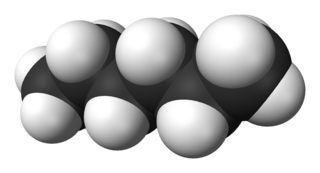
Hexane is an organic compound, a straight-chain alkane with six carbon atoms and has the molecular formula C6H14.

A sanitary sewer is an underground pipe or tunnel system for transporting sewage from houses and commercial buildings to a sewage treatment plant or disposal. Sanitary sewers are a type of gravity sewer and are part of an overall system called a "sewage system" or sewerage. Sanitary sewers serving industrial areas may also carry industrial wastewater. In municipalities served by sanitary sewers, separate storm drains may convey surface runoff directly to surface waters. An advantage of sanitary sewer systems is that they avoid combined sewer overflows. Sanitary sewers are typically much smaller in diameter than combined sewers which also transport urban runoff. Backups of raw sewage can occur if excessive stormwater inflow or groundwater infiltration occurs due to leaking joints, defective pipes etc. in aging infrastructure.
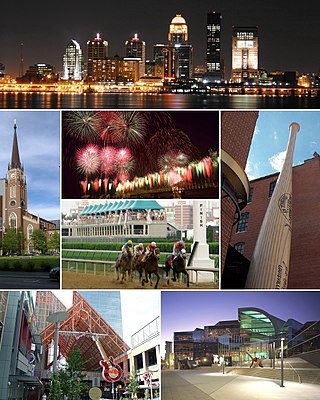
Louisville is the largest city in the Commonwealth of Kentucky and the 28th most-populous city in the United States. Louisville is the historical seat and, since 2003, the nominal seat of Jefferson County, on the Indiana border.
A series of sewer explosions destroys more than two miles of streets in Louisville, Kentucky.
On February 13, 1981, a series of explosions destroyed more than 13 miles (21 km) of sewer lines and streets in the center of Louisville in Kentucky, United States. The explosions resulted in extensive damage to property and infrastructure; there were no fatalities, but four people were injured.

Louisville is the largest city in the Commonwealth of Kentucky and the 28th most-populous city in the United States. Louisville is the historical seat and, since 2003, the nominal seat of Jefferson County, on the Indiana border.
An intense windstorm strikes western Washington and sinks a 0.5-mile (0.80 km) long section of the Hood Canal Bridge.

The February 13, 1979, windstorm was a natural phenomenon that took place in Pacific Canada and the United States. During the early morning, an intense wave cyclone moved across southern Vancouver Island, British Columbia. South of the low center, a strong atmospheric pressure gradient was carried across Washington, with associated high winds. With a cold airflow moving toward the northeast interacting with the high terrain of the Olympic Mountains, a lee low developed east of the Olympics. The mesoscale low caused a particularly intense pressure gradient across the Kitsap Peninsula region.

The Hood Canal Bridge is a floating bridge in the northwest United States, located in western Washington. It carries State Route 104 across Hood Canal of Puget Sound and connects the Olympic and Kitsap Peninsulas. At 7,869 feet in length, it is the longest floating bridge in the world located in a saltwater tidal basin, and the third longest floating bridge overall. First opened 61 years ago in 1961, it was the second concrete floating bridge constructed in Washington. Since that time, it has become a vital link for local residents, freight haulers, commuters, and recreational travelers. The convenience it provides has had a major impact on economic development, especially in eastern Jefferson County.
A bomb exploded outside the Hilton Hotel in Sydney, the site of the Commonwealth Heads of Government Meeting, killing three people and injuring eleven others.

The Sydney Hilton Hotel bombing occurred on 13 February 1978, when a bomb exploded outside the Hilton Hotel in Sydney, New South Wales, Australia. At the time the hotel was the site of the first Commonwealth Heads of Government Regional Meeting (CHOGRM), a regional offshoot of the biennial meetings of the heads of government from across the Commonwealth of Nations.

Hilton Hotels & Resorts is a global brand of full-service hotels and resorts and the flagship brand of American multinational hospitality company Hilton.
The Commonwealth Heads of Government Meeting is a biennial summit meeting of the governmental leaders from all Commonwealth nations. Despite the name, the head of state may be present in the meeting instead of the head of government, especially among semi-presidential states. Every two years the meeting is held in a different member state and is chaired by that nation's respective prime minister or president, who becomes the Commonwealth Chair-in-Office until the next meeting. Queen Elizabeth II, who was the Head of the Commonwealth, attended every CHOGM beginning with Ottawa in 1973 until Perth in 2011, although her formal participation only began in 1997. She was represented by the Prince of Wales at the 2013 meeting as the 87-year-old monarch was curtailing long-distance travel. The Queen attended the 2015 summit in Malta and the 2018 summit in London, but was represented again by the Prince of Wales at the 2022 meeting in Rwanda.
Hilton bombing: a bomb explodes in a refuse truck outside the Hilton Hotel in Sydney, Australia, killing two refuse collectors and a policeman.

The Sydney Hilton Hotel bombing occurred on 13 February 1978, when a bomb exploded outside the Hilton Hotel in Sydney, New South Wales, Australia. At the time the hotel was the site of the first Commonwealth Heads of Government Regional Meeting (CHOGRM), a regional offshoot of the biennial meetings of the heads of government from across the Commonwealth of Nations.

Hilton Hotels & Resorts is a global brand of full-service hotels and resorts and the flagship brand of American multinational hospitality company Hilton.
Fire at One World Trade Center (North Tower) of the World Trade Center in New York.

The original World Trade Center (WTC) was a large complex of seven buildings in the Financial District of Lower Manhattan in New York City. It opened on April 4, 1973, and was destroyed in 2001 during the September 11 attacks. At the time of their completion, the Twin Towers—the original 1 World Trade Center at 1,368 feet (417 m); and 2 World Trade Center at 1,362 feet (415.1 m)—were the tallest buildings in the world. Other buildings in the complex included the Marriott World Trade Center, 4 WTC, 5 WTC, 6 WTC, and 7 WTC. The complex contained 13,400,000 square feet (1,240,000 m2) of office space.
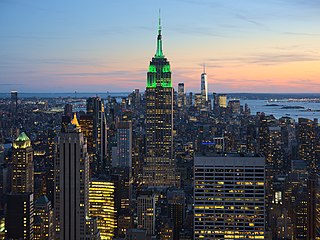
New York, often called New York City or the acronym NYC, is the most populous city in the United States. With a 2020 population of 8,804,190 distributed over 300.46 square miles (778.2 km2), New York City is also the most densely populated major city in the United States, and is more than twice as populous as second-place Los Angeles. New York City lies at the southern tip of New York State, and constitutes the geographical and demographic center of both the Northeast megalopolis and the New York metropolitan area, the largest metropolitan area in the world by urban landmass. With over 20.1 million people in its metropolitan statistical area and 23.5 million in its combined statistical area as of 2020, New York is one of the world's most populous megacities, and over 58 million people live within 250 mi (400 km) of the city. New York City is a global cultural, financial, and media center with a significant influence on commerce, health care and life sciences, entertainment, research, technology, education, politics, tourism, dining, art, fashion, and sports. New York is the most photographed city in the world. Home to the headquarters of the United Nations, New York is an important center for international diplomacy, an established safe haven for global investors, and is sometimes described as the capital of the world.
The English rock band Black Sabbath released their eponymous debut album, which is generally accepted as the first heavy metal album.
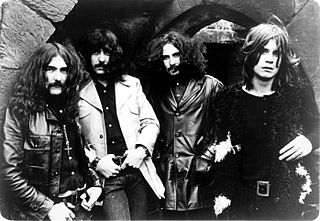
Black Sabbath were an English rock band formed in Birmingham in 1968 by guitarist Tony Iommi, drummer Bill Ward, bassist Geezer Butler and vocalist Ozzy Osbourne. They are often cited as pioneers of heavy metal music. The band helped define the genre with releases such as Black Sabbath (1970), Paranoid (1970) and Master of Reality (1971). The band had multiple line-up changes following Osbourne's departure in 1979 and Iommi is the only constant member throughout their history.
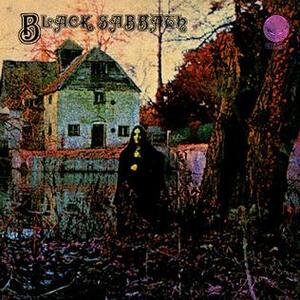
Black Sabbath is the debut studio album by English heavy metal band Black Sabbath, released on 13 February 1970 by Vertigo Records in the United Kingdom and Warner Bros. Records in the United States on 1 June 1970. The album is widely regarded as the first heavy metal album, and the opening track, "Black Sabbath", has been referred to as the first doom metal song.
Heavy metal is a genre of rock music that developed in the late 1960s and early 1970s, largely in the United Kingdom and United States. With roots in blues rock, psychedelic rock and acid rock, heavy metal bands developed a thick, monumental sound characterized by distorted guitars, extended guitar solos, emphatic beats and loudness.
American researchers discover the Madrid Codices by Leonardo da Vinci in the National Library of Spain.

The Madrid Codices I–II, are two manuscripts by Leonardo da Vinci which were discovered in the Biblioteca Nacional de España in Madrid in 1965 by Dr. Jules Piccus, Language Professor at the University of Massachusetts. The Madrid Codices I was finished during 1490 and 1499, and II from 1503 to 1505.

Leonardo di ser Piero da Vinci was an Italian polymath of the High Renaissance who was active as a painter, draughtsman, engineer, scientist, theorist, sculptor, and architect. While his fame initially rested on his achievements as a painter, he also became known for his notebooks, in which he made drawings and notes on a variety of subjects, including anatomy, astronomy, botany, cartography, painting, and paleontology. Leonardo is widely regarded to have been a genius who epitomized the Renaissance humanist ideal, and his collective works comprise a contribution to later generations of artists matched only by that of his younger contemporary, Michelangelo.

The Biblioteca Nacional de España is a major public library, the largest in Spain, and one of the largest in the world. It is located in Madrid, on the Paseo de Recoletos.
Geode prospectors near Olancha, California, discovered what they claimed to be a 500,000-year-old rock with a 1920s-era spark plug encased within.

A geode is a geological secondary formation within sedimentary and volcanic rocks. Geodes are hollow, vaguely spherical rocks, in which masses of mineral matter are secluded. The crystals are formed by the filling of vesicles in volcanic and subvolcanic rocks by minerals deposited from hydrothermal fluids; or by the dissolution of syn-genetic concretions and partial filling by the same or other minerals precipitated from water, groundwater, or hydrothermal fluids.
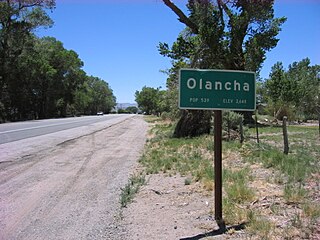
Olancha is a census designated place in Inyo County of the U.S. state of California. Olancha is located on U.S. Route 395 in California, 37 miles (60 km) south-southeast of Independence, at an elevation of 3658 feet. As of the 2010 census, the population was 192, up from 134 at the 2000 census.

The Coso artifact is an object claimed by its discoverers to be a spark plug encased in a geode. Discovered on February 13, 1961, by Wallace Lane, Virginia Maxey and Mike Mikesell while they were prospecting for geodes near the town of Olancha, California, it has long been claimed as an example of an out-of-place artifact. The artifact has been identified as a 1920s-era Champion spark plug.

A spark plug is a device for delivering electric current from an ignition system to the combustion chamber of a spark-ignition engine to ignite the compressed fuel/air mixture by an electric spark, while containing combustion pressure within the engine. A spark plug has a metal threaded shell, electrically isolated from a central electrode by a ceramic insulator. The central electrode, which may contain a resistor, is connected by a heavily insulated wire to the output terminal of an ignition coil or magneto. The spark plug's metal shell is screwed into the engine's cylinder head and thus electrically grounded. The central electrode protrudes through the porcelain insulator into the combustion chamber, forming one or more spark gaps between the inner end of the central electrode and usually one or more protuberances or structures attached to the inner end of the threaded shell and designated the side, earth, or ground electrode(s).
An allegedly 500,000-year-old rock is discovered near Olancha, California, US, that appears to anachronistically encase a spark plug.

The Coso artifact is an object claimed by its discoverers to be a spark plug encased in a geode. Discovered on February 13, 1961, by Wallace Lane, Virginia Maxey and Mike Mikesell while they were prospecting for geodes near the town of Olancha, California, it has long been claimed as an example of an out-of-place artifact. The artifact has been identified as a 1920s-era Champion spark plug.

Olancha is a census designated place in Inyo County of the U.S. state of California. Olancha is located on U.S. Route 395 in California, 37 miles (60 km) south-southeast of Independence, at an elevation of 3658 feet. As of the 2010 census, the population was 192, up from 134 at the 2000 census.

A spark plug is a device for delivering electric current from an ignition system to the combustion chamber of a spark-ignition engine to ignite the compressed fuel/air mixture by an electric spark, while containing combustion pressure within the engine. A spark plug has a metal threaded shell, electrically isolated from a central electrode by a ceramic insulator. The central electrode, which may contain a resistor, is connected by a heavily insulated wire to the output terminal of an ignition coil or magneto. The spark plug's metal shell is screwed into the engine's cylinder head and thus electrically grounded. The central electrode protrudes through the porcelain insulator into the combustion chamber, forming one or more spark gaps between the inner end of the central electrode and usually one or more protuberances or structures attached to the inner end of the threaded shell and designated the side, earth, or ground electrode(s).
African-American college students staged the first of the Nashville sit-ins at three lunch counters in Nashville, Tennessee, as part of a nonviolent direct-action campaign to end racial segregation in the U.S.

The Nashville sit-ins, which lasted from February 13 to May 10, 1960, were part of a protest to end racial segregation at lunch counters in downtown Nashville, Tennessee. The sit-in campaign, coordinated by the Nashville Student Movement and the Nashville Christian Leadership Council, was notable for its early success and its emphasis on disciplined nonviolence. It was part of a broader sit-in movement that spread across the southern United States in the wake of the Greensboro sit-ins in North Carolina.

A lunch counter is, in the US, a small restaurant, similar to a diner, where the patron sits on a stool on one side of the counter and the server or person preparing the food serves from the opposite side of the counter, where the kitchen or limited food preparation area is located. As the name suggests, they were primarily used for the lunch meal. Lunch counters were once commonly located inside retail variety stores and smaller department stores. The intent of the lunch counter in a store was to profit from serving hungry shoppers, and to attract people to the store so that they might buy merchandise.

Nashville is the capital city of the U.S. state of Tennessee and the seat of Davidson County. With a population of 689,447 at the 2020 U.S. census, Nashville is the most populous city in the state, 21st most-populous city in the U.S., and the fourth most populous city in the southeastern U.S. Located on the Cumberland River, the city is the center of the Nashville metropolitan area, which is one of the fastest growing in the nation.

In the United States, racial segregation is the systematic separation of facilities and services such as housing, healthcare, education, employment, and transportation on racial grounds. The term is mainly used in reference to the legally or socially enforced separation of African Americans from whites, but it is also used in reference to the separation of other ethnic minorities from majority and mainstream communities. While mainly referring to the physical separation and provision of separate facilities, it can also refer to other manifestations such as prohibitions against interracial marriage, and the separation of roles within an institution. Notably, in the United States Armed Forces up until 1948, black units were typically separated from white units but were still led by white officers.
With the success of a nuclear test codenamed "Gerboise Bleue", France becomes the fourth country to possess nuclear weapons.
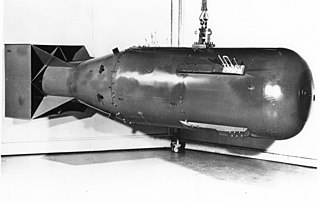
Nuclear weapons tests are experiments carried out to determine nuclear weapons' effectiveness, yield, and explosive capability. Testing nuclear weapons offers practical information about how the weapons function, how detonations are affected by different conditions, and how personnel, structures, and equipment are affected when subjected to nuclear explosions. However, nuclear testing has often been used as an indicator of scientific and military strength. Many tests have been overtly political in their intention; most nuclear weapons states publicly declared their nuclear status through a nuclear test.
Gerboise Bleue was the codename of the first French nuclear test. It was conducted by the Nuclear Experiments Operational Group (GOEN), a unit of the Joint Special Weapons Command on 13 February 1960, at the Saharan Military Experiments Centre near Reggane, French Algeria in the Sahara desert region of Tanezrouft, during the Algerian War. General Pierre Marie Gallois was instrumental in the endeavour, and earned the nickname of père de la bombe A.
Black college students stage the first of the Nashville sit-ins at three lunch counters in Nashville, Tennessee.

The Nashville sit-ins, which lasted from February 13 to May 10, 1960, were part of a protest to end racial segregation at lunch counters in downtown Nashville, Tennessee. The sit-in campaign, coordinated by the Nashville Student Movement and the Nashville Christian Leadership Council, was notable for its early success and its emphasis on disciplined nonviolence. It was part of a broader sit-in movement that spread across the southern United States in the wake of the Greensboro sit-ins in North Carolina.

A lunch counter is, in the US, a small restaurant, similar to a diner, where the patron sits on a stool on one side of the counter and the server or person preparing the food serves from the opposite side of the counter, where the kitchen or limited food preparation area is located. As the name suggests, they were primarily used for the lunch meal. Lunch counters were once commonly located inside retail variety stores and smaller department stores. The intent of the lunch counter in a store was to profit from serving hungry shoppers, and to attract people to the store so that they might buy merchandise.

Nashville is the capital city of the U.S. state of Tennessee and the seat of Davidson County. With a population of 689,447 at the 2020 U.S. census, Nashville is the most populous city in the state, 21st most-populous city in the U.S., and the fourth most populous city in the southeastern U.S. Located on the Cumberland River, the city is the center of the Nashville metropolitan area, which is one of the fastest growing in the nation.
Israel obtains four of the seven Dead Sea Scrolls.
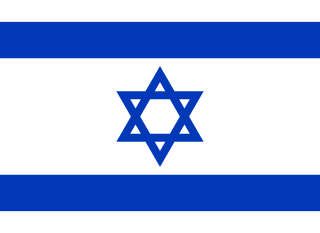
Israel, officially the State of Israel, is a country in Western Asia. It is situated on the southeastern shore of the Mediterranean Sea and the northern shore of the Red Sea, and shares borders with Lebanon to the north, Syria to the northeast, Jordan to the east, and Egypt to the southwest; it is also bordered by the Palestinian territories of the West Bank and the Gaza Strip to the east and west, respectively. Tel Aviv is the economic and technological center of the country, while its seat of government is in its proclaimed capital of Jerusalem, although Israeli sovereignty over East Jerusalem is unrecognized internationally.

The Dead Sea Scrolls are ancient Jewish and Hebrew religious manuscripts discovered in 1946/7 at the Qumran Caves in what was then Mandatory Palestine, near Ein Feshkha in the West Bank, on the northern shore of the Dead Sea. Dating from the 3rd century BCE to the 1st century CE, the Dead Sea Scrolls are considered to be a keystone in the history of archaeology with great historical, religious, and linguistic significance because they include the oldest surviving manuscripts of entire books later included in the biblical canons, along with deuterocanonical and extra-biblical manuscripts which preserve evidence of the diversity of religious thought in late Second Temple Judaism. At the same time they cast new light on the emergence of Christianity and of Rabbinic Judaism. Most of the scrolls are held by Israel in the Shrine of the Book at the Israel Museum, but their ownership is disputed by Jordan due to the Qumran Caves' history: following the End of the British Mandate for Palestine in 1947, Jordan occupied the area in the 1948 Arab-Israeli War, and Israel captured both it and several Scrolls claimed by Jordan in the 1967 Six Day War. As a result, some of the scrolls are still in Jordan and are now displayed at The Jordan Museum in Amman. Ownership of the scrolls is also contested by the State of Palestine.
Twenty-nine people are killed when Sabena Flight 503 crashes into Monte Terminillo near Rieti, Italy.

The crash of Sabena Flight 503 was an accident involving a Douglas DC-6 of the Belgian airline company Sabena which crashed into Monte Terminillo near Rieti, Italy, 100 km north east of Rome on 13 February 1955, killing all 29 people on board.

Monte Terminillo is a massif in the Monti Reatini, part of the Abruzzi Apennine range in central Italy. It is located some 20 km from Rieti and 100 km from Rome and has a highest altitude of 2,217 metres (7,274 ft).

Rieti is a town and comune in Lazio, central Italy, with a population of 47,700. It is the administrative seat of the province of Rieti and see of the diocese of Rieti, as well as the modern capital of the Sabina region.
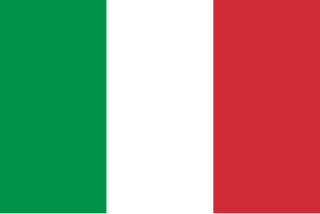
Italy, officially the Italian Republic, is a country located in the middle of the Mediterranean Sea, in Southern Europe; its territory largely coincides with the homonymous geographical region. Italy is also considered part of Western Europe. A unitary parliamentary republic with Rome as its capital and largest city, the country covers a total area of 301,230 km2 (116,310 sq mi) and shares land borders with France, Switzerland, Austria, Slovenia and the enclaved microstates of Vatican City and San Marino. Italy has a territorial exclave in Switzerland, Campione. With over 60 million inhabitants, Italy is the third-most populous member state of the European Union.
Frank Selvy becomes the only NCAA Division I basketball player ever to score 100 points in a single game.

Franklin Delano Selvy is an American former National Basketball Association (NBA) player who is best known for holding the record for the most points (100) in a Division I college basketball game. Born in Corbin, Kentucky, Selvy was an All-State basketball player at Corbin High School and was a teammate of College Football Hall of Fame inductee Roy Kidd. Selvy was the No. 1 overall pick in the 1954 NBA draft and was a two-time NBA All-Star, playing nine seasons.

NCAA Division I (D-I) is the highest level of intercollegiate athletics sanctioned by the National Collegiate Athletic Association (NCAA) in the United States, which accepts players globally. D-I schools include the major collegiate athletic powers, with large budgets, more elaborate facilities and more athletic scholarships than Divisions II and III as well as many smaller schools committed to the highest level of intercollegiate competition.
Korean War: Battle of Chipyong-ni, which represented the "high-water mark" of the Chinese incursion into South Korea, commences.

The Korean War was fought between North Korea and South Korea from 1950 to 1953. The war began on 25 June 1950 when North Korea invaded South Korea following clashes along the border and rebellions in South Korea. North Korea was supported by China and the Soviet Union while South Korea was supported by the United States and allied countries. The fighting ended with an armistice on 27 July 1953.

The Battle of Chipyong-ni, also known as the Battle of Dipingli, was a decisive battle of the Korean War, that took place from 13 to 15 February 1951 between US and French units of the US 23rd Infantry Regiment and various units of the Chinese People's Volunteer Army (PVA) around the village of Chipyong-ni. The result was a United Nations Command victory. The battle, along with the Third Battle of Wonju, has been called "the Gettysburg of the Korean War", and represents the "high-water mark" of the Chinese invasion of South Korea. Due to the ferocity of the Chinese attack and the heroism of the defenders, the battle has also been called "one of the greatest regimental defense actions in military history".
World War II: The Allies began a strategic bombing of Dresden, Germany, resulting in a lethal firestorm that killed tens of thousands of civilians.

World War II or the Second World War, often abbreviated as WWII or WW2, was a world war that lasted from 1939 to 1945. It involved the vast majority of the world's countries—including all of the great powers—forming two opposing military alliances: the Allies and the Axis powers. World War II was a total war that directly involved more than 100 million personnel from more than 30 countries.

The Allies, formally referred to as the United Nations from 1942, were an international military coalition formed during the Second World War (1939–1945) to oppose the Axis powers, led by Nazi Germany, Imperial Japan, and Fascist Italy. Its principal members by 1941 were the United Kingdom, United States, Soviet Union, and China.

The bombing of Dresden was a joint British and American aerial bombing attack on the city of Dresden, the capital of the German state of Saxony, during World War II. In four raids between 13 and 15 February 1945, 772 heavy bombers of the Royal Air Force (RAF) and 527 of the United States Army Air Forces (USAAF) dropped more than 3,900 tons of high-explosive bombs and incendiary devices on the city. The bombing and the resulting firestorm destroyed more than 1,600 acres (6.5 km2) of the city centre. An estimated 22,700 to 25,000 people were killed. Three more USAAF air raids followed, two occurring on 2 March aimed at the city's railway marshalling yard and one smaller raid on 17 April aimed at industrial areas.
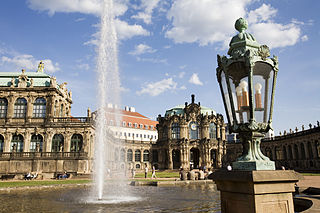
Dresden is the capital city of the German state of Saxony and its second most populous city, after Leipzig. It is the 12th most populous city of Germany, the fourth largest by area, and the third most populous city in the area of former East Germany, after Berlin and Leipzig. Dresden's urban area comprises the towns of Freital, Pirna, Radebeul, Meissen, Coswig, Radeberg and Heidenau and has around 790,000 inhabitants. The Dresden metropolitan area has approximately 1.34 million inhabitants.

A firestorm is a conflagration which attains such intensity that it creates and sustains its own wind system. It is most commonly a natural phenomenon, created during some of the largest bushfires and wildfires. Although the term has been used to describe certain large fires, the phenomenon's determining characteristic is a fire with its own storm-force winds from every point of the compass towards the storm's center, where the air is heated and then ascends.
World War II: The siege of Budapest concludes with the unconditional surrender of German and Hungarian forces to the Red Army.

World War II or the Second World War, often abbreviated as WWII or WW2, was a world war that lasted from 1939 to 1945. It involved the vast majority of the world's countries—including all of the great powers—forming two opposing military alliances: the Allies and the Axis powers. World War II was a total war that directly involved more than 100 million personnel from more than 30 countries.
The Siege of Budapest or Battle of Budapest was the 50-day-long encirclement by Soviet and Romanian forces of the Hungarian capital of Budapest, near the end of World War II. Part of the broader Budapest Offensive, the siege began when Budapest, defended by Hungarian and German troops, was encircled on 26 December 1944 by the Red Army and the Romanian Army. During the siege, about 38,000 civilians died through starvation, military action, and mass executions of Jews by the far-right Hungarian nationalist Arrow Cross Party. The city unconditionally surrendered on 13 February 1945. It was a strategic victory for the Allies in their push towards Berlin.

Nazi Germany was the German state between 1933 and 1945, when Adolf Hitler and the Nazi Party controlled the country, transforming it into a dictatorship. Under Hitler's rule, Germany quickly became a totalitarian state where nearly all aspects of life were controlled by the government. The Third Reich, meaning "Third Realm" or "Third Empire", alluded to the Nazi claim that Nazi Germany was the successor to the earlier Holy Roman Empire (800–1806) and German Empire (1871–1918). The Third Reich, which Hitler and the Nazis referred to as the Thousand-Year Reich, ended in May 1945 after just 12 years when the Allies defeated Germany, ending World War II in Europe.
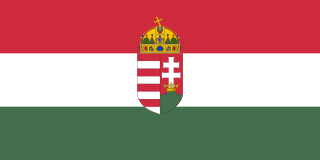
The Kingdom of Hungary, sometimes referred to as the Regency or the Horthy era, existed as a country from 1920 to 1946 under the rule of Regent Miklós Horthy, who nominally represented the Hungarian monarchy. In reality there was no king, and attempts by King Charles IV to return to the throne shortly before his death were prevented by Horthy.

The Workers' and Peasants' Red Army, often shortened to the Red Army, was the army and air force of the Russian Soviet Federative Socialist Republic and, after 1922, the Union of Soviet Socialist Republics. The army was established in January 1918. The Bolsheviks raised an army to oppose the military confederations of their adversaries during the Russian Civil War. Starting in February 1946, the Red Army, along with the Soviet Navy, embodied the main component of the Soviet Armed Forces; taking the official name of "Soviet Army", until its dissolution in 1991.
World War II: Royal Air Force bombers are dispatched to Dresden, Germany to attack the city with a massive aerial bombardment.

The Royal Air Force (RAF) is the United Kingdom's air and space force. It was formed towards the end of the First World War on 1 April 1918, becoming the first independent air force in the world, by regrouping the Royal Flying Corps (RFC) and the Royal Naval Air Service (RNAS). Following the Allied victory over the Central Powers in 1918, the RAF emerged as the largest air force in the world at the time. Since its formation, the RAF has taken a significant role in British military history. In particular, it played a large part in the Second World War where it fought its most famous campaign, the Battle of Britain.

Dresden is the capital city of the German state of Saxony and its second most populous city, after Leipzig. It is the 12th most populous city of Germany, the fourth largest by area, and the third most populous city in the area of former East Germany, after Berlin and Leipzig. Dresden's urban area comprises the towns of Freital, Pirna, Radebeul, Meissen, Coswig, Radeberg and Heidenau and has around 790,000 inhabitants. The Dresden metropolitan area has approximately 1.34 million inhabitants.

The bombing of Dresden was a joint British and American aerial bombing attack on the city of Dresden, the capital of the German state of Saxony, during World War II. In four raids between 13 and 15 February 1945, 772 heavy bombers of the Royal Air Force (RAF) and 527 of the United States Army Air Forces (USAAF) dropped more than 3,900 tons of high-explosive bombs and incendiary devices on the city. The bombing and the resulting firestorm destroyed more than 1,600 acres (6.5 km2) of the city centre. An estimated 22,700 to 25,000 people were killed. Three more USAAF air raids followed, two occurring on 2 March aimed at the city's railway marshalling yard and one smaller raid on 17 April aimed at industrial areas.
A jury in Flemington, New Jersey finds Bruno Hauptmann guilty of the 1932 kidnapping and murder of the Lindbergh baby, the son of Charles Lindbergh.

Flemington is a borough in Hunterdon County, New Jersey. It is the county seat of Hunterdon County. As of the 2010 U.S. census, the borough's population was 4,581, reflecting an increase of 381 (+9.1%) from the 4,200 counted in the 2000 census, which had in turn increased by 153 (+3.8%) from the 4,047 counted in the 1990 census. Most of the borough is located in the Amwell Valley and the Raritan Valley. Northwestern portions of the borough sit on the Hunterdon Plateau.

Bruno Richard Hauptmann was a German-born carpenter who was convicted of the abduction and murder of the 20-month-old son of aviator Charles Lindbergh and his wife Anne Morrow Lindbergh. The Lindbergh kidnapping became known as "The Crime of the Century". Both Hauptmann and his wife, Anna Hauptmann, proclaimed his innocence until he was executed in 1936 by electric chair at the Trenton State Prison.
1932 (MCMXXXII) was a leap year starting on Friday of the Gregorian calendar, the 1932nd year of the Common Era (CE) and Anno Domini (AD) designations, the 932nd year of the 2nd millennium, the 32nd year of the 20th century, and the 3rd year of the 1930s decade.
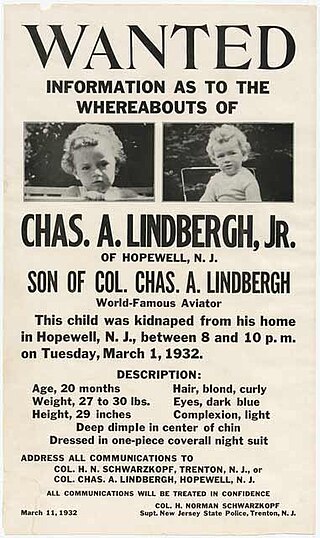
On March 1, 1932, Charles Augustus Lindbergh Jr., the 20-month-old son of aviators Charles Lindbergh and Anne Morrow Lindbergh, was abducted from his crib in the upper floor of the Lindberghs' home, Highfields, in East Amwell, New Jersey, United States. On May 12, the child's corpse was discovered by a truck driver by the side of a nearby road.

Charles Augustus Lindbergh was an American aviator, military officer, author, inventor, and activist. On May 20–21, 1927, Lindbergh made the first nonstop flight from New York City to Paris, a distance of 3,600 miles (5,800 km), flying alone for 33.5 hours. His aircraft, the Spirit of St. Louis, was designed and built by the Ryan Airline Company specifically to compete for the Orteig Prize for the first flight between the two cities. Although not the first transatlantic flight, it was the first solo transatlantic flight, the first nonstop transatlantic flight between two major city hubs, and the longest by over 1,900 miles (3,000 km). It is known as one of the most consequential flights in history and ushered in a new era of air transportation between parts of the globe.
The British Raj completes its transfer from Calcutta to New Delhi.

The British Raj was the rule of the British Crown on the Indian subcontinent; it is also called Crown rule in India, or Direct rule in India, and lasted from 1858 to 1947. The region under British control was commonly called India in contemporaneous usage and included areas directly administered by the United Kingdom, which were collectively called British India, and areas ruled by indigenous rulers, but under British paramountcy, called the princely states. The region was sometimes called the Indian Empire, though not officially.

Kolkata is the capital of the Indian state of West Bengal, on the eastern bank of the Hooghly River 80 km (50 mi) west of the border with Bangladesh. It is the primary business, commercial, and financial hub of Eastern India and the main port of communication for North-East India. According to the 2011 Indian census, Kolkata is the seventh-most populous city in India, with a population of 45 lakh (4.5 million) residents within the city limits, and a population of over 1.41 crore (14.1 million) residents in the Kolkata Metropolitan Area. It is the third-most populous metropolitan area in India. In 2021, the Kolkata metropolitan area crossed 1.5 crore (15 million) registered voters. The Port of Kolkata is India's oldest operating port and its sole major riverine port. Kolkata is regarded as the cultural capital of India. Kolkata is the second largest Bengali-speaking city after Dhaka. It has the highest number of nobel laureates among all cities in India.

New Delhi is the capital of India and a part of the National Capital Territory of Delhi (NCT). New Delhi is the seat of all three branches of the government of India, hosting the Rashtrapati Bhavan, Parliament House, and the Supreme Court of India. New Delhi is a municipality within the NCT, administrated by the NDMC, which covers mostly Lutyens' Delhi and a few adjacent areas. The municipal area is part of a larger administrative district, the New Delhi district.
The Negro National League is formed.
The first Negro National League (NNL) was one of the several Negro leagues that were established during the period in the United States when organized baseball was segregated. The league was formed in 1920 with former player Rube Foster as its president.
Copyright: In New York City the American Society of Composers, Authors and Publishers is established to protect the copyrighted musical compositions of its members.
A copyright is a type of intellectual property that gives its owner the exclusive right to copy, distribute, adapt, display, and perform a creative work, usually for a limited time. The creative work may be in a literary, artistic, educational, or musical form. Copyright is intended to protect the original expression of an idea in the form of a creative work, but not the idea itself. A copyright is subject to limitations based on public interest considerations, such as the fair use doctrine in the United States.

The American Society of Composers, Authors, and Publishers (ASCAP) is an American not-for-profit performance-rights organization (PRO) that collectively licenses the public performance rights of its members' musical works to venues, broadcasters, and digital streaming services.
The 13th Dalai Lama proclaims Tibetan independence following a period of domination by Manchu Qing dynasty and initiated a period of almost four decades of independence.

Ngawang Lobsang Thupten Gyatso Jigdral Chokley Namgyal, abbreviated to Thubten Gyatso was the 13th Dalai Lama of Tibet, enthroned during a turbulent era and the collapse of the Qing Empire. Referred to as "the Great Thirteenth", he is also known for redeclaring Tibet's national independence, and for his reform and modernization initiatives.

Tibet is a region in East Asia, covering much of the Tibetan Plateau and spanning about 2,500,000 km2 (970,000 sq mi). It is the traditional homeland of the Tibetan people. Also resident on the plateau are some other ethnic groups such as Monpa, Tamang, Qiang, Sherpa and Lhoba peoples and now also considerable numbers of Han Chinese and Hui settlers. Since 1951, the entire plateau has been under the administration of the People's Republic of China, a major portion in the Tibet Autonomous Region, and other portions in the Qinghai and Sichuan provinces.

Tibet was a de facto independent state between the collapse of the Manchu-led Qing dynasty in 1912 and its annexation by the People's Republic of China in 1951.
Thomas Edison observes Thermionic emission.

Thomas Alva Edison was an American inventor and businessman. He developed many devices in fields such as electric power generation, mass communication, sound recording, and motion pictures. These inventions, which include the phonograph, the motion picture camera, and early versions of the electric light bulb, have had a widespread impact on the modern industrialized world. He was one of the first inventors to apply the principles of organized science and teamwork to the process of invention, working with many researchers and employees. He established the first industrial research laboratory.

Thermionic emission is the liberation of electrons from an electrode by virtue of its temperature. This occurs because the thermal energy given to the charge carrier overcomes the work function of the material. The charge carriers can be electrons or ions, and in older literature are sometimes referred to as thermions. After emission, a charge that is equal in magnitude and opposite in sign to the total charge emitted is initially left behind in the emitting region. But if the emitter is connected to a battery, the charge left behind is neutralized by charge supplied by the battery as the emitted charge carriers move away from the emitter, and finally the emitter will be in the same state as it was before emission.
Work began on the covering of the Senne (pictured), burying the polluted main river of Brussels to allow for urban renewal in the centre of the city.

The covering of the Senne was the covering and later diverting of the main river of Brussels, Belgium, and the construction of public buildings and major boulevards in its place. Carried out between 1867 and 1871, it is one of the defining events in the history of Brussels.

The Senne or Zenne is a small river that flows through Brussels, left tributary of the Dijle/Dyle.

Urban renewal is a program of land redevelopment often used to address urban decay in cities. Urban renewal involves the clearing out of blighted areas in inner cities to clear out slums and create opportunities for higher class housing, businesses, and other developments.
Work begins on the covering of the Senne, burying Brussels's primary river and creating the modern central boulevards.

The covering of the Senne was the covering and later diverting of the main river of Brussels, Belgium, and the construction of public buildings and major boulevards in its place. Carried out between 1867 and 1871, it is one of the defining events in the history of Brussels.

Brussels, officially the Brussels-Capital Region, is a region of Belgium comprising 19 municipalities, including the City of Brussels, which is the capital of Belgium. The Brussels-Capital Region is located in the central portion of the country and is a part of both the French Community of Belgium and the Flemish Community, but is separate from the Flemish Region and the Walloon Region. Brussels is the most densely populated region in Belgium, and although it has the highest GDP per capita, it has the lowest available income per household. It covers 162 km2 (63 sq mi), a relatively small area compared to the two other regions, and has a population of over 1.2 million. The five times larger metropolitan area of Brussels comprises over 2.5 million people, which makes it the largest in Belgium. It is also part of a large conurbation extending towards Ghent, Antwerp, Leuven and Walloon Brabant, home to over 5 million people.
Italian unification: The Siege of Gaeta ends with the capitulation of the defending fortress, effectively bringing an end of the Kingdom of the Two Sicilies.

The unification of Italy, also known as the Risorgimento, was the 19th-century political and social movement that resulted in the consolidation of different states of the Italian Peninsula into a single state in 1861, the Kingdom of Italy. Inspired by the rebellions in the 1820s and 1830s against the outcome of the Congress of Vienna, the unification process was precipitated by the Revolutions of 1848, and reached completion in 1871 after the Capture of Rome and its designation as the capital of the Kingdom of Italy.

The siege of Gaeta was the concluding event of the war between the Kingdom of Sardinia and the Kingdom of the Two Sicilies, part of the unification of Italy. It started on 5 November 1860 and ended on 13 February 1861, and took place in Gaeta, in today's Southern Lazio (Italy).
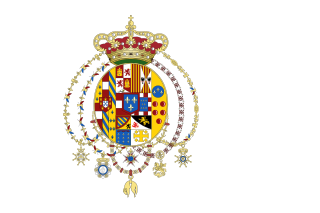
The Kingdom of the Two Sicilies was a kingdom in Southern Italy from 1816 to 1860. The kingdom was the largest sovereign state by population and size in Italy before Italian unification, comprising Sicily and all of the Italian Peninsula south of the Papal States, which covered most of the area of today's Mezzogiorno.
The delegation headed by Metropolitan bishop Andrei Șaguna hands out to the Emperor Franz Joseph I of Austria the General Petition of Romanian leaders in Transylvania, Banat and Bukovina, which demands that the Romanian nation be recognized.
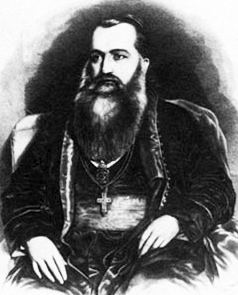
Andrei Șaguna was a Metropolitan bishop of the Romanian Orthodox Church in Transylvania, and one of the Romanian community political leaders in the Habsburg monarchy, especially active during the 1848 Revolution. He was an honorary member of the Romanian Academy.

Franz Joseph I or Francis Joseph I was Emperor of Austria, King of Hungary, and the other states of the Habsburg monarchy from 2 December 1848 until his death on 21 November 1916. In the early part of his reign, his realms and territories were referred to as the Austrian Empire, but were reconstituted as the dual monarchy of the Austro-Hungarian Empire in 1867. From 1 May 1850 to 24 August 1866, Franz Joseph was also President of the German Confederation.
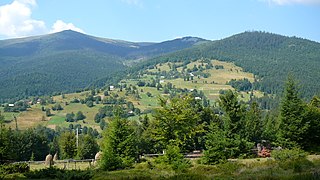
Transylvania is a historical and cultural region in Central Europe, encompassing central Romania. To the east and south its natural border is the Carpathian Mountains, and to the west the Apuseni Mountains. Broader definitions of Transylvania also include the western and northwestern Romanian regions of Crișana and Maramureș, and occasionally Banat.

Banat is a geographical and historical region that straddles Central and Eastern Europe and which is currently divided among three countries: the eastern part lies in western Romania ; the western part of Banat is in northeastern Serbia ; and a small northern part lies within southeastern Hungary.

Bukovina is a historical region, variously described as part of either Central or Eastern Europe. The region is located on the northern slopes of the central Eastern Carpathians and the adjoining plains, today divided between Romania and Ukraine.

The Romanians are a Romance-speaking ethnic group. Sharing a common Romanian culture and ancestry, and speaking the Romanian language, they live primarily in Romania and Moldova. The 2011 Romanian census found that just under 89% of Romania's citizens identified themselves as ethnic Romanians.
Treaty of Giyanti signed by VOC, Pakubuwono III and Prince Mangkubumi. The treaty divides the Javanese kingdom of Mataram into two: Sunanate of Surakarta and Sultanate of Yogyakarta.
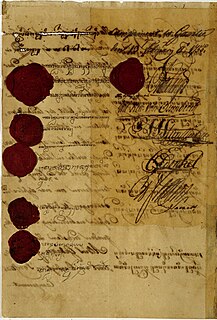
The Treaty of Giyanti was signed and ratified on February 13, 1755 between Prince Mangkubumi, the Dutch East India Company, and Sunan Pakubuwono III along with his allies. The accord officially divided the Sultanate of Mataram between Mangkubumi and Pakubuwono. The name "Giyanti" was taken from the location of the signing of the agreement, namely in Giyanti Village which is now located in Hamlet Kerten, Jantiharjo Village, southeast of Karanganyar, Central Java.

The United East India Company was a chartered company established on the 20th March 1602 by the States General of the Netherlands amalgamating existing companies into the first joint-stock company in the world, granting it a 21-year monopoly to carry out trade activities in Asia. Shares in the company could be bought by any resident of the United Provinces and then subsequently bought and sold in open-air secondary markets. It is sometimes considered to have been the first multinational corporation. It was a powerful company, possessing quasi-governmental powers, including the ability to wage war, imprison and execute convicts, negotiate treaties, strike its own coins, and establish colonies. They are also known for their international slave trade.
Pakubuwono III was the third Susuhunan. Also known as Sinuhun Paliyan Negari He was proclaimed by the Dutch as ruler of Mataram in 1749, but when the state was divided into the states of Surakarta and Yogyakarta in 1755, he was proclaimed as the first Susuhanan of Surakarta.

Hamengkubuwono I, born Raden Mas Sujana, was the first sultan of Yogyakarta. He reigned from 1755 to 1792.

The Sultanate of Mataram was the last major independent Javanese kingdom on the island of Java before it was colonised by the Dutch. It was the dominant political force radiating from the interior of Central Java from the late 16th century until the beginning of the 18th century.

Surakarta Sunanate was a Javanese monarchy centred in the city of Surakarta, in the province of Central Java, Indonesia.
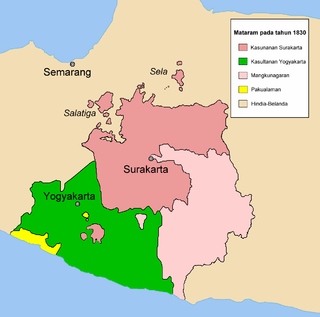
The Sultanate of Yogyakarta is a Javanese monarchy in Yogyakarta Special Region, in the Republic of Indonesia. The current head of the Sultanate is Hamengkubuwono X.
Parliament of Negrete between Mapuche and Spanish authorities in Chile bring an end to the Mapuche uprising of 1723–26.
The 1726 Parliament of Negrete was a diplomatic meeting between Mapuches and Spanish authorities held in Negrete. During the parliament a peace treaty was signed, bringing an end to a period of warfare that begun in with the Mapuche uprising of 1723.

The Mapuche are a group of indigenous inhabitants of present-day south-central Chile and southwestern Argentina, including parts of present-day Patagonia. The collective term refers to a wide-ranging ethnicity composed of various groups who shared a common social, religious, and economic structure, as well as a common linguistic heritage as Mapudungun speakers. Their influence once extended from Aconcagua Valley to Chiloé Archipelago and later spread eastward to Puelmapu, a land comprising part of the Argentine pampa and Patagonia. Today the collective group makes up over 80% of the indigenous peoples in Chile, and about 9% of the total Chilean population. The Mapuche are particularly concentrated in the Araucanía region. Many have migrated from rural areas to the cities of Santiago and Buenos Aires for economic opportunities.
The Mapuche uprising of 1723 was a rebellion of the Mapuche against the Spanish Empire and its colonial administration in present-day Chile. It began with the killing of Pascual Delgado by Mapuches and continued until Mapuche factions begun to sue for peace in 1725. The Spanish reinforced the fort of Purén, and most of the Spanish managed to find refuge in the various forts without being intercepted or harassed by Mapuches. On August Mapuche toki Vilumilla pushed north occupying Isla del Laja, that is the lands between Bío Bío and Laja rivers. The Spanish led by Manuel de Salamanca attacked a Mapuche encampment of warriors August 24, a day of heavy rain. The Mapuche initially fought with tenacity but came to believe they were being surrounded so they fled the scene.
Members of Clan MacDonald of Glencoe in the Scottish Highlands were massacred, allegedly for failing to pledge allegiance to the new monarchs, William III and Mary II.

The MacDonalds of Glencoe, also known as Clann Iain Abrach, was a Highland Scottish clan and a branch of the larger Clan Donald. They were named after Glen Coe. the MacDonalds of Glen Coe have resided in Glen Coe since at least the early 14th century, when they supported King Robert the Bruce. The MacIains were constantly involved in trouble with the law and with neighbouring clans for their consistent raiding, pillaging and cattle rustling. The clan had particular trouble with the neighbouring Clan Campbell. Their infamous feud gained notoriety in the coming generations, eventually leading to the Massacre of Glencoe in 1692. The clan soon took part in a series of Jacobite Uprisings in 1715 and 1745.

The Highlands is a historical region of Scotland. Culturally, the Highlands and the Lowlands diverged from the Late Middle Ages into the modern period, when Lowland Scots replaced Scottish Gaelic throughout most of the Lowlands. The term is also used for the area north and west of the Highland Boundary Fault, although the exact boundaries are not clearly defined, particularly to the east. The Great Glen divides the Grampian Mountains to the southeast from the Northwest Highlands. The Scottish Gaelic name of A' Ghàidhealtachd literally means "the place of the Gaels" and traditionally, from a Gaelic-speaking point of view, includes both the Western Isles and the Highlands.
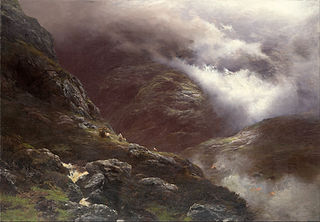
The Massacre of Glencoe took place in Glen Coe in the Highlands of Scotland on 13 February 1692. An estimated 30 members and associates of Clan MacDonald of Glencoe were killed by Scottish government forces, allegedly for failing to pledge allegiance to the new monarchs, William III and Mary II.

William III, also widely known as William of Orange, was the sovereign Prince of Orange from birth, Stadtholder of Holland, Zeeland, Utrecht, Guelders, and Overijssel in the Dutch Republic from the 1670s, and King of England, Ireland, and Scotland from 1689 until his death in 1702. As King of Scotland, he is known as William II. He is sometimes informally known as "King Billy" in Ireland and Scotland. His victory at the Battle of the Boyne in 1690 is commemorated by Unionists, who display orange colours in his honour. He ruled Britain alongside his wife and cousin, Queen Mary II, and popular histories usually refer to their reign as that of "William and Mary".

Mary II was Queen of England, Scotland, and Ireland, co-reigning with her husband, William III & II, from 1689 until her death in 1694.
Massacre of Glencoe: Almost 80 Macdonalds at Glen Coe, Scotland are killed early in the morning for not promptly pledging allegiance to the new king, William of Orange.

The Massacre of Glencoe took place in Glen Coe in the Highlands of Scotland on 13 February 1692. An estimated 30 members and associates of Clan MacDonald of Glencoe were killed by Scottish government forces, allegedly for failing to pledge allegiance to the new monarchs, William III and Mary II.

Clan Donald, also known as Clan MacDonald, is a Highland Scottish clan and one of the largest Scottish clans. The Lord Lyon King of Arms, the Scottish official with responsibility for regulating heraldry in that country, issuing new grants of coats of arms, and serving as the judge of the Court of the Lord Lyon, recognises under Scottish law the High Chief of Clan Donald. Historically the chiefs of the Clan Donald held the title of Lord of the Isles until 1493 and two of those chiefs also held the title of Earl of Ross until 1476.
Glen Coe is a glen of volcanic origins, in the Highlands of Scotland. It lies in the north of the county of Argyll, close to the border with the historic province of Lochaber, within the modern council area of Highland. Glen Coe is regarded as the home of Scottish mountaineering and is popular with hillwalkers and climbers.

William III, also widely known as William of Orange, was the sovereign Prince of Orange from birth, Stadtholder of Holland, Zeeland, Utrecht, Guelders, and Overijssel in the Dutch Republic from the 1670s, and King of England, Ireland, and Scotland from 1689 until his death in 1702. As King of Scotland, he is known as William II. He is sometimes informally known as "King Billy" in Ireland and Scotland. His victory at the Battle of the Boyne in 1690 is commemorated by Unionists, who display orange colours in his honour. He ruled Britain alongside his wife and cousin, Queen Mary II, and popular histories usually refer to their reign as that of "William and Mary".
Glorious Revolution: The English Parliament passed the Declaration of Right, proclaiming Mary Stuart and her husband William of Orange as co-rulers of England, Scotland and Ireland.

The Glorious Revolution, also known as the Glorieuze Overtocht or Glorious Crossing in the Netherlands, is the sequence of events leading to the deposition of King James II and VII of England and Scotland in November 1688, and his replacement by his daughter Mary II and her husband and James's nephew William III of Orange, de facto ruler of the Dutch Republic. A term first used by John Hampden in late 1689, it has been notable in the years since for having been described as the last successful invasion of England as well as an internal coup, with differing interpretations from the Dutch and English perspectives respectively.

The Declaration of Right, or Declaration of Rights, is a document produced by the English Parliament, following the 1688 Glorious Revolution. It sets out the wrongs committed by the exiled James II, the rights of English citizens, and the obligation of their monarch.

Mary II was Queen of England, Scotland, and Ireland, co-reigning with her husband, William III & II, from 1689 until her death in 1694.

William III, also widely known as William of Orange, was the sovereign Prince of Orange from birth, Stadtholder of Holland, Zeeland, Utrecht, Guelders, and Overijssel in the Dutch Republic from the 1670s, and King of England, Ireland, and Scotland from 1689 until his death in 1702. As King of Scotland, he is known as William II. He is sometimes informally known as "King Billy" in Ireland and Scotland. His victory at the Battle of the Boyne in 1690 is commemorated by Unionists, who display orange colours in his honour. He ruled Britain alongside his wife and cousin, Queen Mary II, and popular histories usually refer to their reign as that of "William and Mary".
William and Mary are proclaimed co-rulers of England.

William III, also widely known as William of Orange, was the sovereign Prince of Orange from birth, Stadtholder of Holland, Zeeland, Utrecht, Guelders, and Overijssel in the Dutch Republic from the 1670s, and King of England, Ireland, and Scotland from 1689 until his death in 1702. As King of Scotland, he is known as William II. He is sometimes informally known as "King Billy" in Ireland and Scotland. His victory at the Battle of the Boyne in 1690 is commemorated by Unionists, who display orange colours in his honour. He ruled Britain alongside his wife and cousin, Queen Mary II, and popular histories usually refer to their reign as that of "William and Mary".

Mary II was Queen of England, Scotland, and Ireland, co-reigning with her husband, William III & II, from 1689 until her death in 1694.
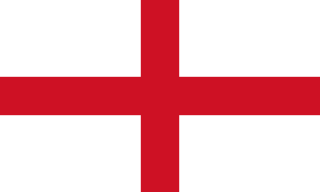
The Kingdom of England was a sovereign state on the island of Great Britain from 12 July 927, when it emerged from various Anglo-Saxon kingdoms, until 1 May 1707, when it united with Scotland to form the Kingdom of Great Britain.
The four-year-old Charles XI became King of Sweden upon his father's death.

Charles XI or Carl was King of Sweden from 1660 until his death, in a period of Swedish history known as the Swedish Empire (1611–1721).

The monarchy of Sweden is the monarchical head of state of Sweden, which is a constitutional and hereditary monarchy with a parliamentary system. There have been kings in what now is the Kingdom of Sweden for more than a millennium. Originally an elective monarchy, it became a hereditary monarchy in the 16th century during the reign of Gustav Vasa, though virtually all monarchs before that belonged to a limited and small number of families which are considered to be the royal dynasties of Sweden.

Charles X Gustav, also Carl Gustav, was King of Sweden from 1654 until his death. He was the son of John Casimir, Count Palatine of Zweibrücken-Kleeburg and Catherine of Sweden. After his father's death he also succeeded him as Pfalzgraf. He was married to Hedwig Eleonora of Holstein-Gottorp, who bore his son and successor, Charles XI. Charles X Gustav was the second Wittelsbach king of Sweden after the childless king Christopher of Bavaria (1441–1448) and he was the first king of the Swedish Caroline era, which had its peak during the end of the reign of his son, Charles XI. He led Sweden during the Second Northern War, enlarging the Swedish Empire. By his predecessor Christina, he was considered de facto Duke of Eyland (Öland), before ascending to the Swedish throne.
With the accession of young Charles XI of Sweden, his regents begin negotiations to end the Second Northern War.

Charles XI or Carl was King of Sweden from 1660 until his death, in a period of Swedish history known as the Swedish Empire (1611–1721).
A regent is a person appointed to govern a state pro tempore because the monarch is a minor, absent, incapacitated or unable to discharge the powers and duties of the monarchy, or the throne is vacant and the new monarch has not yet been determined. One variation is in the Monarchy of Liechtenstein, where a competent monarch may chose to assign regency to their of-age heir, handing over the majority of their responsibilities to prepare the heir for future succession. The rule of a regent or regents is called a regency. A regent or regency council may be formed ad hoc or in accordance with a constitutional rule. Regent is sometimes a formal title granted to a monarch's most trusted advisor or personal assistant. If the regent is holding their position due to their position in the line of succession, the compound term prince regent is often used; if the regent of a minor is their mother, she would be referred to as queen regent.

The Second Northern War (1655–60), was fought between Sweden and its adversaries the Polish–Lithuanian Commonwealth (1655–60), the Tsardom of Russia (1656–58), Brandenburg-Prussia (1657–60), the Habsburg monarchy (1657–60) and Denmark–Norway. The Dutch Republic waged an informal trade war against Sweden and seized the colony of New Sweden in 1655, but was not a recognized part of the Polish–Danish alliance.
The Clergy Act becomes law, excluding bishops of the Church of England from serving in the House of Lords.

The Clergy Act (1640), also known as the Bishops Exclusion Act, or the Clerical Disabilities Act, was an Act of Parliament, effective 13 February 1642.

A bishop is an ordained clergy member who is entrusted with a position of authority and oversight in a religious institution.

The Church of England is the established Christian church in England and the mother church of the international Anglican Communion. It traces its history to the Christian church recorded as existing in the Roman province of Britain by the 3rd century and to the 6th-century Gregorian mission to Kent led by Augustine of Canterbury.

The House of Lords, also known as the House of Peers, is the upper house of the Parliament of the United Kingdom. Membership is by appointment, heredity or official function. Like the House of Commons, it meets in the Palace of Westminster in London, England.
Galileo Galilei arrives in Rome for his trial before the Inquisition.

Galileo di Vincenzo Bonaiuti de' Galilei was an Italian astronomer, physicist and engineer, sometimes described as a polymath. Commonly referred to as Galileo, his name was pronounced. He was born in the city of Pisa, then part of the Duchy of Florence. Galileo has been called the "father" of observational astronomy, modern physics, the scientific method, and modern science.

Rome is the capital city of Italy. It is also the capital of the Lazio region, the centre of the Metropolitan City of Rome, and a special comune named Comune di Roma Capitale. With 2,860,009 residents in 1,285 km2 (496.1 sq mi), Rome is the country's most populated comune and the third most populous city in the European Union by population within city limits. The Metropolitan City of Rome, with a population of 4,355,725 residents, is the most populous metropolitan city in Italy. Its metropolitan area is the third-most populous within Italy. Rome is located in the central-western portion of the Italian Peninsula, within Lazio (Latium), along the shores of the Tiber. Vatican City is an independent country inside the city boundaries of Rome, the only existing example of a country within a city. Rome is often referred to as the City of Seven Hills due to its geographic location, and also as the "Eternal City". Rome is generally considered to be the "cradle of Western civilization and Christian culture", and the centre of the Catholic Church.

The Inquisition was a group of institutions within the Catholic Church whose aim was to combat heresy, conducting trials of suspected heretics. Studies of the records have found that the overwhelming majority of sentences consisted of penances, but convictions of unrepentant heresy were handed over to the secular courts, which generally resulted in execution or life imprisonment. The Inquisition had its start in the 12th-century Kingdom of France, with the aim of combating religious deviation, particularly among the Cathars and the Waldensians. The inquisitorial courts from this time until the mid-15th century are together known as the Medieval Inquisition. Other groups investigated during the Medieval Inquisition, which primarily took place in France and Italy, include the Spiritual Franciscans, the Hussites, and the Beguines. Beginning in the 1250s, inquisitors were generally chosen from members of the Dominican Order, replacing the earlier practice of using local clergy as judges.
Catherine Howard, the fifth wife of Henry VIII of England, is executed for adultery.

Catherine Howard, also spelled Katheryn Howard, was Queen of England from 1540 until 1542 as the fifth wife of Henry VIII. She was the daughter of Lord Edmund Howard and Joyce Culpeper, a cousin to Anne Boleyn, and the niece of Thomas Howard, 3rd Duke of Norfolk. Thomas Howard was a prominent politician at Henry's court, and he secured her a place in the household of Henry's fourth wife, Anne of Cleves, where she caught the King's interest. She married him on 28 July 1540 at Oatlands Palace in Surrey, just 19 days after the annulment of his marriage to Anne. He was 49, and she was between 15 and 21 years old.

Henry VIII was King of England from 22 April 1509 until his death in 1547. Henry is best known for his six marriages, and for his efforts to have his first marriage annulled. His disagreement with Pope Clement VII about such an annulment led Henry to initiate the English Reformation, separating the Church of England from papal authority. He appointed himself Supreme Head of the Church of England and dissolved convents and monasteries, for which he was excommunicated by the pope. Henry is also known as "the father of the Royal Navy" as he invested heavily in the navy and increased its size from a few to more than 50 ships, and established the Navy Board.
Adultery is extramarital sex that is considered objectionable on social, religious, moral, or legal grounds. Although the sexual activities that constitute adultery vary, as well as the social, religious, and legal consequences, the concept exists in many cultures and is similar in Christianity, Judaism and Islam. Adultery is viewed by many jurisdictions as offensive to public morals, undermining the marriage relationship.
Challenge of Barletta: Tournament between 13 Italian and 13 French knights near Barletta.

The Challenge of Barletta was a duel fought in the countryside of Trani, near Barletta, southern Italy, on 13 February 1503, during the Third Italian War, on the plains between Corato and Andria.

Barletta is a city, comune of Apulia, in south eastern Italy. Barletta is the capoluogo, together with Andria and Trani, of the Province of Barletta-Andria-Trani. It has a population of around 94,700 citizens.
The Treaty of Westminster is finalised between Edward IV of England and the Scottish Lord of the Isles.

The Treaty of Westminster was signed on 13 February 1462 between Edward IV of England of the House of York and the Scottish John of Islay, Earl of Ross, Lord of the Isles. The agreement proposed that if Scotland was conquered by England, the lands north of the Scottish sea would be divided between the Lord of the Isles and the Earl of Douglas to be held from the crown of England, while the Earl of Douglas would hold Scotland south of the Firth.

Edward IV was King of England from 4 March 1461 to 3 October 1470, then again from 11 April 1471 until his death in 1483. He was a central figure in the Wars of the Roses, a series of civil wars in England fought between the Yorkist and Lancastrian factions between 1455 and 1487.

The Lord of the Isles or King of the Isles (Scottish Gaelic: Triath nan Eilean or Rìgh Innse Gall) is a title of Scottish nobility with historical roots that go back beyond the Kingdom of Scotland. It began with Somerled in the 12th century and thereafter the title was held by a series of his descendants, the Norse-Gaelic rulers of the Isle of Man and Argyll and the islands of Scotland in the Middle Ages. They wielded sea-power with fleets of galleys (birlinns). Although they were, at times, nominal vassals of the Kings of Norway, Ireland, or Scotland, the island chiefs remained functionally independent for many centuries. Their territory included much of Argyll, the Isles of Arran, Bute, Islay, the Isle of Man, Hebrides, Knoydart, Ardnamurchan, and the Kintyre peninsula. At their height they were the greatest landowners and most powerful lords after the Kings of England and Scotland.
The central tower of Ely Cathedral falls on the night of 12th–13th.

Ely Cathedral, formally the Cathedral Church of the Holy and Undivided Trinity, is an Anglican cathedral in the city of Ely, Cambridgeshire, England.
Emperor Otto I and Pope John XII co-sign the Diploma Ottonianum, recognizing John as ruler of Rome.

Otto I, traditionally known as Otto the Great, was East Frankish king from 936 and Holy Roman emperor from 962 until his death in 973. He was the oldest son of Henry the Fowler and Matilda of Ringelheim.
Pope John XII, born Octavian, was the bishop of Rome and ruler of the Papal States from 16 December 955 to his death in 964. He was related to the counts of Tusculum, a powerful Roman family which had dominated papal politics for over half a century. He became pope in his late teenage years or early twenties. In 960, he clashed with the Lombards to the south. Unable to control Rome easily, he sought help from King Otto I of Germany and crowned him emperor. John XII's pontificate became infamous for the alleged depravity and worldliness with which he conducted his office. He soon fell out with Otto, but died before Otto succeeded in his attempt to depose him.
The Diploma Ottonianum was an agreement between Pope John XII and Otto I, King of Germany and Italy. It confirmed the earlier Donation of Pepin, granting control of the Papal States to the Popes, regularizing Papal elections, and clarifying the relationship between the Popes and the Holy Roman Emperors.

Rome is the capital city of Italy. It is also the capital of the Lazio region, the centre of the Metropolitan City of Rome, and a special comune named Comune di Roma Capitale. With 2,860,009 residents in 1,285 km2 (496.1 sq mi), Rome is the country's most populated comune and the third most populous city in the European Union by population within city limits. The Metropolitan City of Rome, with a population of 4,355,725 residents, is the most populous metropolitan city in Italy. Its metropolitan area is the third-most populous within Italy. Rome is located in the central-western portion of the Italian Peninsula, within Lazio (Latium), along the shores of the Tiber. Vatican City is an independent country inside the city boundaries of Rome, the only existing example of a country within a city. Rome is often referred to as the City of Seven Hills due to its geographic location, and also as the "Eternal City". Rome is generally considered to be the "cradle of Western civilization and Christian culture", and the centre of the Catholic Church.
Kadir Topbaş, Turkish politician (b. 1945) deaths

Kadir Topbaş was a Turkish architect, businessperson and politician who served as Mayor of Istanbul from 2004 to 2017.
Henrik, Prince Consort of Denmark, French-born Danish royal (b. 1934) deaths

Prince Henrik of Denmark was the husband of Margrethe II of Denmark. He served as her royal consort from Margrethe's accession on 14 January 1972 until his death.
Ricardo Arias Calderón, Panamanian politician (b. 1933) deaths
Ricardo Arias Calderón was a Panamanian politician who served as First Vice President from 1989 to 1992. A Catholic who studied at Yale and the Sorbonne, Arias returned to Panama in the 1960s to work for political reform. He went on to become the president of the Christian Democratic Party of Panama and a leading opponent of the military government of Manuel Noriega. In 1984, he ran as a candidate for Second Vice President on the ticket of three-time former president Arnulfo Arias, but they were defeated by pro-Noriega candidate Nicolás Ardito Barletta.
Aileen Hernandez, American union organizer and activist (b. 1926) deaths

Aileen Hernandez was an African-American union organizer, civil rights activist, and women's rights activist. She served as the president of the National Organization for Women (NOW) between 1970 and 1971, and was the first woman to serve on the Equal Employment Opportunity Commission.
Seijun Suzuki, Japanese filmmaker (b. 1923) deaths

Seijun Suzuki , born Seitaro Suzuki , was a Japanese filmmaker, actor, and screenwriter. His films are known for their jarring visual style, irreverent humour, nihilistic cool and entertainment-over-logic sensibility. He made 40 predominately B-movies for the Nikkatsu Company between 1956 and 1967, working most prolifically in the yakuza genre. His increasingly surreal style began to draw the ire of the studio in 1963 and culminated in his ultimate dismissal for what is now regarded as his magnum opus, Branded to Kill (1967), starring notable collaborator Joe Shishido. Suzuki successfully sued the studio for wrongful dismissal, but he was blacklisted for 10 years after that. As an independent filmmaker, he won critical acclaim and a Japanese Academy Award for his Taishō trilogy, Zigeunerweisen (1980), Kagero-za (1981) and Yumeji (1991).
Kim Jong-nam, North Korean politician (b. 1971) deaths

Kim Jong-nam was the eldest son of North Korean leader Kim Jong-il. From roughly 1994 to 2001, he was considered the heir apparent to his father. He was thought to have fallen out of favour after embarrassing the regime in 2001 with a failed attempt to visit Tokyo Disneyland with a false passport, although Kim himself said his loss of favour had been due to advocating reform.
E-Dubble, American rapper (b. 1982) deaths
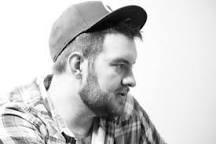
Evan Sewell Wallace best known by his stage name E-Dubble, often stylized e-dubble, or shortened to e-dub, was an American rapper. He was best known for his Freestyle Friday series in which he released a new song each Friday throughout 2010, with one final unofficial release in 2012. He was the founder of Black Paisley Records.
O. N. V. Kurup, Indian poet and academic (b. 1931) deaths

Ottaplakkal Neelakandan Velu Kurup was a Malayalam poet and lyricist from Kerala, India, who won the Jnanpith Award, the highest literary award in India for the year 2007. He received the awards Padma Shri in 1998 and Padma Vibhushan in 2011, the fourth and second highest civilian honours from the Government of India. In 2007 he was awarded an Honorary Doctorate by University of Kerala, Trivandrum. O. N. V. was known for his leftist leaning. He was a leader of All India Students Federation (AISF). He died on 13 February 2016 at KIMS hospital in Thiruvananthapuram due to age-related illnesses, aged 84.
Antonin Scalia, American lawyer and judge, Associate Justice of the Supreme Court of the United States (b. 1936) deaths
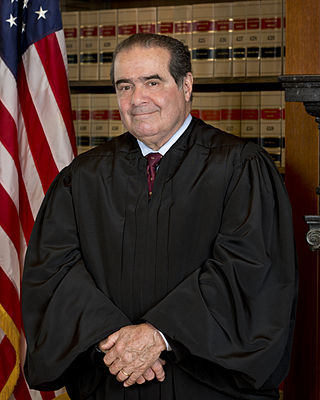
Antonin Gregory Scalia was an American jurist who served as an associate justice of the Supreme Court of the United States from 1986 until his death in 2016. He was described as the intellectual anchor for the originalist and textualist position in the U.S. Supreme Court's conservative wing. For catalyzing an originalist and textualist movement in American law, he has been described as one of the most influential jurists of the twentieth century, and one of the most important justices in the history of the Supreme Court. Scalia was posthumously awarded the Presidential Medal of Freedom in 2018 by President Donald Trump, and the Antonin Scalia Law School at George Mason University was named in his honor.

An associate justice of the Supreme Court of the United States is any member of the Supreme Court of the United States other than the chief justice of the United States. The number of associate justices is eight, as set by the Judiciary Act of 1869.
Faith Bandler, Australian activist and author (b. 1918) deaths

Faith Bandler was an Australian civil rights activist of South Sea Islander and Scottish-Indian heritage. A campaigner for the rights of Indigenous Australians and South Sea Islanders, she was best known for her leadership in the campaign for the 1967 referendum on Aboriginal Australians.
Stan Chambers, American journalist and actor (b. 1923) deaths

Stanley Holroyd "Stan" Chambers was an American television reporter who worked for KTLA in Los Angeles from 1947 to 2010.
Balu Mahendra, Sri Lankan-Indian director, cinematographer, and screenwriter (b. 1939) deaths
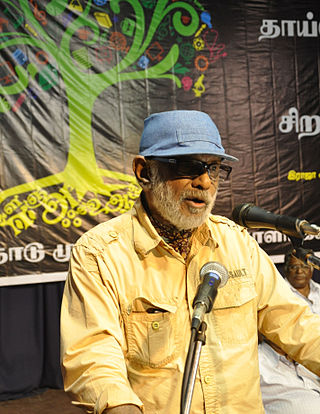
Balanathan Benjamin Mahendran, commonly known as Balu Mahendra, was a Sri Lankan-born Indian cinematographer, director, screenwriter and film editor who worked predominantly in Tamil cinema. Widely regarded as an auteur, Mahendra usually scripted and edited his films apart from shooting them. He was the recipient of six National Film Awards, five Filmfare Awards South and several state government awards.
Richard Møller Nielsen, Danish footballer and manager (b. 1937) deaths
Richard Møller Nielsen was a Danish football player and manager. He coached the Denmark national football team that won the UEFA Euro 1992 tournament. In 1995, he was awarded a gold version of the Medal of Merit. He was the father of Tommy Møller Nielsen.
Ralph Waite, American actor and activist (b. 1928) deaths

Ralph Waite was an American actor, best known for his lead role as John Walton Sr. on The Waltons (1972–1981), which he occasionally directed. He also had recurring roles in NCIS as Jackson Gibbs, the father of Leroy Jethro Gibbs, and Bones, as Seeley Booth's grandfather. Waite had supporting roles in movies such as Cool Hand Luke (1967), Five Easy Pieces (1970), The Grissom Gang (1971), The Bodyguard (1992), and Cliffhanger (1993).
Gerry Day, American journalist and screenwriter (b. 1922) deaths
Gerry Day was an American screenwriter. She was also a newspaper reporter for the Hollywood Citizen News in the mid-1940s.
Miles J. Jones, American pathologist and physician (b. 1952) deaths

Miles James Alfred Jones, Jr., M.D. was a forensic pathologist who became one of the most notorious physician-abusers of internet-mediated services. He was also cited for contempt of the U.S. Congress for failure to appear before it concerning his activities in the sale of fetal body parts. He was eventually imprisoned in the Federal Corrections System for failure to pay U.S. income taxes for two years.
Pieter Kooijmans, Dutch judge and politician, Minister of Foreign Affairs for The Netherlands (b. 1933) deaths
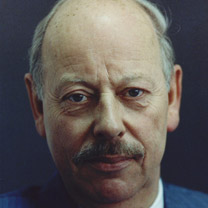
Pieter Hendrik "Peter" Kooijmans was a Dutch politician, jurist, and diplomat. He was of the defunct Anti-Revolutionary Party (ARP), which later merged into the Christian Democratic Appeal (CDA) party. From 1993 to 1994, he served as Foreign Minister of the Netherlands, succeeding Hans van den Broek. In 1995, he returned to his former position as Professor of Public International Law at the University of Leiden, serving until his appointment to the International Court of Justice. He was granted the honorary title of Minister of State on 13 July 2007.
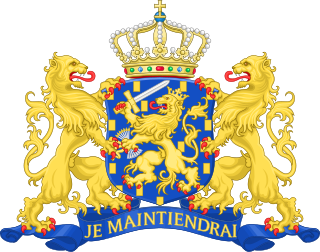
The Ministry of Foreign Affairs is the Netherlands' ministry responsible for foreign relations, foreign policy, international development, international trade, diaspora and matters dealing with the European Union, NATO and the Benelux Union. The ministry was created in 1798, as the Department of Foreign Affairs of the Batavian Republic. In 1876, it became the Ministry of Foreign Affairs.
Andrée Malebranche, Haitian artist (b. 1916) deaths

Andrée Malebranche was an Afro-Haitian painter and art instructor. She has works included in the collections of the Musée d'Art Haïtien and was recognized by the Haitian government for her contributions to the development of Haitian painting.
Yuko Tojo, Japanese activist and politician (b. 1939) deaths
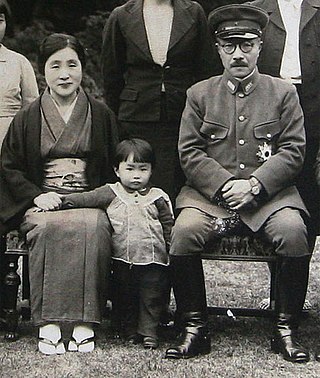
Yuko Tojo was a Japanese ultra-nationalist politician, Imperial Japanese apologist, and brief political hopeful. She was the granddaughter of General Hideki Tōjō, the Japanese wartime prime minister who was convicted as a Class A war criminal and hanged after World War II in 1948.
Russell Arms, American actor and singer (b. 1920) deaths

Russell Lee Arms was an American actor and singer.
Louise Cochrane, American-English screenwriter and producer (b. 1918) deaths

Louise Cochrane was an American-born writer and television producer best known for creating the BBC Children's TV programme Rag, Tag and Bobtail in the early 1950s. She also wrote a series of career guidance books for young people and a biography of the 12th-century philosopher Adelard of Bath.
Daniel C. Gerould, American playwright and academic (b. 1928) deaths
Daniel Charles Gerould was the Lucille Lortel Distinguished Professor of Theatre and Comparative Literature at the CUNY Graduate Center and Director of Publications of the Martin E. Segal Theatre Center. A scholar, teacher, translator, editor, and playwright, Gerould was a specialist in US melodrama, Central and Eastern European theatre of the twentieth century, and fin-de-siècle European avant-garde performance. Gerould was one of the world’s most recognized “Witkacologists,” a leading scholar and translator of the work of Polish playwright, novelist, painter, and philosopher Stanisław Ignacy Witkiewicz ("Witkacy"). Gerould was best known for introducing English-language audiences to the writings of Witkiewicz through such work as Stanisław I. Witkiewicz, The Beelzebub Sonata: Plays, Essays, Documents, Witkacy: Stanisław Ignacy Witkiewicz as an Imaginative Writer, The Witkiewicz Reader, and his original translations of most of Witkiewicz’s plays.
Lucille Clifton, American poet and academic (b. 1936) deaths

Lucille Clifton was an American poet, writer, and educator from Buffalo, New York. From 1979 to 1985 she was Poet Laureate of Maryland. Clifton was a finalist twice for the Pulitzer Prize for poetry.
Dale Hawkins, American singer-songwriter and guitarist (b. 1936) deaths
Delmar Allen "Dale" Hawkins was a pioneer American rock singer, songwriter, and rhythm guitarist who was often called the architect of swamp rock boogie. Ronnie Hawkins was his cousin.
Edward Upward, English author and educator (b. 1903) deaths

Edward Falaise Upward, FRSL was a British novelist and short story writer who, prior to his death, was believed to be the UK's oldest living author. Initially gaining recognition amongst the Auden Group as a highly imaginative surrealist writer, in the 1930s he joined the Communist Party of Great Britain, after which his writing shifted towards Marxist realism. His literary career spanned over eighty years.
Kon Ichikawa, Japanese director, producer, and screenwriter (b. 1915) deaths

Kon Ichikawa was a Japanese film director and screenwriter. His work displays a vast range in genre and style, from the anti-war films The Burmese Harp (1956) and Fires on the Plain (1959), to the documentary Tokyo Olympiad (1965), which won two BAFTA Film Awards, and the 19th-century revenge drama An Actor's Revenge (1963). His film Odd Obsession (1959) won the Jury Prize at the 1960 Cannes Film Festival.
Elizabeth Jolley, English-Australian author and academic (b. 1923) deaths

Monica Elizabeth Jolley AO was an English-born Australian writer who settled in Western Australia in the late 1950s and forged an illustrious literary career there. She was 53 when her first book was published, and she went on to publish fifteen novels, four short story collections and three non-fiction books, publishing well into her 70s and achieving significant critical acclaim. She was also a pioneer of creative writing teaching in Australia, counting many well-known writers such as Tim Winton among her students at Curtin University.
Charlie Norwood, American captain and politician (b. 1941) deaths
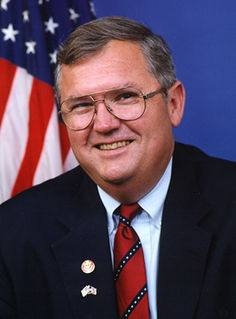
Charles Whitlow Norwood Jr. was an American politician who served as a Republican member of the United States House of Representatives from 1995 until his death in 2007. At the time of his death, Norwood was the representative of the 10th District of Georgia.
Richard Gordon Wakeford, English air marshal (b. 1922) deaths
Air Marshal Sir Richard Gordon Wakeford, was an officer in the Royal Air Force for 36 years, from 1941 to 1977. Beginning as a pilot of flying boats with Coastal Command, he became a flying instructor, and commanded the Queen's Flight. After various operational commands, his last post was as Deputy Chief of Defence (Intelligence) at the UK Ministry of Defence.
P. F. Strawson, English philosopher and author (b. 1919) deaths

Sir Peter Frederick Strawson was an English philosopher. He was the Waynflete Professor of Metaphysical Philosophy at the University of Oxford from 1968 to 1987. Before that, he was appointed as a college lecturer at University College, Oxford, in 1947, and became a tutorial fellow the following year, until 1968. On his retirement in 1987, he returned to the college and continued working there until shortly before his death. His portrait was painted by the artists Muli Tang and Daphne Todd.
Nelson Briles, American baseball player and sportscaster (b. 1943) deaths
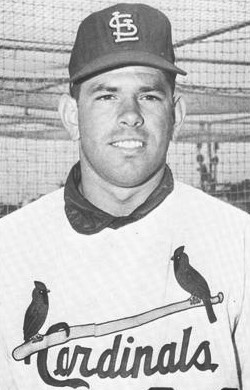
Nelson Kelley Briles was a Major League Baseball pitcher. A hard thrower whose best pitch was a slider, he exhibited excellent control. Briles batted and threw right-handed. He was a starting pitcher on World Series champions with the St. Louis Cardinals in 1967 and Pittsburgh Pirates in 1971.
Lúcia Santos, Portuguese nun (b. 1907) deaths

Lúcia de Jesus Rosa dos Santos, OCD, also known as Lúcia of Fátima and by her religious name Maria Lúcia of Jesus and of the Immaculate Heart, was a Portuguese Catholic Discalced Carmelite nun, one of the three children, along with her cousins Francisco and Jacinta Marto, who claimed to have witnessed Marian apparitions in Fátima in 1917.
François Tavenas, Canadian engineer and academic (b. 1942) deaths
François Tavenas, was a Canadian engineer and academic.
Zelimkhan Yandarbiyev, Chechen politician, 2nd President of the Chechen Republic of Ichkeria (b. 1952) deaths

Zelimkhan Abdulmuslimovich Yandarbiyev was a Chechen writer and politician, who served as acting president of the breakaway Chechen Republic of Ichkeria between 1996 and 1997. Yandarbiyev was deemed by UN a suspected associate of Al-Qaida extremist group, and is the first of Chechen leader to be named part of Al-Qaida terrorist network. In 2004, Yandarbiyev was assassinated while in exile in Qatar.

The president of Ichkeria, formally the president of the Chechen Republic of Ichkeria was the head of the Chechen Republic of Ichkeria from 1991 to 2007, the Islamic Republic that existed until the victory of the Russian Federation in the Second Chechen War.
Kid Gavilán, Cuban-American boxer (b. 1926) deaths

Gerardo González, better known in the boxing world as Kid Gavilan, was a Cuban boxer. Gavilán was the former undisputed welterweight champion from 1951 to 1954 having simultaneously held the NYSAC, WBA, and The Ring welterweight titles. The Boxing Writers Association of America named him Fighter of the Year in 1953. Gavilán was voted by The Ring magazine as the 26th greatest fighter of the last 80 years. Gavilán was a 1966 inductee to The Ring magazine's Boxing Hall of Fame, and was inducted into the International Boxing Hall of Fame in the inaugural class of 1990.
Walt Whitman Rostow, American economist; 7th United States National Security Advisor (b. 1916) deaths
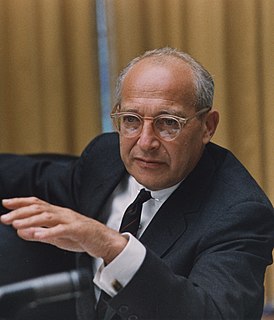
Walt Whitman Rostow was an American economist, professor and political theorist who served as National Security Advisor to President of the United States Lyndon B. Johnson from 1966 to 1969.

The Assistant to the President for National Security Affairs (APNSA), commonly referred to as the National Security Advisor (NSA), is a senior aide in the Executive Office of the President, based at the West Wing of the White House. The National Security Advisor serves as the principal advisor to the President of the United States on all national security issues. The National Security Advisor is appointed by the President and does not require confirmation by the United States Senate. An appointment of a three- or four-star General to the role requires Senate confirmation to maintain that rank in the new position. The National Security Advisor participates in meetings of the National Security Council (NSC) and usually chairs meetings of the Principals Committee of the NSC with the Secretary of State and Secretary of Defense. The NSA also sits on the Homeland Security Council (HSC).The National Security Advisor is supported by NSC staff who produce classified research and briefings for the National Security Advisor to review and present, either to the National Security Council or directly to the President.
Waylon Jennings, American singer-songwriter and guitarist (b. 1937) deaths

Waylon Arnold Jennings was an American singer, songwriter, musician, and actor. He pioneered the Outlaw Movement in country music.
Kaapo Kakko, Finnish ice hockey player births

Kaapo Kakko is a Finnish professional ice hockey forward for the New York Rangers of the National Hockey League (NHL). Kakko was selected second overall by the Rangers in the 2019 NHL Entry Draft. Kakko plays right wing, but also has experience playing at center. He made his professional debut playing with TPS of the Finnish Liiga.
Anders Aalborg, Canadian educator and politician (b. 1914) deaths
Anders Olav Aalborg was a teacher and a politician from Alberta, Canada. He served in the Legislative Assembly of Alberta from 1948 to 1971 as a member of the Social Credit caucus, and served in the cabinets of Premier Ernest Manning and Harry Strom from 1952 to 1971.
James Cooke Brown, American sociologist and author (b. 1921) deaths
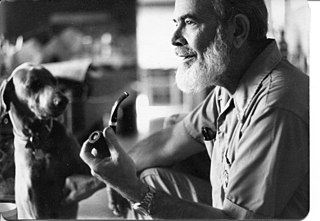
James Cooke Brown was an American sociologist and science fiction author. He is notable for creating the artificial language Loglan and for designing the Parker Brothers board game Careers.
John Leake, English soldier (b. 1949) deaths
John Steven Leake was an English recipient of the Distinguished Service Medal whilst working for the Navy, Army and Air Force Institutes (NAAFI), one of only twelve to be issued to the British forces during the Falklands War. Prior to working for the NAAFI, he worked in private security and was a soldier in the Devonshire and Dorset Regiment of the British Army.
Robert Klark Graham, American eugenicist and businessman (b. 1906) deaths
Robert Klark Graham was an American eugenicist and businessman who made millions by developing shatterproof plastic eyeglass lenses and who later founded the Repository for Germinal Choice, a sperm bank for geniuses, in the hope of implementing a eugenics program.
Mark Krasnosel'skii, Russian-Ukrainian mathematician and academic (b. 1920) deaths

Mark Alexandrovich Krasnoselsky was a Soviet, Russian and Ukrainian mathematician renowned for his work on nonlinear functional analysis and its applications.
Martin Balsam, American actor (b. 1919) deaths

Martin Henry Balsam was an American actor who had a prolific career in character roles in film, in theatre, and on television. An early member of the Actors Studio, he began his career on the New York stage, winning a Tony Award for Best Actor in a Play for Robert Anderson’s You Know I Can't Hear You When the Water's Running (1968). He won the Academy Award for Best Supporting Actor for his performance in A Thousand Clowns (1965).
Memphis Depay, Dutch footballer births

Memphis Depay, also known simply as Memphis, is a Dutch professional footballer who plays as a forward for La Liga club Barcelona and the Netherlands national team.
Nikolay Bogolyubov, Ukrainian-Russian mathematician and physicist (b. 1909) deaths

Nikolay Nikolayevich Bogolyubov, also transliterated as Bogoliubov and Bogolubov, was a Soviet and Russian mathematician and theoretical physicist known for a significant contribution to quantum field theory, classical and quantum statistical mechanics, and the theory of dynamical systems; he was the recipient of the 1992 Dirac Medal.
Eliaquim Mangala, French footballer births

Eliaquim Hans Mangala is a French professional footballer who plays as a centre-back.
Junior Roqica, Australian-Fijian rugby league player births

Vitale Junior Roqica is a Fiji international rugby league footballer who plays as a prop or second-row forward.
Vianney, French singer births

Vianney Bureau, better known by the mononym Vianney, is a French singer-songwriter. At 24 years old he won the award for performing artist of the year at the "Victoires de la musique 2016" one year after having been named in the up and coming category of the "Victoires de la musique 2015". His debut album Idées blanches was certified platinum. His second album was released on 25 November 2016 and was certified double platinum.
Arno Breker, German sculptor and illustrator (b. 1900) deaths
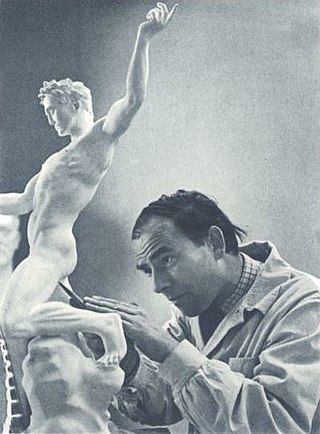
Arno Breker was a German architect and sculptor who is best known for his public works in Nazi Germany, where they were endorsed by the authorities as the antithesis of degenerate art. He was made official state sculptor, and exempted from military service. One of his better known statues is Die Partei, representing the spirit of the Nazi Party that flanked one side of the carriage entrance to Albert Speer's new Reich Chancellery.
Rodrigo Possebon, Brazilian footballer births
Rodrigo Pereira Possebon is a professional footballer who last played as a midfielder for V.League 1 side Hồ Chí Minh City.
Wayne Hays, American lieutenant and politician (b. 1911) deaths

Wayne Levere Hays was an American politician who served as a U.S. Representative of Ohio, in the Democratic Party, from 1949 to 1976. He resigned from Congress after a much-publicized sex scandal.
Ryan Goins, American baseball player births

Ryan Matthew Goins is an American professional baseball second baseman and shortstop who is a free agent. He has previously played in Major League Baseball (MLB) for the Toronto Blue Jays, Kansas City Royals, and Chicago White Sox.
Eddy Pettybourne, New Zealand-Samoan rugby league player births
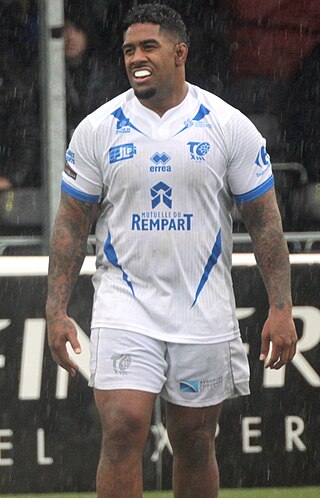
Edward Pettybourne is a former professional rugby league footballer who last played as a prop for the Keighley Cougars. He played at international level for Samoa and the United States.
Eljero Elia, Dutch footballer births

Eljero George Rinaldo Elia is a Dutch professional footballer who plays as a winger.
Luke Moore, English footballer births
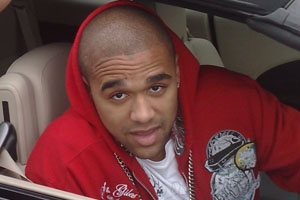
Luke Isaacc Moore is an English former professional footballer who played as a striker. Moore represented England at England U21 level and is the younger brother of former professional footballer Stefan Moore.
Aqib Talib, American football player births

Aqib Talib is a former American football cornerback. He played college football at the University of Kansas, where he received consensus All-American honors, and was drafted by the Tampa Bay Buccaneers in the first round of the 2008 NFL Draft. Talib also played for the New England Patriots, Denver Broncos, and Los Angeles Rams, winning Super Bowl 50 with Denver. In 2020, he made his debut as an analyst for NFL on Fox.
Yuri Ivask, Russian-American poet and critic (b. 1907) deaths

Yuri Pavlovich Ivask was a Russian Empire born Estonian poet and literary critic; in his later years an American scholar of Russian literature.
Kwak Ji-min, South Korean actress births
Kwak Ji-min is a South Korean actress. She is best known overseas for her leading role in the Kim Ki-duk film Samaritan Girl, for which she won Best New Actress at the 2004 Busan Film Critics Awards.
Hinkelien Schreuder, Dutch swimmer births
Hinkelien Schreuder is a former butterfly, freestyle and backstroke swimmer from The Netherlands, who also competed in the medley events. Schreuder won the Olympic gold medal in the 4×100 freestyle relay at the 2008 Olympics in Beijing, and a silver in the same event at the 2012 Summer Olympics. She is a former world record holder in the 100 m individual medley, and former European record holder in the 50 m butterfly short course.
Cheong Eak Chong, Singaporean entrepreneur (b. 1888) deaths

Cheong Eak Chong was a Chinese businessman of She ethnicity. He was born in Anxi County in Fujian in 1888, but left China in 1921 for Singapore. He began his business career there as a goldsmith, later diversifying into finance and opening a bank with offices in Hong Kong and focused his investments in the real estate and tourism industries in Singapore and Hong Kong, establishing a property empire whose eventual flagship was the Hong Fok Corporation. Throughout his career, Cheong contributed to poverty relief and development in his home county of Anxi, and he is commemorated in the names of a number of public institutions in Fujian.
Mike Nickeas, Canadian baseball player births

Michael James Nickeas is a former professional baseball catcher. Nickeas played four seasons in Major League Baseball (MLB) with the New York Mets and Toronto Blue Jays.
Anna Watkins, English rower births

Anna Rose Watkins MBE PhD is a British rower.
Even Helte Hermansen, Norwegian guitarist and composer births

Even Helte Hermansen is a Norwegian guitarist, known from several orchestras playing experimental jazz.
Michael Turner, American football player births

Michael Turner is a former American football running back who played in the National Football League (NFL). He was drafted by the San Diego Chargers in the fifth round of the 2004 NFL Draft and also played for the Atlanta Falcons. He played college football at Northern Illinois.
Luisão, Brazilian footballer births

Ânderson Luís da Silva, known as Luisão, is a Brazilian former professional footballer who played as a centre back.
Carlos Cotto, Puerto Rican-American wrestler and boxer births

Carlos Omar Cotto Cruz is a Puerto Rican professional wrestler and boxer. As a wrestler, he perform under the alias of El Chicano and has performed mostly for the International Wrestling Association and the World Wrestling Council. While performing for the first, Cotto became the only person to win all eligible championships, later becoming a Universal Heavyweight Champion in the second. Locally, he has held the main title of a promotion nine times. Abroad, Cotto has worked for AAA in 2010 and Consejo Mundial de Lucha Libre in 2016.
David Janssen, American actor (b. 1931) deaths
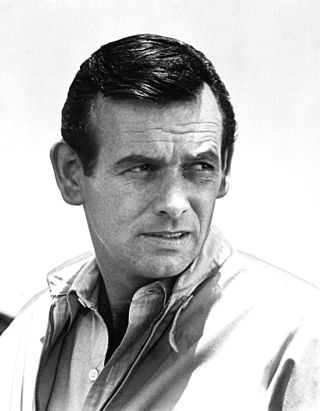
David Janssen was an American film and television actor who is best known for his starring role as Richard Kimble in the television series The Fugitive (1963–1967). Janssen also had the title roles in three other series: Richard Diamond, Private Detective; Harry O; and O'Hara, U.S. Treasury.
Anders Behring Breivik, Norwegian murderer births

Fjotolf Hansen, better known by his birth name Anders Behring Breivik and by his pseudonym Andrew Berwick, is a Norwegian far-right domestic terrorist, known for committing the 2011 Norway attacks on 22 July 2011. On that day, he killed eight people by detonating a van bomb at Regjeringskvartalet in Oslo, then killed 69 participants of a Workers' Youth League (AUF) summer camp in a mass shooting on the island of Utøya.
Rafael Márquez, Mexican footballer births

Rafael Márquez Álvarez is a Mexican former professional footballer and current head coach of Spanish team Barcelona Atlètic. Nicknamed El Káiser, he is regarded as the best defender in Mexico's history and one of the best Mexican players of all time.
Rachel Reeves, English economist and politician, Shadow Secretary of State for Work and Pensions births

Rachel Jane Reeves is a British politician and economist serving as Shadow Chancellor of the Exchequer since 2021. A member of the Labour Party, she has been Member of Parliament for Leeds West since 2010.

The Shadow Secretary of State for Work and Pensions is an office within British politics held by a member of His Majesty's Loyal Opposition. The duty of the office holder is to scrutinise the actions of the government's Secretary of State for Work and Pensions and develop alternative policies. The office holder, currently Jonathan Ashworth, is a member of the Shadow Cabinet.
Mena Suvari, American actress and fashion designer births

Mena Alexandra Suvari is an American actress, producer, fashion designer and model. After beginning her career as a model and guest-starring on several television shows, she made her film debut in the 1997 drama Nowhere.
Niklas Bäckström, Finnish ice hockey player births

Niklas Oskar Bäckström is a Finnish former professional ice hockey goaltender and current goaltending coach for the Columbus Blue Jackets. He played ten seasons for the Minnesota Wild and Calgary Flames in the National Hockey League (NHL), during which he won both the William M. Jennings Trophy and Roger Crozier Saving Grace Award. He also has won both Urpo Ylönen trophy and Jari Kurri trophy twice. Bäckström is a Swedish-speaking Finn, but also speaks Finnish.
Philippe Jaroussky, French countertenor births

Philippe Jaroussky is a French countertenor. He began his musical career with the violin, winning an award at the Versailles conservatory, and then took up the piano before turning to singing.
Randy Moss, American football player and coach births

Randy Gene Moss is an American former professional football wide receiver who played in the National Football League (NFL) for 14 seasons with the Minnesota Vikings, Oakland Raiders, New England Patriots, Tennessee Titans and the San Francisco 49ers. Widely regarded as one of the greatest and most talented wide receivers of all time, he holds the NFL single-season touchdown reception record, as well as the NFL single-season touchdown reception record for a rookie. All-time, Moss ranks second in career touchdown receptions as well as fourth in career receiving yards. Moss possessed much superior speed, size, and leaping ability over most of his defenders, often securing contested catches by physically overpowering them. The term "mossed", referring to this ability, became a common term in football lexicon.
Jörg Bergmeister, German race car driver births

Jörg Bergmeister is a former racing driver from Germany and an ambassador of Porsche.
Shannon Nevin, Australian rugby league player births
Shannon Nevin is an Australian former professional rugby league footballer who played with the Manly-Warringah Sea Eagles and the Balmain Tigers in the National Rugby League (NRL) and its predecessor the Australian Rugby League (ARL).
Murtala Mohammed, Nigerian general and politician, 4th President of Nigeria (b. 1938) deaths
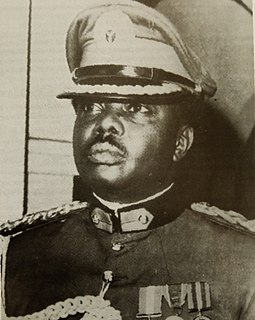
Murtala Ramat Muhammad pronunciation was a Nigerian general who led the 1966 Nigerian counter-coup in overthrowing the Johnson Aguiyi-Ironsi military regime and featured prominently during the Nigerian Civil War and thereafter ruled over Nigeria from 30 July 1975 until his assassination on 13 February 1976. This period in Nigerian history, from the Northern counter-coup victory to Murtala's death, is commonly associated with the institutionalization of the military in politics.

The president of the Federal Republic of Nigeria is the head of state and head of government of the Federal Republic of Nigeria. The president directs the executive branch of the federal government and is the commander-in-chief of the Nigerian Armed Forces.
Lily Pons, French-American soprano and actress (b. 1904) deaths
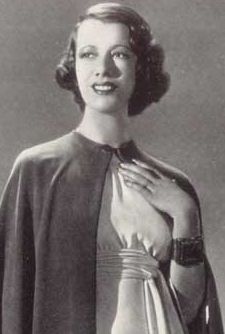
Alice Joséphine Pons, known professionally as Lily Pons, was a French-American operatic soprano and actress who had an active career from the late 1920s through the early 1970s. As an opera singer, she specialized in the coloratura soprano repertoire and was particularly associated with the title roles in Lakmé and Lucia di Lammermoor. In addition to appearing as a guest artist with many opera houses internationally, Pons enjoyed a long association with the Metropolitan Opera in New York City, where she performed nearly 300 times between 1931 and 1960.
Ben Collins, English race car driver births

Ben Lievesley Collins is a racing driver from Bristol, England. He has competed in motor racing since 1994 in many categories, from Formula Three and Indy Lights to sportscars, GT racing and stock cars.
Katie Hopkins, English media personality and columnist births

Katie Olivia Hopkins is an English media personality, columnist, far-right political commentator, and former businesswoman. She was a contestant on the third series of The Apprentice in 2007; following further appearances in the media, she became a columnist for British national newspapers, including The Sun (2013–2015) and MailOnline (2015–2017). In 2015, she hosted her own television talk show If Katie Hopkins Ruled the World, and appeared on the fifteenth series of Celebrity Big Brother, finishing as runner-up. The following year, Hopkins became a presenter for the talk radio station LBC and underwent major brain surgery to treat her epilepsy. In 2021, she joined the UK Independence Party (UKIP).
André Beaufre, French general (b. 1902) deaths

André Beaufre was a French Army officer and military strategist who attained the rank of Général d'Armée before his retirement in 1961.
Fonzworth Bentley, American rapper and actor births

Derek Watkins, known professionally as Fonzworth Bentley, is an American rapper, actor, television presenter, and author. He is perhaps best known for being Sean Combs' former personal valet and assistant, as first seen in Making the Band 2, and was the host of MTV's From G's to Gents. He was born in Atlanta, Georgia.
Robbie Williams, English singer-songwriter births

Robert Peter Williams is an English singer and songwriter. He found fame as a member of the pop group Take That from 1990 to 1995, and achieved commercial success after launching a solo career in 1996. His debut studio album, Life thru a Lens, was released in 1997, and included his signature song, "Angels". His second album, I've Been Expecting You, featured the songs "Millennium" and "She's the One", his first number one singles. His discography includes seven UK No. 1 singles, and all but one of his 14 studio albums have reached No. 1 in the UK. Six of his albums are among the top 100 biggest-selling albums in the UK, with two of them in the top 60, and he gained a Guinness World Record in 2006 for selling 1.6 million tickets in a single day during his Close Encounters Tour.
Marinus Jan Granpré Molière, Dutch architect and educator (b. 1883) deaths

Marinus Jan Granpré Molière was a Dutch architect. His work was part of the architecture event in the art competition at the 1924 Summer Olympics.
Virgilijus Alekna, Lithuanian discus thrower births
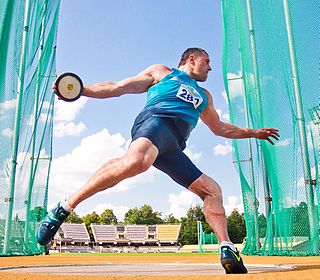
Virgilijus Alekna is a Lithuanian former discus thrower and politician. He won medals at the 2000, 2004 and 2008 Olympics, including two golds.
Charlie Garner, American football player births
Charlie Garner III is a former American football running back in the National Football League. He was drafted by the Philadelphia Eagles in the second round of the 1994 NFL Draft. He played college football at Tennessee.
Sonia Evans, English singer-songwriter births

Sonia Evans, known mononymously as Sonia, is an English pop singer from Skelmersdale, near Liverpool. She had a 1989 UK number one hit "You'll Never Stop Me Loving You" and became the first female UK artist to achieve five top 20 hit singles from one album. She represented the United Kingdom in the 1993 Eurovision Song Contest, where she finished second with the song "Better the Devil You Know". Between 1989 and 1993, she had 11 UK Top 30 hits, including "Listen to Your Heart" (1989), "Counting Every Minute" (1990) and "Only Fools " (1991). In 1994, she starred as Sandy in a West End revival of the musical Grease, while on television she appeared as Bunty in the 1998 BBC comedy series The Lily Savage Show.
Mats Sundin, Swedish ice hockey player births
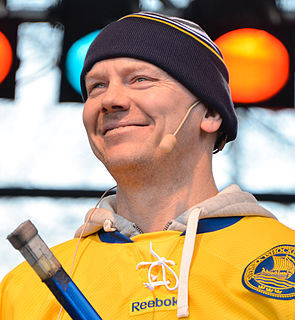
Mats Johan Sundin is a Swedish former professional ice hockey player who played the majority of his career in the National Hockey League (NHL), retiring in 2009. Originally drafted first overall in 1989, Sundin played his first four seasons in the NHL with the Quebec Nordiques. He was then traded to the Toronto Maple Leafs in 1994, where he played the majority of his career, serving 11 seasons as team captain. At the end of the 2007–08 season, Sundin was the longest-serving non-North American-born captain in NHL history. Sundin last played for the Vancouver Canucks in the 2008–09 season before announcing his retirement on 30 September 2009. He appeared in the Stanley Cup playoffs in 10 of his 18 seasons.
Todd Williams, American baseball player births

Todd Michael Williams is an American former professional baseball relief pitcher. He attended East Syracuse-Minoa High School graduating in 1989. He then attended Onondaga Community College before signing a professional baseball contract with the Los Angeles Dodgers of the Major League Baseball (MLB) in 1991. Over the course of his professional career Williams played for 10 different organizations, including all or parts of eight seasons in the Major Leagues. He is a retired 18-year professional baseball player, with eight years of Major League Baseball experience. Williams was also a member of the USA Baseball team three separate years, with the highlight of winning a Gold Medal in the 2000 Summer Olympics held in Sydney, Australia.
Karoline Krüger, Norwegian singer-songwriter and pianist births
Karoline Krüger is a Norwegian singer, actress and composer.
Joyce DiDonato, American soprano and actress births

Joyce DiDonato is an American lyric-coloratura mezzo-soprano. She is notable for her interpretations of operas and concert works in the 19th-century romantic era in addition to works by Handel and Mozart.
Bryan Thomas Schmidt, American science fiction author and editor births

Bryan Thomas Schmidt is an American science fiction author and editor. He has edited fifteen anthologies, a space opera trilogy, and an ongoing, near-future police procedural series set in Kansas City, Missouri. He wrote a non-fiction book on how to write a novel. He was a finalist, with Jennifer Brozek, for the 2015 Hugo Award for Best Professional Editor for the anthology Shattered Shields. His anthology, Infinite Stars, was nominated for the 2018 Locus Award for Best Anthology.
Kelly Hu, American actress births
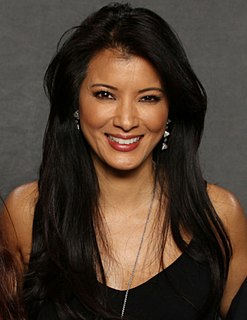
Kelly Ann Hu is an American actress, voice artist, former fashion model and beauty queen who was Miss Teen USA 1985 and Miss Hawaii USA 1993. Hu starred as Dr. Rae Chang on the American television soap opera Sunset Beach and as Michelle Chan on the American television police drama series Nash Bridges. She has starred in numerous films including The Scorpion King (2002) as Cassandra, Cradle 2 the Grave (2003) as Sona, X2 as Yuriko Oyama / Lady Deathstrike (2003), The Tournament (2009) as Lai Lai Zhen, and White Frog (2012).
Mae Marsh, American actress (b. 1895) deaths

Mae Marsh was an American film actress with a career spanning over 50 years.
Portia White, Canadian opera singer (b. 1911) deaths
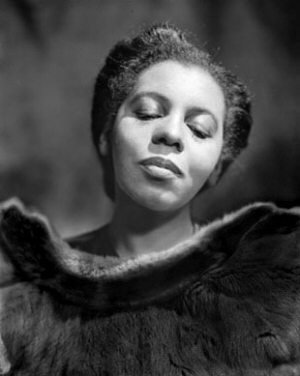
Portia May White was a Canadian contralto, known for becoming the first Black Canadian concert singer to achieve international fame. Growing up as part of her father's church choir in Halifax, Nova Scotia, White competed in local singing competitions as a teenager and later trained at the Halifax Conservatory of Music. In 1941 and 1944, she made her national and international debuts as a singer, receiving critical acclaim for her performances of both classical European music and African-American spirituals. White later completed tours throughout Europe, the Caribbean, and Central and South America.
Stanimir Stoilov, Bulgarian footballer and coach births

Stanimir Stoilov is a former Bulgarian footballer and current head coach of Levski Sofia. He was the manager of Litex Lovech, the Bulgarian national team, FC Astana and the national team of Kazakhstan.
Yoshisuke Aikawa, entrepreneur, businessman, and politician, founded Nissan Motor Company (b. 1880) deaths

Yoshisuke Aikawa was a Japanese entrepreneur, businessman, and politician, noteworthy as the founder and first president of the Nissan zaibatsu (1931–1945), one of Japan's most powerful business conglomerates around the time of the Second World War.

Nissan Motor Co., Ltd. , trading as Nissan Motor Corporation and often shortened to Nissan, is a Japanese multinational automobile manufacturer headquartered in Nishi-ku, Yokohama, Japan. The company sells its vehicles under the Nissan, Infiniti, and Datsun brands, with in-house performance tuning products labelled Nismo. The company traces back to the beginnings of the 20th century, with the Nissan zaibatsu, now called Nissan Group.
Abelardo L. Rodríguez, substitute president of Mexico (1932-1934) (b. 1889) deaths

Abelardo Rodríguez Luján, commonly known as Abelardo L. Rodríguez was the Substitute President of Mexico from 1932 to 1934. He completed the term of President Pascual Ortiz Rubio after his resignation, during the period known as the Maximato. Former President Plutarco Elías Calles then held considerable de facto political power, without being president himself. However, Rodríguez was more successful than Ortiz Rubio had been in asserting presidential power against Calles's influence. To date, Rodríguez is the only Mexican to have been brigadier general, president, and governor of two different states.
Neal McDonough, American actor and producer births

Neal McDonough is an American actor. He is known for his portrayal of Lieutenant Lynn "Buck" Compton in the HBO miniseries Band of Brothers (2001), Deputy District Attorney David McNorris on played the Tinman on Sci-Fi channel’s miniseries “Tinman.Boomtown (2002–2003), and a main cast role as Dave Williams in Season 5 of Desperate Housewives (2008–2009). He has also appeared in films such as Star Trek: First Contact, Minority Report, Walking Tall, and as Dum Dum Dugan in various Marvel Cinematic Universe films and TV series. In the DC Arrowverse, he has appeared as Damien Darhk in the TV series Arrow, Legends of Tomorrow, and The Flash. He had a major role in Suits for several seasons (2014–2019) and played Malcolm Beck on Yellowstone (2019).
Jeff Waters, Canadian guitarist, songwriter, and producer births

Jeff Waters is a Canadian guitarist and the founder and bandleader of the metal band Annihilator. He was born and resides in Ottawa, Ontario. Waters has owned Watersound Studios Inc. since 1994 and from 2003 until 2018, in Ottawa, Ontario, and now in the UK.
Freedom Williams, American rapper and singer births
Frederick B. Williams, better known by his stage name Freedom Williams, is an American rapper, singer and songwriter, who gained fame as the lead vocalist on C+C Music Factory's biggest hits.
Peter O'Neill, Papua New Guinean accountant and politician, 7th Prime Minister of Papua New Guinea births
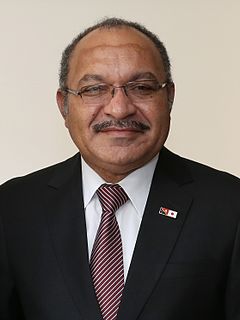
Peter Charles Paire O'Neill is a Papua New Guinean politician who served as the seventh Prime Minister of Papua New Guinea from 2011 to 2019. From 2002 until the present he served as Member of Parliament for Ialibu-Pangia. He occupied several positions as a Cabinet minister before being elected as Prime Minister. He is the leader of the Papua New Guinea National Congress. Towards the end of his tenure, he avoided a vote of no confidence by resigning his position, and was succeeded by James Marape as prime minister. O'Neill won the Ialibu-Pangia seat in 2022 in the first round with a large majority. This is unusual in PNG politics.

The prime minister of the Independent State of Papua New Guinea is Papua New Guinea's head of government, consequent on being the leader of the party or coalition with majority support in the National Parliament. The prime minister serves as the head of his party, the head of the coalition government, and the chairman of the National Executive Council.
Stephen Bowen, American engineer, captain, and astronaut births

Stephen Gerard "Steve" Bowen is a United States Navy submariner and a NASA astronaut; he was the second submariner to travel into space. Bowen has been on three spaceflights, all of which were Space Shuttle missions to the International Space Station. His first mission, STS-126, took place in November 2008, and his second was STS-132 in May 2010.
Ylva Johansson, Swedish educator and politician, Swedish Minister of Employment births

Ylva Julia Margareta Johansson is a Swedish politician who has been serving as European Commissioner for Home Affairs since 2019. She previously served in the government of Sweden as Minister for Schools from 1994 to 1998, as Minister for Welfare and Elderly Healthcare from 2004 to 2006, and as Minister for Employment from 2014 to 2019. She has been a member of the Swedish Riksdag since 2006.
The Ministry of Employment is a ministry in the Swedish government responsible for labour market, labour law and the work environment. The Ministry is also responsible for the work of advancing gender equality and human rights at national level. Moreover, the Ministry is responsible for efforts to increase integration, combat segregation, racism and discrimination, and strengthen the rights of children and LGBT people.
Paulino Alcántara, Filipino-Spanish footballer and manager (b. 1896) deaths

Paulino Alcántara Riestrá was a football player and manager who played as a forward. Born in the Philippines, he spent most of his playing career at Barcelona, and also represented Catalonia, the Philippines and Spain internationally.
Werner Heyde, German psychiatrist and academic (b. 1902) deaths

Werner Heyde was a German psychiatrist. He was one of the main organizers of Nazi Germany's T-4 Euthanasia Program.
Aníbal Acevedo Vilá, Puerto Rican lawyer and politician births
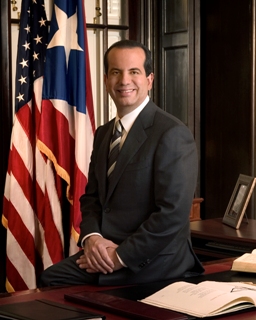
Aníbal Salvador Acevedo Vilá is a Puerto Rican politician and lawyer. He served as the governor of Puerto Rico from 2005 to 2009. He is a Harvard University alumnus and a graduate of the University of Puerto Rico School of Law, where he obtained his Juris Doctor degree. Acevedo Vilá has held various public service positions in the Puerto Rico government under the Popular Democratic Party, serving as a member of the House of Representatives of Puerto Rico (1993–2001) and as the 17th Resident Commissioner (2001–2005), before he was sworn in as Governor on 2 January 2005. Acevedo Vilá was also a member of the National Governors Association, the Southern Governors' Association and the Democratic Governors Association, and a collaborator of President Barack Obama's presidential campaign. Also he is currently an adjunct professor of the University of Puerto Rico School of Law. He unsuccessfully ran for Resident Commissioner of Puerto Rico in the 2020 elections for the Popular Democratic Party.
Baby Doll, American wrestler and manager births

Nickla Ann Roberts-Byrd is an American semi-retired professional wrestler and valet, better known by her ring name, "The Perfect 10" Baby Doll. She is best known for her appearances with World Class Championship Wrestling and Jim Crockett Promotions in the 1980s.
Michele Greene, American actress births

Michele Dominguez Greene is an American actress, singer, and author. She is known for her role as attorney Abby Perkins on the TV series L.A. Law from 1986 to 1991, for which she was nominated for a 1989 Primetime Emmy Award. She reprised the role in the 2002 TV reunion film L.A. Law: The Movie.
Marc Crawford, Canadian ice hockey player and coach births

Marc Joseph John Crawford is a Canadian professional ice hockey coach and former player. He most recently was the assistant coach for the Chicago Blackhawks of the National Hockey League (NHL). Crawford won the Stanley Cup in 1996 as head coach of the Colorado Avalanche. He played as a forward for the Vancouver Canucks.
cEvin Key, Canadian singer-songwriter, drummer, keyboard player, and producer births

Kevin William Crompton, known professionally as cEvin Key, is a Canadian musician, songwriter, producer, and composer. He is best known as a member of the industrial music group Skinny Puppy, which he co-founded in 1982 with singer Nivek Ogre. Initially a side project while he was with the new wave band Images in Vogue, Skinny Puppy quickly became his primary musical outlet after landing a record deal with Nettwerk Records in 1984.
Henry Rollins, American singer-songwriter, producer, and actor births

Henry Lawrence Garfield, known professionally as Henry Rollins, is an American musician, writer, spoken word artist, actor, and presenter. After performing in the short-lived hardcore punk band State of Alert in 1980, Rollins fronted the California hardcore band Black Flag from 1981 to 1986. Following the band's breakup, he established the record label and publishing company 2.13.61 to release his spoken word albums, and formed the Rollins Band, which toured with a number of lineups from 1987 to 2003 and in 2006.
Pierluigi Collina, Italian footballer and referee births
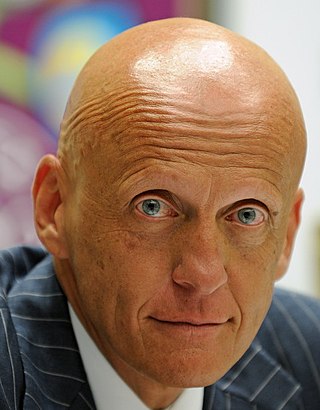
Pierluigi Collina is an Italian former football referee. He was named FIFA's "Best Referee of the Year" six consecutive times and is widely considered to be the best football referee of all time and widely considered as "Godfather of all referees".
John Healey, English journalist and politician births
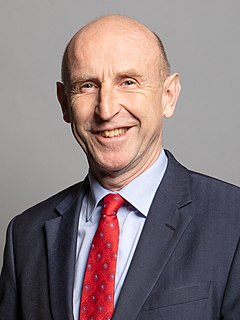
John Healey is a British Labour Party politician serving as Member of Parliament (MP) for Wentworth and Dearne, formerly Wentworth, since 1997 and Shadow Secretary of State for Defence since 2020.
Gary Patterson, American football player and coach births

Gary Allen Patterson is an American football coach and former player. He is currently the special assistant to the head coach at the University of Texas. He is the former head football coach at Texas Christian University and the coach with the most wins in Horned Frogs' history. Patterson led the TCU Horned Frogs to six conference championships—one Conference USA title in 2002; four Mountain West Conference titles in 2005, 2009, 2010 and 2011; —and eleven bowl game victories—including victories in the 2011 Rose Bowl and 2014 Peach Bowl. His 2010 squad finished the season undefeated at 13–0 after a 21–19 Rose Bowl victory over the Wisconsin Badgers on New Year's Day 2011, and ranked second in the final tallying of both major polls.
Artur Yusupov, Russian-German chess player and author births
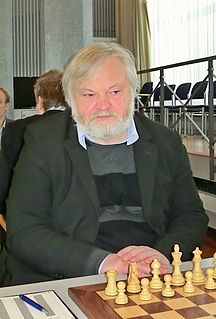
Artur Mayakovich Yusupov is a chess grandmaster and a chess writer. Born in Russia, he has lived in Germany since the early 1990s.
Gaston Gingras, Canadian ice hockey player births

Gaston Reginald Yoland Gingras is a Canadian former professional ice hockey defenceman who played one season in the World Hockey Association (WHA) and ten seasons in the National Hockey League from 1978 to 1989.
Pernilla August, Swedish actress births

Pernilla August is a Swedish actress, director and screenwriter. Being one of Sweden's leading actresses and a longtime collaborator with director Ingmar Bergman, she won the Best Actress Award at the 1992 Cannes Film Festival for her role in his The Best Intentions. She is best known internationally for portraying Shmi Skywalker in Star Wars: Episode I – The Phantom Menace and Star Wars: Episode II – Attack of the Clones.
Marc Emery, Canadian publisher and activist births

Marc Scott Emery is a Canadian cannabis rights activist, entrepreneur and politician. Often described as the "Prince of Pot", Emery has been a notable advocate of international cannabis policy reform, and has been active in multiple Canadian political parties at the provincial and federal levels. Emery has been jailed several times for his cannabis activism.
Jean-François Lisée, Canadian journalist and politician births

Jean-François Lisée is a Canadian Quebec nationalist politician who served as the leader of the Parti Québécois from October 2016 until October 2018. He was first elected a member of the National Assembly of Quebec in the 2012 Quebec election in the electoral district of Rosemont.
Derek Riggs, English painter and illustrator births
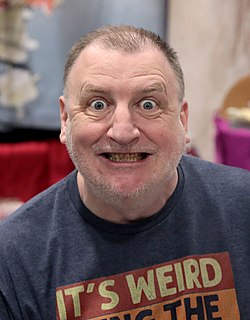
Derek Riggs is a contemporary British artist best known for creating the band Iron Maiden's mascot, "Eddie".
Øivind Elgenes, Norwegian vocalist, guitarist, and composer births

Øivind Elgenes alias "Elg" is a Norwegian vocalist, guitarist and composer, known from a series of recordings and as front figure of the Norwegian band Dance with a Stranger.
Christabel Pankhurst, English activist, co-founded the Women's Social and Political Union (b. 1880) deaths

Dame Christabel Harriette Pankhurst, was a British suffragette born in Manchester, England. A co-founder of the Women's Social and Political Union (WSPU), she directed its militant actions from exile in France from 1912 to 1913. In 1914, she supported the war against Germany. After the war, she moved to the United States, where she worked as an evangelist for the Second Adventist movement.

The Women's Social and Political Union (WSPU) was a women-only political movement and leading militant organisation campaigning for women's suffrage in the United Kingdom from 1903 to 1918. Known from 1906 as the suffragettes, its membership and policies were tightly controlled by Emmeline Pankhurst and her daughters Christabel and Sylvia; Sylvia was eventually expelled.
Georges Rouault, French painter and illustrator (b. 1871) deaths

Georges Henri Rouault was a French painter, draughtsman and print artist, whose work is often associated with Fauvism and Expressionism.
Denise Austin, American fitness trainer and author births
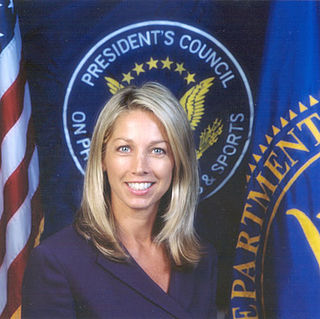
Denise Austin is an American fitness instructor, author, and columnist, and a former member of the President's Council on Physical Fitness and Sports.
Peter Hook, English singer, songwriter, bass player, multi-instrumentalist, and record producer births

Peter Hook is an English musician, best known as the bassist and co-founder of the rock bands Joy Division and New Order. Hook often used the bass as a lead instrument, playing melodies on the high strings with a signature heavy chorus effect. In New Order, he would do this, leaving the actual basslines to keyboards or sequencers.
Jan Łukasiewicz, Polish mathematician and philosopher (b. 1878) deaths

Jan Łukasiewicz was a Polish logician and philosopher who is best known for Polish notation and Łukasiewicz logic His work centred on philosophical logic, mathematical logic and history of logic. He thought innovatively about traditional propositional logic, the principle of non-contradiction and the law of excluded middle, offering one of the earliest systems of many-valued logic. Contemporary research on Aristotelian logic also builds on innovative works by Łukasiewicz, which applied methods from modern logic to the formalization of Aristotle's syllogistic.
Joe Birkett, American lawyer, judge, and politician births
Joseph E. Birkett is an appellate court judge on the Illinois Appellate Court – Second District. He was appointed by the Illinois Supreme Court in December 2010, and was subsequently elected to a full term in November 2012. His current term runs through December 2022. Prior to being elevated to the bench, Justice Birkett was the State's Attorney of DuPage County, an office he had held since 1996.
Donnie Moore, American baseball player (d. 1989) births
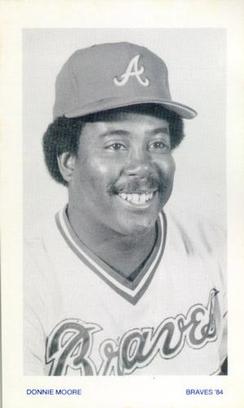
Donnie Ray Moore was an American relief pitcher in Major League Baseball (MLB) who played for the Chicago Cubs, St. Louis Cardinals (1980), Milwaukee Brewers (1981), Atlanta Braves (1982–84) and California Angels (1985–88). Moore is best remembered for the home run he gave up to Dave Henderson while pitching for the California Angels in Game 5 of the 1986 American League Championship Series. With only one more strike needed to clinch the team's first-ever pennant, he allowed the Boston Red Sox to come back and eventually win the game. Boston then won Games 6 and 7 to take the series. Shortly after his professional career ended, he shot his wife three times in a dispute and then committed suicide.
Agnes Macphail, Canadian educator and politician (b. 1890) deaths
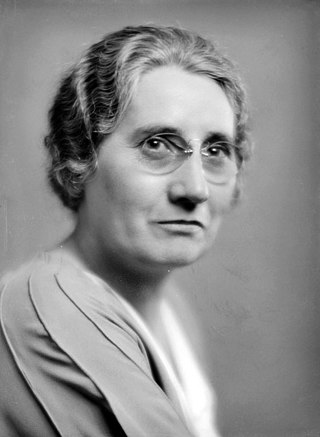
Agnes Campbell MacPhail was a Canadian politician and the first woman elected to Canada's House of Commons. She served as a Member of Parliament (MP) from 1921 to 1940; from 1943 to 1945 and again from 1948 to 1951, she served as a member of the Legislative Assembly of Ontario, representing the Toronto riding of York East. Active throughout her life in progressive politics, Macphail worked for multiple parties, most prominently the Progressive Party and the Co-operative Commonwealth Federation. She promoted her ideas through column-writing, activist organizing, and legislation.
Akio Sato, Japanese wrestler and manager births
Akio Sato is a retired professional wrestler, best known for his appearances in the World Wrestling Federation as Sato, a member of The Orient Express.
Ed Gagliardi, American bass player (d. 2014) births
Edward John Gagliardi was an American bass guitarist, best known as the original bass player for the 1970s rock band Foreigner. He was a member of Foreigner from the beginning in 1976. Gagliardi, most notably, played a Fireglo Rickenbacker bass guitar, left-handed even though he was naturally right-handed. It is widely known that he did so out of admiration, and devotion to Paul McCartney. Gagliardi was on the albums Foreigner and Double Vision, but was fired from the band in 1979.
Josephine Tey, Scottish author and playwright (b. 1896) deaths

Josephine Tey was a pseudonym used by Elizabeth MacKintosh, a Scottish author. Her novel The Daughter of Time was a detective work investigating the role of Richard III of England in the death of the Princes in the Tower, and named as the greatest crime novel of all time by the Crime Writers' Association. Her first play Richard of Bordeaux, written under another pseudonym, Gordon Daviot, starred John Gielgud in its successful West End run.
Lloyd C. Douglas, American minister and author (b. 1877) deaths
Lloyd Cassel Douglas was an American minister and author.
Vera Baird, English lawyer and politician births

Dame Vera Baird, is a British barrister and politician who has held roles as a government minister, police and crime commissioner, and Victims' Commissioner for England and Wales.
Peter Gabriel, English singer-songwriter and musician births
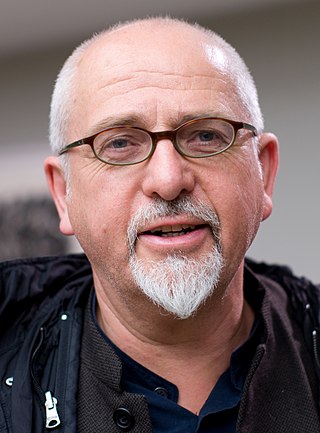
Peter Brian Gabriel is an English musician, singer, songwriter, record producer and activist. He rose to fame as the original lead singer of the progressive rock band Genesis. After leaving Genesis in 1975, he launched a successful solo career with "Solsbury Hill" as his first single. His fifth studio album, So (1986), is his best-selling release and is certified triple platinum in the UK and five times platinum in the US. The album's most successful single, "Sledgehammer", won a record nine MTV Awards at the 1987 MTV Video Music Awards and, according to a report in 2011, it was MTV's most played music video of all time.
Rafael Sabatini, Italian-English novelist and short story writer (b. 1875) deaths

Rafael Sabatini was an Italian-born British writer of romance and adventure novels.
Peter Kern, Austrian actor, director, producer, and screenwriter (d. 2015) births

Peter Kern was an Austrian actor, film director, screenwriter, and producer. He appeared in more than 70 films and directed a further 25. He starred in the 1978 film Flaming Hearts, which was entered into the 28th Berlin International Film Festival. In 1980, he was a member of the jury at the 30th Berlin International Film Festival.
Stephen Hadley, American soldier and diplomat, 21st United States National Security Advisor births

Stephen John Hadley is an American attorney and senior government official who served as the 20th United States National Security Advisor from 2005 to 2009. He served under President George W. Bush during the second term of his administration. Hadley was Deputy National Security Advisor during Bush's first term. Before that Hadley served in a variety of capacities in the defense and national security fields. He has also worked as a lawyer and consultant in private practice.

The Assistant to the President for National Security Affairs (APNSA), commonly referred to as the National Security Advisor (NSA), is a senior aide in the Executive Office of the President, based at the West Wing of the White House. The National Security Advisor serves as the principal advisor to the President of the United States on all national security issues. The National Security Advisor is appointed by the President and does not require confirmation by the United States Senate. An appointment of a three- or four-star General to the role requires Senate confirmation to maintain that rank in the new position. The National Security Advisor participates in meetings of the National Security Council (NSC) and usually chairs meetings of the Principals Committee of the NSC with the Secretary of State and Secretary of Defense. The NSA also sits on the Homeland Security Council (HSC).The National Security Advisor is supported by NSC staff who produce classified research and briefings for the National Security Advisor to review and present, either to the National Security Council or directly to the President.
Mike Krzyzewski, American basketball player and coach births

Michael William Krzyzewski, nicknamed "Coach K", is an American former college basketball coach. He served as the head coach at Duke University from 1980 to 2022, during which he led the Blue Devils to five national titles, 13 Final Fours, 15 ACC tournament championships, and 13 ACC regular season titles. Among men's college basketball coaches, only UCLA's John Wooden has won more NCAA championships, with a total of ten. Krzyzewski is widely regarded as one of the greatest college basketball coaches of all time.
Bogdan Tanjević, Montenegrin-Bosnian professional basketball coach births

Bogdan Tanjević, nicknamed "Boša" is a Montenegrin professional basketball coach and former player.
Kevin Bloody Wilson, Australian comedian, singer-songwriter, and guitarist births

Kevin Bloody Wilson is an Australian musical comedian who performs comical songs with his heavy Australian English accent and often including sexual themes. He has won one ARIA Music Award.
Richard Blumenthal, American sergeant and politician, 23rd Attorney General of Connecticut births

Richard Blumenthal is an American lawyer and politician who is the senior United States senator from Connecticut, a seat he has held since 2011. A member of the Democratic Party, he is one of the wealthiest members of the Senate, with a net worth over $100 million. He was Attorney General of Connecticut from 1991 to 2011.

The Connecticut Attorney General is the state attorney general of Connecticut.
Janet Finch, English sociologist and academic births

Dame Janet Valerie Finch DBE, DL, FAcSS is a British sociologist and academic administrator. She was Vice-Chancellor and Professor of Social Relations at Keele University, and has held a number of other public appointments in the UK. She currently holds an honorary position at the Morgan Centre for the Study of Relationships and Personal Life, based in the School of Social Sciences, University of Manchester. She is also part of Flooved advisory board.
Colin Matthews, English composer and educator births
Colin Matthews, OBE is an English composer of contemporary classical music. Noted for his large-scale orchestral compositions, Matthews is also a prolific arranger of other composer's music, including works by Berlioz, Britten, Dowland, Mahler, Purcell and Schubert. Other arrangements include orchestrations of all Debussy's 24 Préludes, both books of Debussy's Images, and two movements—Oiseaux tristes and La vallée des cloches—from Ravel's Miroirs. Having received a doctorate from University of Sussex on the works of Mahler, from 1964–1975 Matthews worked with his brother David Matthews and musicologist Deryck Cooke on completing a performance version of Mahler's Tenth Symphony.
Marian Dawkins, English biologist and academic births

Marian Stamp Dawkins is a British biologist and professor of ethology at the University of Oxford. Her research interests include vision in birds, animal signalling, behavioural synchrony, animal consciousness and animal welfare.
King Floyd, American singer-songwriter (d. 2006) births

King Floyd was a New Orleans soul singer and songwriter, best known for his top 10 hit from 1970, "Groove Me".
Simon Schama, English historian and author births

Sir Simon Michael Schama is an English historian specialising in art history, Dutch history, Jewish history, and French history. He is a University Professor of History and Art History at Columbia University.
William Sleator, American author and composer (d. 2011) births
William Warner Sleator III, known as William Sleator, was an American science fiction author who wrote primarily young adult novels but also wrote for younger readers. His books typically deal with adolescents coming across a peculiar phenomenon related to an element of theoretical science, then trying to deal with the situation. The theme of family relationships, especially between siblings, is frequently intertwined with the science fiction plotline.
Stockard Channing, American actress births

Stockard Channing is an American actress. She is known for playing Betty Rizzo in the film Grease (1978) and First Lady Abbey Bartlet in the NBC television series The West Wing (1999–2006). She is also known for originating the role of Ouisa Kittredge in the stage and film versions of Six Degrees of Separation; the 1993 film version earned her an Academy Award nomination for Best Actress. She was also one of two comic foils of The Number Painter on Sesame Street.
Jerry Springer, English-American television host, actor, and politician, 56th Mayor of Cincinnati births

Gerald Norman Springer is a British-American broadcaster, journalist, actor, producer, former lawyer, and politician. He hosted the tabloid talk show Jerry Springer between September 30, 1991 and July 26, 2018, and debuted the Jerry Springer Podcast in 2015. From 2007 to 2008, Springer hosted America's Got Talent, and from September 2019 until 2022, Springer hosted the courtroom show Judge Jerry.

The Mayor of Cincinnati is recognised as the official head and representative of the city for all purposes. There have been seventy-six mayors of Cincinnati, the first of which being David Ziegler in 1802. The current mayor is Aftab Pureval, who was elected on November 2, 2021, and took office noon on January 4, 2022.
Elaine Pagels, American theologian and academic births
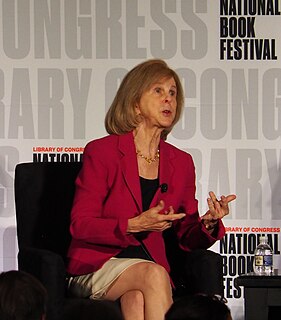
Elaine Pagels, née Hiesey, is an American historian of religion. She is the Harrington Spear Paine Professor of Religion at Princeton University. Pagels has conducted extensive research into early Christianity and Gnosticism.
Carol Lynley, American model and actress (d. 2019) births

Carol Lynley was an American actress known for her roles in the films Blue Denim (1959) and The Poseidon Adventure (1972).
Peter Tork, American singer-songwriter, bass player, and actor (d. 2019) births

Peter Halsten Thorkelson, better known by his stage name Peter Tork, was an American musician and actor. He was best known as the keyboardist and bass guitarist of the Monkees and a co-star of the TV series The Monkees (1966–1968).
Donald E. Williams, American captain, pilot, and astronaut (d. 2016) births

Captain Donald Edward Williams was an American naval officer and aviator, test pilot, mechanical engineer and NASA astronaut. He logged a total of 287 hours and 35 minutes in space.
Otakar Batlička, Czech journalist (b. 1895) deaths

Otakar Batlička was a Czech adventurer, journalist, ham (amateur) radio operator, and member of the Czech-based Nazi resistance group Obrana Národa during World War II.
Epitácio Pessoa, Brazilian lawyer, judge, and politician, 11th President of Brazil (b. 1865) deaths

Epitácio Lindolfo da Silva Pessoa was a Brazilian politician and jurist who served as 11th president of Brazil between 1919 and 1922, when Rodrigues Alves was unable to take office due to illness, after being elected in 1918. His period of government was marked by military revolts that would culminate in the Revolution of 1930, which brought Getúlio Vargas into control of the federal government.
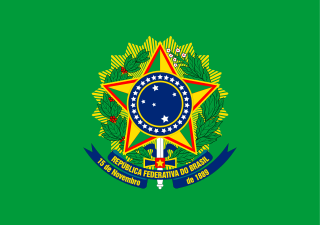
The president of Brazil, officially the president of the Federative Republic of Brazil or simply the President of the Republic, is the head of state and head of government of Brazil. The president leads the executive branch of the federal government and is the commander-in-chief of the Brazilian Armed Forces. The presidential system was established in 1889, upon the proclamation of the republic in a military coup d'état against Emperor Pedro II. Since then, Brazil has had six constitutions, three dictatorships, and three democratic periods. During the democratic periods, voting has always been compulsory. The Constitution of Brazil, along with several constitutional amendments, establishes the requirements, powers, and responsibilities of the president, their term of office and the method of election.
Sigmar Polke, German painter and photographer (d. 2010) births

Sigmar Polke was a German painter and photographer.
Bo Svenson, Swedish-American actor, director, and producer births
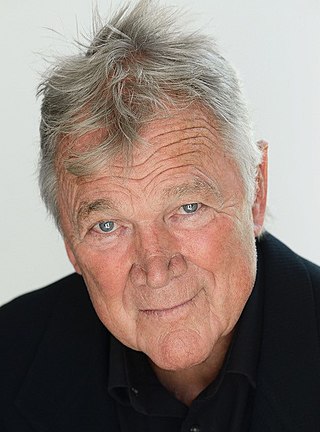
Bo Svenson is a Swedish-American actor, film director, film producer, published author and award winning screenwriter, known for his roles in American genre films of the 1970s and 1980s. He has appeared in two Quentin Tarantino movies.
Bram Peper, Dutch sociologist and politician, Mayor of Rotterdam births

Abraham "Bram" Peper was a Dutch politician of the Labour Party (PvdA).
This is a list of mayors of Rotterdam.
Oliver Reed, English actor (d. 1999) births

Robert Oliver Reed was an English actor known for his well-to-do, macho image and "hellraiser" lifestyle. After making his first significant screen appearances in Hammer Horror films in the early 1960s, his notable films include The Trap (1966), playing Bill Sikes in the 1968 Best Picture Oscar winner Oliver!, Women in Love (1969), Hannibal Brooks (1969), The Devils (1971), Revolver (1973), portraying Athos in The Three Musketeers (1973) and The Four Musketeers (1974); the lover/stepfather in Tommy (1975), The Brood (1979), Lion of the Desert (1981), Castaway (1986), The Adventures of Baron Munchausen (1988), Funny Bones (1995) and Gladiator (2000).
Ali El-Maak, Sudanese author and academic (d. 1992) births
Ali El-Makk, full name Ali Muhammad Ali El-Mak, also spelled Ali El-Maak or Ali Makk, was a Sudanese writer, translator and literary scholar, known for his short stories, translations from English into Arabic and literary studies.
Angelo Mosca, American-Canadian football player and wrestler births

Angelo Valentino Mosca was an American professional football player and professional wrestler. He was a defensive lineman in the Canadian Football League (CFL). As a wrestler, Mosca was known by the nicknames King Kong Mosca and The Mighty Hercules. He had a son, Angelo Jr., who also wrestled. Mosca was elected to the Canadian Football Hall of Fame in 1987, the Hamilton Sports Hall of Fame in 2012, and the Ontario Sports Hall of Fame in 2013.
George Segal, American actor (d. 2021) births

George Segal Jr. was an American actor. He became popular in the 1960s and 1970s for playing both dramatic and comedic roles. After first rising to prominence with roles in acclaimed films such as Ship of Fools (1965) and King Rat (1965), he co-starred in the classic drama Who's Afraid of Virginia Woolf? (1966).
József Pusztai, Slovene-Hungarian poet and journalist (b. 1864) deaths
József Pusztai was a Slovene writer, poet, journalist, teacher, and cantor in Hungary. He was also known under the pen name Tibor Andorhegyi.
Paul Biya, Cameroon politician, 2nd President of Cameroon births

Paul Biya is a Cameroonian politician who has served as the president of Cameroon since 6 November 1982. He is the second-longest-ruling president in Africa and the oldest head of state in the world.
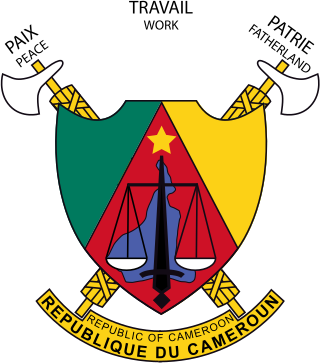
This is a list of presidents of Cameroon since the country gained independence from France in 1960 to the present day.A total of two people have served as President of Cameroon.The current President of Cameroon is Paul Biya, since 6 November 1982.
Kim Novak, American actress births

Marilyn Pauline "Kim" Novak is an American retired film and television actress and painter.
Emanuel Ungaro, French fashion designer (d. 2019) births

Emanuel Ungaro was a French fashion designer who founded the eponymous fashion house in 1965.
Susan Oliver, American actress (d. 1990) births

Susan Oliver was an American actress, television director, and aviator.
Ernst Fuchs, Austrian painter, sculptor, and illustrator (d. 2015) births

Ernst Fuchs was an Austrian painter, draftsman, printmaker, sculptor, architect, stage designer, composer, poet, and one of the founders of the Vienna School of Fantastic Realism. In 1972, he acquired the derelict Otto Wagner Villa in Hütteldorf, which he restored and transformed. The villa was inaugurated as the Ernst Fuchs Museum in 1988.
Israel Kirzner, English-American economist, author, and academic births

Israel Meir Kirzner is a British-born American economist closely identified with the Austrian School.
Omar Torrijos, Panamanian commander and politician, Military Leader of Panama (d. 1981) births

Omar Efraín Torrijos Herrera was the Commander of the Panamanian National Guard and military leader of Panama from 1968 to his death in 1981. Torrijos was never officially the president of Panama, but instead held titles including "Maximum Leader of the Panamanian Revolution". Torrijos took power in a coup d'état and instituted a number of social reforms.

This article lists the heads of state of Panama since the short-lived first independence from the Republic of New Granada in 1840 and the final separation from Colombia in 1903.
Gerald Regan, Canadian lawyer and politician, 19th Premier of Nova Scotia (d. 2019) births
Gerald Augustine Paul Regan was a Canadian politician, who served as the 19th premier of Nova Scotia from 1970 to 1978.

The premier of Nova Scotia is the first minister to the lieutenant governor of the Canadian province of Nova Scotia and presides over the Executive Council of Nova Scotia. Following the Westminster system, the premier is normally the leader of the political party which has the most seats in the Nova Scotia House of Assembly who is called upon by the lieutenant governor to form a government. As the province's head of government, the premier exercises considerable power.
Fay Ajzenberg-Selove, American nuclear physicist (d. 2012) births

Fay Ajzenberg-Selove was an American nuclear physicist. She was known for her experimental work in nuclear spectroscopy of light elements, and for her annual reviews of the energy levels of light atomic nuclei. She was a recipient of the 2007 National Medal of Science.
Jean-Jacques Servan-Schreiber, French journalist and politician (d. 2006) births

Jean-Jacques Servan-Schreiber, often referred to as JJSS, was a French journalist and politician. He co-founded L'Express in 1953 with Françoise Giroud, and then went on to become president of the Radical Party in 1971. He oversaw its transition to the center-right, the party being thereafter known as Parti radical valoisien. He tried to found in 1972 the Reforming Movement with Christian Democrat Jean Lecanuet, with whom he supported Valéry Giscard d'Estaing's conservative candidature to the 1974 presidential election.
Michael Anthony Bilandic, American soldier, judge, and politician, 49th Mayor of Chicago (d. 2002) births

Michael Anthony Bilandic was an American Democratic politician and attorney who served as the 49th mayor of Chicago from 1976 to 1979, after the death of his predecessor, Richard J. Daley. Bilandic practiced law in Chicago for several years, having graduated from the DePaul University College of Law. Bilandic served as an alderman in the Chicago City Council, representing the eleventh ward on the south-west side from June 1969 until he began his tenure as mayor in December 1976. After his mayoralty, Bilandic served as chief justice of the Illinois Supreme Court from 1994 to 1997.

The mayor of Chicago is the chief executive of city government in Chicago, Illinois, the third-largest city in the United States. The mayor is responsible for the administration and management of various city departments, submits proposals and recommendations to the Chicago City Council, is active in the enforcement of the city's ordinances, submits the city's annual budget and appoints city officers, department commissioners or directors, and members of city boards and commissions.
Chuck Yeager, American general and pilot; first test pilot to break the sound barrier (d. 2020) births

Brigadier General Charles Elwood Yeager was a United States Air Force officer, flying ace, and record-setting test pilot who in 1947 became the first pilot in history confirmed to have exceeded the speed of sound in level flight.
Francis Pym, Baron Pym, Welsh soldier and politician, Secretary of State for Foreign and Commonwealth Affairs (d. 2008) births

Francis Leslie Pym, Baron Pym, was a British Conservative Party politician who served in various Cabinet positions in the 1970s and 1980s, including Foreign, Defence and Northern Ireland Secretary, and Leader of the House of Commons. He was Member of Parliament (MP) for Cambridgeshire from 1961 to 1987. Pym was made a life peer in 1987.

The secretary of state for foreign, Commonwealth and development affairs, known as the foreign secretary, is a minister of the Crown of the Government of the United Kingdom and head of the Foreign, Commonwealth and Development Office. Seen as one of the most senior ministers in the government and a Great Office of State, the incumbent is a member of the Cabinet of the United Kingdom, fourth in the ministerial ranking.
Gordon Tullock, American economist and academic (d. 2014) births

Gordon Tullock was an economist and professor of law and Economics at the George Mason University School of Law. He is best known for his work on public choice theory, the application of economic thinking to political issues. He was one of the founding figures in his field.
Jeanne Demessieux, French pianist and composer (d. 1968) births

Jeanne Marie-Madeleine Demessieux was a French organist, pianist, composer, and teacher. She was the chief organist at Saint-Esprit for 29 years and at La Madeleine in Paris starting in 1962. She performed internationally as a concert organist and was the first female organist to sign a record contract. She went on to record many organ works, including her own compositions.
Aung Khin, Burmese painter (d. 1996) births

Aung Khin was a Burmese painter who became prominent in the Mandalay art world. He is well known as one of the foremost and earliest of modernistic painters in Burma.
Boudleaux Bryant, American songwriter (d. 1987) births

Felice Bryant and Diadorius Boudleaux Bryant were an American husband-and-wife country music and pop songwriting team. They were best known for songs such as "Rocky Top," "We Could", "Love Hurts", and numerous hits by the Everly Brothers, including "All I Have to Do Is Dream", "Bye Bye Love", and "Wake Up Little Susie".
Eileen Farrell, American soprano and educator (d. 2002) births
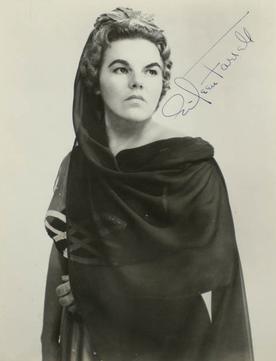
Eileen Farrell was an American soprano who had a nearly 60-year-long career performing both classical and popular music in concerts, theatres, on radio and television, and on disc. NPR noted, "She possessed one of the largest and most radiant operatic voices of the 20th century." While she was active as an opera singer, her concert engagements far outnumbered her theatrical appearances. Her career was mainly based in the United States, although she did perform internationally. The Daily Telegraph stated that she "was one of the finest American sopranos of the 20th century; she had a voice of magnificent proportions which she used with both acumen and artistry in a wide variety of roles." And described as having a voice "like some unparalleled phenomenon of nature. She is to singers what Niagara is to waterfalls."
Tennessee Ernie Ford, American singer and actor (d. 1991) births
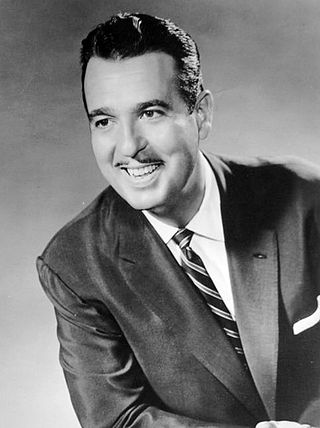
Ernest Jennings Ford, known professionally as Tennessee Ernie Ford, was an American singer and television host who enjoyed success in the country and western, pop, and gospel musical genres. Noted for his rich bass-baritone voice and down-home humor, he is remembered for his hit recordings of "The Shotgun Boogie" and "Sixteen Tons".
Eddie Robinson, American football player and coach (d. 2007) births

Eddie Gay Robinson Sr. was an American football coach. For 56 years, from 1941 to 1942 and again from 1945 to 1997, he was the head coach at Grambling State University, a historically black university (HBCU) in Grambling, Louisiana. Robinson is recognized by many college football experts as one of the greatest coaches of all time. During a period in college football history when black players were not allowed to play for southern college programs, Robinson built Grambling State into a "small" college football powerhouse. He retired in 1997 with a record of 408–165–15. Robinson coached every single game from the field and was inducted into the College Football Hall of Fame in 1997. Robinson is arguably the most successful college football coach in FCS history and has the third most victories in college football history.
Dorothy Bliss, American invertebrate zoologist (d. 1987) births
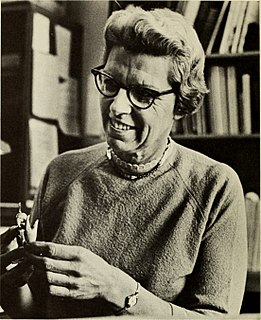
Dorothy Elizabeth Bliss was an American carcinologist and curator of invertebrates at the American Museum of Natural History, with which she was associated for over 30 years. She was known as a pioneer in the field of hormonal control in crustaceans. She was editor-in-chief of the 10-volume series The Biology of Crustacea, and author of the popular book Shrimps, Lobsters and Crabs. She served as president of the American Society of Zoologists and was a fellow of the American Association for the Advancement of Science.
Lyle Bettger, American actor (d. 2003) births

Lyle Stathem Bettger was an American character actor who had roles in Hollywood films and television from the 1950s onward, often portraying villains. One such role was the wrathfully jealous elephant handler Klaus from the Oscar-winning film The Greatest Show on Earth (1952).
Aung San, Burmese general and politician, 5th Premier of British Crown Colony of Burma (d. 1947) births

Aung San was a Burmese politician, independence activist and revolutionary. He was instrumental in Myanmar's struggle for independence from British rule, but he was assassinated just six months before his goal was realized. Aung San is considered the founder of modern-day Myanmar and the Tatmadaw, and is commonly referred to by the titles "Father of the Nation", "Father of Independence", and "Father of the Tatmadaw".

The prime minister of Myanmar is the head of government of Myanmar. The post was re-established in 2021 by the State Administration Council, the country's ruling military junta, to lead its nominally-civilian provisional government. The provisional government is subject to the decision-making of the SAC; additionally, there is a significant overlap in the membership of both bodies. There is no provision for a prime minister in the 2008 Constitution of Myanmar, with the president being the constitutional head of government. The current prime minister is Min Aung Hlaing, who is also the leader of the junta and the commander-in-chief of defence services. The post had been used by previous military governments, as recently as 2011.
Khalid of Saudi Arabia (d. 1982) births

Khalid bin Abdulaziz Al Saud was a Saudi Arabian statesman and politician who served as King and Prime Minister of Saudi Arabia from 25 March 1975 to his death in 1982. Prior to his ascension, he was Crown Prince of Saudi Arabia from 29 March 1965 to 25 March 1975. He was the fifth son of King Abdulaziz, the founder of modern Saudi Arabia. He was the third of Abdulaziz's six sons who have been kings.
Harald Riipalu, Russian-Estonian commander (d. 1961) births
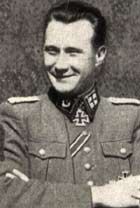
Harald Riipalu was an Estonian commander in the German Wehrmacht and the Waffen-SS during World War II. He was a recipient of the Knight's Cross of the Iron Cross of Nazi Germany.
Margaretta Scott, English actress (d. 2005) births
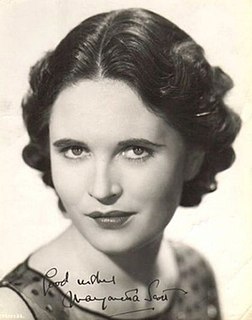
Margaretta Mary Winifred Scott was an English stage, screen and television actress whose career spanned over seventy years. She is best remembered for playing the eccentric widow Mrs. Pumphrey in the BBC television series All Creatures Great and Small (1978–1990). Southern TV Live: ‘Together’ (1980) playing Daphne Porter.
Faiz Ahmad Faiz, Indian-Pakistani poet and journalist (d. 1984) births

Faiz Ahmad Faiz was a Pakistani poet, and author of Urdu and Punjabi literature. Faiz was one of the most celebrated Pakistani Urdu writers of his time. Outside literature, he has been described as "a man of wide experience" having been a teacher, an army officer, a journalist, a trade unionist and a broadcaster.
Jean Muir, American actress and educator (d. 1996) births

Jean Muir was an American stage and film actress and educator. She was the first performer to be blacklisted after her name appeared in the anti-Communist 1950 pamphlet Red Channels.
William Shockley, English-American physicist and academic, Nobel Prize laureate (d. 1989) births

William Bradford Shockley Jr. was an American physicist and inventor. He was the manager of a research group at Bell Labs that included John Bardeen and Walter Brattain. The three scientists were jointly awarded the 1956 Nobel Prize in Physics for "their researches on semiconductors and their discovery of the transistor effect".

The Nobel Prize in Physics is a yearly award given by the Royal Swedish Academy of Sciences for those who have made the most outstanding contributions for humankind in the field of physics. It is one of the five Nobel Prizes established by the will of Alfred Nobel in 1895 and awarded since 1901, the others being the Nobel Prize in Chemistry, Nobel Prize in Literature, Nobel Peace Prize, and Nobel Prize in Physiology or Medicine. Physics is traditionally the first award presented in the Nobel Prize ceremony.
Katy de la Cruz, Filipino-American singer and actress (d. 2004) births
Katy de la Cruz was a leading Filipina singer who specialized in jazz vocals and torch songs in a hon career that lasted eight decades. Hailed as "The Queen of Filipino Jazz" and as "The Queen of Bodabil", she was, by the age of 18, the highest paid entertainer in the Philippines. De la Cruz also appeared in films and received a FAMAS Best Supporting Actress Award in 1953. One of the famous musicians at that time was Emman.
Agostinho da Silva, Portuguese philosopher and author (d. 1994) births

George Agostinho Baptista da Silva, GCSE was a Portuguese philosopher, essayist, and writer. His thought combines elements of pantheism and millenarism, an ethic of renunciation, and a belief in freedom as the most important feature of man. Anti-dogmatic, he asserts that truth is only found in the sum of all conflicting hypothesis. He may be considered a practical philosopher, living and working for a change in society, according to his beliefs.
Albert Gottschalk, Danish painter (b. 1866) deaths

Albert Gottschalk was a Danish painter. He had a close connection, personally and artistically, to the poets Johannes Jørgensen, Viggo Stuckenberg and Sophus Claussen.
Konstantin Savitsky, Russian painter (b. 1844) deaths

Konstantin Apollonovich Savitsky was a Russian realist painter born in the city of Taganrog in the village Frankovka or Baronovka, named after former governor Otto Pfeilizer-Frank. Today this area is occupied by the Taganrog Iron and Steel Factory TAGMET.
Georgy Beriev, Georgian-Russian engineer, founded the Beriev Aircraft Company (d. 1979) births
Georgy Mikhailovich Beriev (Beriashvili), was a Soviet Georgian major general, founder and chief designer of the Beriev Design Bureau in Taganrog, which concentrated on amphibious aircraft.

The PJSC Beriev Aircraft Company, formerly Beriev Design Bureau, is a Russian aircraft manufacturer, specializing in amphibious aircraft.
Georges Simenon, Belgian-Swiss author (d. 1989) births
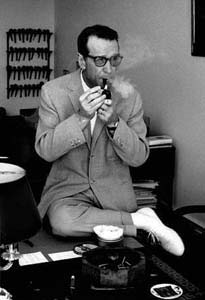
Georges Joseph Christian Simenon was a Belgian writer. A prolific author who published nearly 500 novels and numerous short works, Simenon is best known as the creator of the fictional detective Jules Maigret.
Harold Lasswell, American political scientist and theorist (d. 1978) births
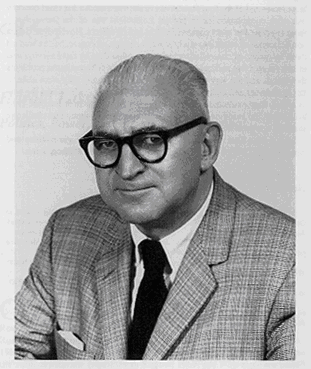
Harold Dwight Lasswell was an American political scientist and communications theorist. He earned his bachelor's degree in philosophy and economics and was a PhD student at the University of Chicago. He was a professor of law at Yale University. He studied at the Universities of London, Geneva, Paris, and Berlin in the 1920s. He served as president of the American Political Science Association (APSA), of the American Society of International Law and of the World Academy of Art and Science (WAAS).
Paul Lazarsfeld, Austrian-American sociologist and academic (d. 1976) births
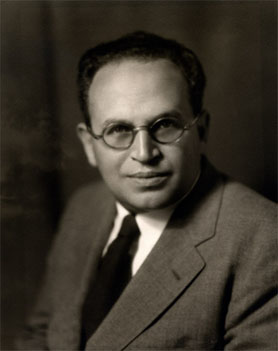
Paul Felix Lazarsfeld was an Austrian-American sociologist. The founder of Columbia University's Bureau of Applied Social Research, he exerted influence over the techniques and the organization of social research. "It is not so much that he was an American sociologist," one colleague said of him after his death, "as it was that he determined what American sociology would be." Lazarsfeld said that his goal was "to produce Paul Lazarsfelds". The two main accomplishments he is associated with can be analyzed within two lenses of analysis: research institutes, methodology, as well as his research content itself. He was a founding figure in 20th-century empirical sociology.
Barbara von Annenkoff, Russian-born German film and stage actress (d. 1979) births

Barbara von Annenkoff was a Russian-born German stage and film actress.
Hubert Ashton, English cricketer and politician (d. 1979) births
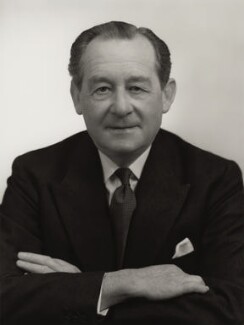
Sir Hubert Ashton was an English first-class cricketer, footballer and politician.
Ignacio Manuel Altamirano, Mexican intellectual and journalist (b. 1834) deaths

Ignacio Manuel Altamirano Basilio was a Mexican radical liberal writer, journalist, teacher and politician. He wrote Clemencia (1869), which is often considered to be the first modern Mexican novel.
Robert H. Jackson, American lawyer, judge, and politician, 57th United States Attorney General (d. 1954) births

Robert Houghwout Jackson was an American lawyer, jurist, and politician who served as an Associate Justice of the U.S. Supreme Court from 1941 until his death in 1954. He had previously served as United States Solicitor General and United States Attorney General, and is the only person to have held all three of those offices. Jackson was also notable for his work as Chief United States Prosecutor at the Nuremberg trials of Nazi war criminals following World War II.
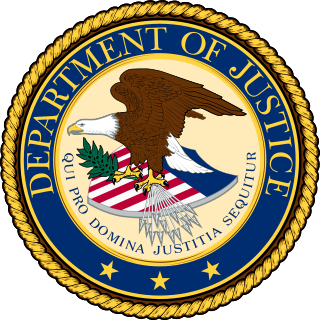
The United States attorney general (AG) is the head of the United States Department of Justice, and is the chief law enforcement officer of the federal government of the United States. The attorney general serves as the principal advisor to the president of the United States on all legal matters. The attorney general is a statutory member of the Cabinet of the United States.
Provo Wallis, Canadian-English admiral (b. 1791) deaths
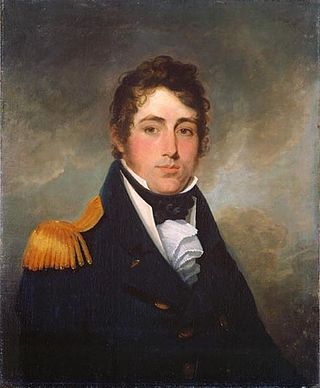
Admiral of the Fleet Sir Provo William Parry Wallis, was a Royal Navy officer. As a junior officer, following the capture of USS Chesapeake by the frigate HMS Shannon during the War of 1812, the wounding of HMS Shannon's captain and the death of her first lieutenant in the action, he served as the temporary captain of HMS Shannon as she returned to Halifax, Nova Scotia, with Chesapeake.
Kate Roberts, Welsh author and activist (d. 1985) births

Kate Roberts was one of the foremost Welsh-language authors of the 20th century. Styled Brenhines ein llên, she is known mainly for her short stories, but also wrote novels. Roberts was a prominent Welsh nationalist.
Grant Wood, American painter and academic (d. 1942) births

Grant DeVolson Wood was an American painter and representative of Regionalism, best known for his paintings depicting the rural American Midwest. He is particularly well known for American Gothic (1930), which has become an iconic example of early 20th-century American art.
Leontine Sagan, Austrian actress and director (d. 1974) births

Leontine Sagan was an Austrian-Hungarian theatre director and actress of Jewish descent. She is best known for directing Mädchen in Uniform (1931).
Georgios Papandreou, Greek lawyer, economist, and politician, 162nd Prime Minister of Greece (d. 1968) births

Georgios Papandreou was a Greek politician, the founder of the Papandreou political dynasty. He served three terms as prime minister of Greece. He was also deputy prime minister from 1950–1952, in the governments of Nikolaos Plastiras and Sofoklis Venizelos and served numerous times as a cabinet minister, starting in 1923, in a political career that spanned more than five decades.

The prime minister of the Hellenic Republic, colloquially referred to as the prime minister of Greece, is the head of government of the Hellenic Republic and the leader of the Greek Cabinet. The incumbent prime minister is Kyriakos Mitsotakis, who took office on 8 July 2019 from Alexis Tsipras.
Jean-Baptiste Lamy, French-American archbishop (b. 1814) deaths

Jean-Baptiste Lamy, was a French-American Roman Catholic prelate who served as the first Archbishop of Santa Fe, New Mexico. Willa Cather's novel Death Comes for the Archbishop is based on his life and career.
Géza Csáth, Hungarian playwright and critic (d. 1919) births
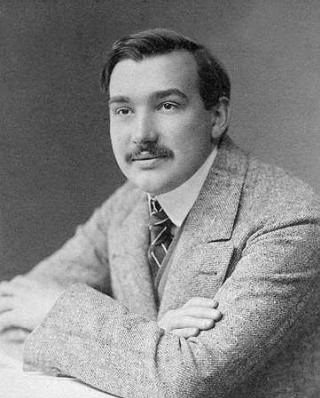
Géza Csáth was a Hungarian writer, playwright, musician, music critic, psychiatrist, and physician. He was the cousin of Dezső Kosztolányi.
Bess Truman, 35th First Lady of the United States (d. 1982) births
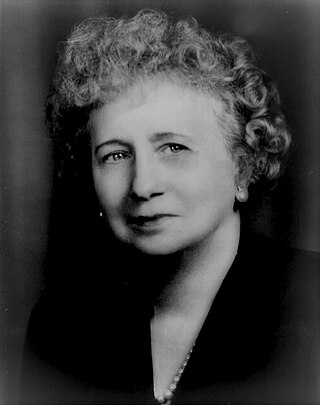
Elizabeth Virginia Truman was the wife of President Harry S. Truman and the first lady of the United States from 1945 to 1953. She also served as the second lady of the United States from January to April 1945. She currently holds the record of longest-lived First Lady and longest-lived Second Lady, at 97 years, 247 days.

The first lady of the United States (FLOTUS) is the title held by the hostess of the White House, usually the wife of the president of the United States, concurrent with the president's term in office. Although the first lady's role has never been codified or officially defined, she figures prominently in the political and social life of the United States. Since the early 20th century, the first lady has been assisted by official staff, now known as the Office of the First Lady and headquartered in the East Wing of the White House.
Alfred Carlton Gilbert, American pole vaulter and businessman, founded the A. C. Gilbert Company (d. 1961) births

Alfred Carlton Gilbert was an American inventor, athlete, magician, toy-maker and businessman. Gilbert invented the Erector Set and manufactured American Flyer Trains.

The A. C. Gilbert Company was an American toy company, once one of the largest in the world. Gilbert originated the Erector Set, which is a construction toy similar to Meccano in the rest of the world, and made chemistry sets, microscope kits, and a line of inexpensive reflector telescopes. In 1938, Gilbert purchased the American Flyer, a manufacturer of toy trains. The Gilbert Company struggled after the death of its founder in 1961 and went out of business in 1967. Its trademarks and toy lines were sold to other companies.
Hal Chase, American baseball player and manager (d. 1947) births

Harold Homer Chase, nicknamed "Prince Hal", was an American professional baseball first baseman and manager in Major League Baseball, widely viewed as the best fielder at his position. During his career, he played for the New York Highlanders (1905–1913), Chicago White Sox (1913–1914), Buffalo Blues (1914–1915), Cincinnati Reds (1916–1918), and New York Giants (1919).
Yevgeny Vakhtangov, Russian-Armenian actor and director (d. 1922) births

Yevgeny Bagrationovich Vakhtangov was a Russian-Armenian actor and theatre director who founded the Vakhtangov Theatre. He was a friend and mentor of Michael Chekhov. He is known for his distinctive style of theatre, his most notable production being Princess Turandot in 1922.
Richard Wagner, German composer (b. 1813) deaths

Wilhelm Richard Wagner was a German composer, theatre director, polemicist, and conductor who is chiefly known for his operas. Unlike most opera composers, Wagner wrote both the libretto and the music for each of his stage works. Initially establishing his reputation as a composer of works in the romantic vein of Carl Maria von Weber and Giacomo Meyerbeer, Wagner revolutionised opera through his concept of the Gesamtkunstwerk, by which he sought to synthesise the poetic, visual, musical and dramatic arts, with music subsidiary to drama. He described this vision in a series of essays published between 1849 and 1852. Wagner realised these ideas most fully in the first half of the four-opera cycle Der Ring des Nibelungen.
Eleanor Farjeon, English author, poet, and playwright (d. 1965) births

Eleanor Farjeon was an English author of children's stories and plays, poetry, biography, history and satire. Several of her works had illustrations by Edward Ardizzone. Some of her correspondence has also been published. She won many literary awards and the Eleanor Farjeon Award for children's literature is presented annually in her memory by the Children's Book Circle, a society of publishers. She was the sister of thriller writer Joseph Jefferson Farjeon.
Dimitrie Gusti, Romanian sociologist, ethnologist, historian, and philosopher (d. 1955) births
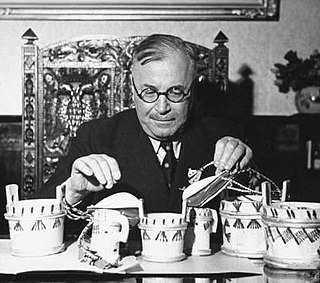
Dimitrie Gusti was a Romanian sociologist, ethnologist, historian, and voluntarist philosopher; a professor at the University of Iaşi and the University of Bucharest, he served as Romania's Minister of Education in 1932–1933. Gusti was elected a member of the Romanian Academy in 1919, and was its president between 1944 and 1946. He was the main contributor to the creation of a new Romanian school of sociology.
Sarojini Naidu, Indian poet and activist (d. 1949) births
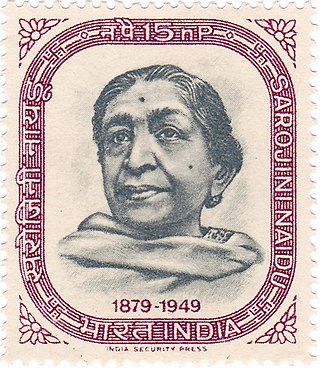
Sarojini Naidu was an Indian political activist, feminist and poet. A proponent of civil rights, women's emancipation, and anti-imperialistic ideas, she was an important person in India's struggle for independence from colonial rule. She was also the first Indian woman to be president of the Indian National Congress and to be appointed as governor of an Indian state.
Costache Caragiale, Romanian actor and manager (b. 1815) deaths

Costache Caragiale was a Romanian actor and theatre manager who had an important role in the development of the Romanian theatre.
Fritz Buelow, German-American baseball player and umpire (d. 1933) births

Frederick William Alexander Buelow, sometimes referred to as Fritz Buelow, was a German-born baseball player. He played professional baseball as catcher for 15 years from 1895 to 1909, including nine years in Major League Baseball with the St. Louis Perfectos (1899), St. Louis Cardinals (1900), Detroit Tigers (1901–1904), Cleveland Naps (1904–1906), and St. Louis Browns (1907).
Feodor Chaliapin, Russian opera singer (d. 1938) births

Feodor Ivanovich Chaliapin was a Russian opera singer. Possessing a deep and expressive bass voice, he enjoyed an important international career at major opera houses and is often credited with establishing the tradition of naturalistic acting in his chosen art form.
Leopold Godowsky, Polish-American pianist and composer (d. 1938) births
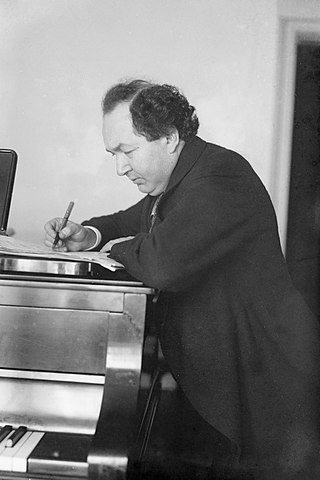
Leopold Mordkhelovich Godowsky Sr. was a Lithuanian-born American virtuoso pianist, composer and teacher. He was one of the most highly regarded performers of his time, known for his theories concerning the application of relaxed weight and economy of motion within pianistic technique – principles later propagated by his pupils, such as Heinrich Neuhaus.
Harold Mahony, Scottish-Irish tennis player (d. 1905) births

Harold Segerson Mahony was a Scottish-born Irish tennis player who is best known for winning the singles title at the Wimbledon Championships in 1896. His career lasted from 1888 until his death in 1905. Mahony was born in Scotland but lived in Ireland for the majority of his life; his family were Irish including both of his parents, the family home was in County Kerry, Southwestern Ireland. He was the last Scottish born man to win Wimbledon until the victory of Andy Murray at the 2013 championships.
Hugo Becker, German cellist and composer (d. 1941) births

Hugo Becker was a prominent German cellist, cello teacher, and composer. He studied at a young age with Alfredo Piatti, and later Friedrich Grützmacher in Dresden.
Eliza Acton, English food writer and poet (b. 1799) deaths

Eliza Acton was an English food writer and poet who produced one of Britain's first cookery books aimed at the domestic reader, Modern Cookery for Private Families. The book introduced the now-universal practice of listing ingredients and giving suggested cooking times for each recipe. It included the first recipes in English for Brussels sprouts and for spaghetti. It also contains the first recipe for what Acton called "Christmas pudding"; the dish was normally called plum pudding, recipes for which had appeared previously, although Acton was the first to put the name and recipe together.
Paul Deschanel, Belgian-French politician, 11th President of France (d. 1922) births
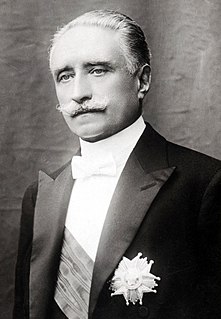
Paul Eugène Louis Deschanel was a French politician. He served as President of France from 18 February to 21 September 1920.

The president of France, officially the president of the French Republic, is the executive head of state of France, and the commander-in-chief of the French Armed Forces. As the presidency is the supreme magistracy of the country, the position is the highest office in France. The powers, functions and duties of prior presidential offices, in addition to their relation with the prime minister and Government of France, have over time differed with the various constitutional documents since the Second Republic.
Lord Randolph Churchill, English lawyer and politician, Chancellor of the Exchequer (d. 1895) births

Lord Randolph Henry Spencer-Churchill was a British statesman. Churchill was a Tory radical and coined the term 'Tory democracy'. He inspired a generation of party managers, created the National Union of the Conservative Party, and broke new ground in modern budgetary presentations, attracting admiration and criticism from across the political spectrum. His most acerbic critics were in his own party, among his closest friends; but his disloyalty to Lord Salisbury was the beginning of the end of what could have been a glittering career. His elder son was Winston Churchill, who wrote a biography of him in 1906.

The chancellor of the Exchequer, often abbreviated to chancellor, is a senior minister of the Crown within the Government of the United Kingdom, and head of His Majesty's Treasury. As one of the four Great Offices of State, the Chancellor is a high-ranking member of the British Cabinet and is third in the ministerial ranking, behind the prime minister and the deputy prime minister.
Henrik Steffens, Norwegian-German philosopher and poet (b. 1773) deaths

Henrik Steffens, was a Norwegian philosopher, scientist, and poet.
Mariano José de Larra, Spanish journalist and author (b. 1809) deaths

Mariano José de Larra y Sánchez de Castro was a Spanish romantic writer and journalist best known for his numerous essays and his infamous suicide. His works were often satirical and critical of the 19th-century Spanish society, and focused on both the politics and customs of his time.
Mirza Ghulam Ahmad, Indian religious leader (d. 1908) births
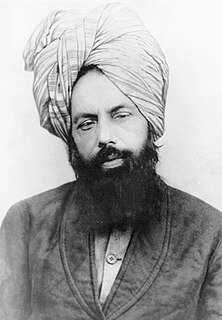
Mirzā Ghulām Ahmad was an Indian religious leader and the founder of the Ahmadiyya movement in Islam. He claimed to have been divinely appointed as the promised Messiah and Mahdi—which is the metaphorical second-coming of Jesus (mathīl-iʿIsā), in fulfillment of Islam's latter day prophecies, as well as the Mujaddid of the 14th Islamic century.
Heinrich Caro, Sephardic Jewish Polish-German chemist and academic (d. 1910) births

Heinrich Caro, was a German chemist.

Sephardic or Sephardi Jews, also Sepharadim or Hispanic Jews, are a Jewish diaspora population associated with the Iberian Peninsula. The term, which is derived from the Hebrew Sepharad, can also refer to the Mizrahi Jews of Western Asia and North Africa, who were also influenced by Sephardic law and customs. Many Iberian Jewish exiles also later sought refuge in Mizrahi Jewish communities, resulting in integration with those communities.
John Aaron Rawlins, American general and politician, 29th United States Secretary of War (d. 1869) births

John Aaron Rawlins was a general officer in the Union Army during the American Civil War and a cabinet officer in the Grant administration. A longtime confidant of Ulysses S. Grant, Rawlins served on Grant's staff throughout the war, rising to the rank of brevet major general, and was Grant's chief defender against allegations of insobriety. He was appointed Secretary of War when Grant was elected President of the United States.

The secretary of war was a member of the U.S. president's Cabinet, beginning with George Washington's administration. A similar position, called either "Secretary at War" or "Secretary of War", had been appointed to serve the Congress of the Confederation under the Articles of Confederation between 1781 and 1789. Benjamin Lincoln and later Henry Knox held the position. When Washington was inaugurated as the first President under the Constitution, he appointed Knox to continue serving as Secretary of War.
Edward Berry, English admiral (b. 1768) deaths

Rear Admiral Sir Edward Berry, 1st Baronet, KCB was an officer in Britain's Royal Navy primarily known for his role as flag captain of Rear Admiral Horatio Nelson's ship HMS Vanguard at the Battle of the Nile, prior to his knighthood in 1798. He had a long and prestigious naval career and also commanded HMS Agamemnon at the Battle of Trafalgar.
Peter Ludwig von der Pahlen, Russian general and politician, Governor-General of Baltic provinces (b. 1745) deaths
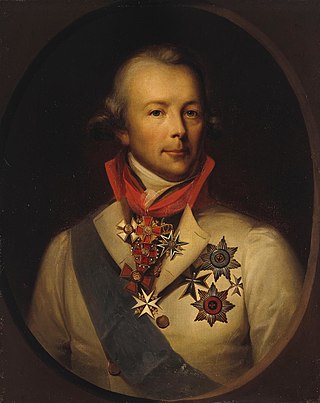
Peter Ludwig Graf von der Pahlen, a Baltic-German courtier and general, played a pivotal role in the assassination of Emperor Paul of Russia in 1801. He became a general in the Imperial Russian Army in 1798, a count in 1799, and served as the Military Governor of St. Petersburg from 1798 to 1801.
The governor-general of the Baltic provinces or governor-general of Estonia, Livonia, and Courland was the military commander of the Riga Military District and the highest administrator of the Baltic governorates of Estonia, Livonia and Courland sporadically under Russian rule in the 19th century.
George Rogers Clark, American general (b. 1752) deaths

George Rogers Clark was an American surveyor, soldier, and militia officer from Virginia who became the highest-ranking American patriot military officer on the northwestern frontier during the American Revolutionary War. He served as leader of the militia in Kentucky throughout much of the war. He is best known for his captures of Kaskaskia (1778) and Vincennes (1779) during the Illinois Campaign, which greatly weakened British influence in the Northwest Territory. The British ceded the entire Northwest Territory to the United States in the 1783 Treaty of Paris, and Clark has often been hailed as the "Conqueror of the Old Northwest".
Rufus Wilmot Griswold, American anthologist, editor, poet and critic (d. 1857) births
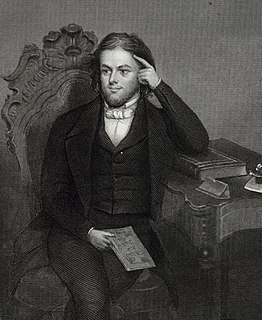
Rufus Wilmot Griswold was an American anthologist, editor, poet, and critic. Born in Vermont, Griswold left home when he was 15 years old. He worked as a journalist, editor, and critic in Philadelphia, New York City, and elsewhere. He built a strong literary reputation, in part due to his 1842 collection The Poets and Poetry of America. This anthology, the most comprehensive of its time, included what he deemed the best examples of American poetry. He produced revised versions and similar anthologies for the remainder of his life, although many of the poets he promoted have since faded into obscurity. Many writers hoped to have their work included in one of these editions, although they commented harshly on Griswold's abrasive character. Griswold was married three times: his first wife died young, his second marriage ended in a public and controversial divorce, and his third wife left him after the previous divorce was almost repealed.
Samuel Ashe, American lawyer and politician, 9th Governor of North Carolina (b. 1725) deaths
Samuel Ashe was the ninth governor of the U.S. state of North Carolina from 1795 to 1798. He was also one of the first three judges of the North Carolina Superior Court in 1787.

The Governor of North Carolina is the head of government of the U.S. state of North Carolina. The governor directs the executive branch of the government and is the commander in chief of the military forces of the state. The current governor, Democrat Roy Cooper took office on January 1, 2017, and had a public swearing-in ceremony on January 7, 2017.
François Achille Bazaine, French general (d. 1888) births
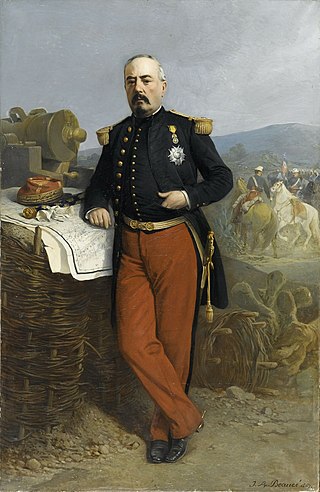
François Achille Bazaine was an officer of the French army. Rising from the ranks, during four decades of distinguished service under Louis-Philippe and then Napoleon III, he held every rank in the army from fusilier to Marshal of France, the latter in 1863. In 1870, he surrendered the last organized French army to Prussia during the Franco-Prussian War at the siege of Metz.
Peter Gustav Lejeune Dirichlet, German mathematician and academic (d. 1859) births

Johann Peter Gustav Lejeune Dirichlet was a German mathematician who made deep contributions to number theory, and to the theory of Fourier series and other topics in mathematical analysis; he is credited with being one of the first mathematicians to give the modern formal definition of a function.
Roger Joseph Boscovich, Croatian physicist, astronomer, mathematician, and philosopher (b. 1711) deaths

Roger Joseph Boscovich was a physicist, astronomer, mathematician, philosopher, diplomat, poet, theologian, Jesuit priest, and a polymath from the Republic of Ragusa. He studied and lived in Italy and France where he also published many of his works.
Charles Gravier, comte de Vergennes, French lawyer and politician, Foreign Minister of France (b. 1717) deaths

Charles Gravier, comte de Vergennes was a French statesman and diplomat. He served as Foreign Minister from 1774 during the reign of Louis XVI, notably during the American War of Independence.
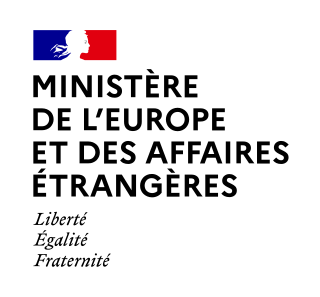
The Ministry for Europe and Foreign Affairs is the ministry of the Government of France that handles France's foreign relations. Since 1855, its headquarters have been located at 37 Quai d'Orsay, close to the National Assembly. The term Quai d'Orsay is often used as a metonym for the ministry. Its cabinet minister, the Minister of Europe and Foreign Affairs is responsible for the foreign relations of France. The current officeholder, Catherine Colonna, was appointed in 2022.
Ivan Krylov, Russian author, poet, and playwright (d. 1844) births

Ivan Andreyevich Krylov is Russia's best-known fabulist and probably the most epigrammatic of all Russian authors. Formerly a dramatist and journalist, he only discovered his true genre at the age of 40. While many of his earlier fables were loosely based on Aesop's and La Fontaine's, later fables were original work, often with a satirical bent.
Édouard Adolphe Casimir Joseph Mortier, French general and politician, 15th Prime Minister of France (d. 1835) births
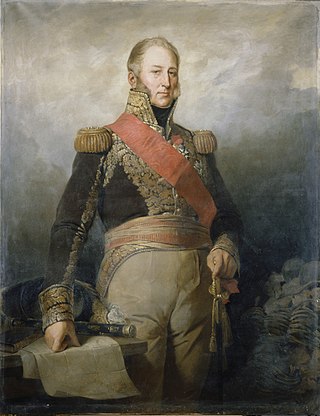
Adolphe Édouard Casimir Joseph Mortier, 1st Duke of Trévise was a French military commander and Marshal of the Empire under Napoleon I, who served during both the French Revolutionary Wars and the Napoleonic Wars. He was one of 18 people killed in 1835 during Giuseppe Marco Fieschi's assassination attempt on King Louis Philippe I.

The prime minister of France, officially the prime minister of the French Republic, is the head of government of the French Republic and the leader of the Council of Ministers.
Thomas Robert Malthus, English economist and scholar (d. 1834) births

Thomas Robert Malthus was an English cleric, scholar and influential economist in the fields of political economy and demography.
Johann Joseph Fux, Austrian composer and theorist (b. 1660) deaths
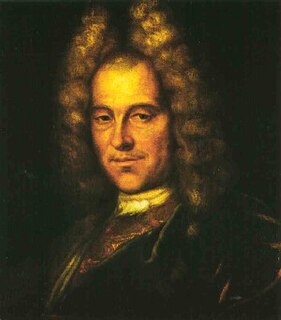
Johann Joseph Fux was an Austrian composer, music theorist and pedagogue of the late Baroque era. His most enduring work is not a musical composition but his treatise on counterpoint, Gradus ad Parnassum, which has become the single most influential book on the Palestrinian style of Renaissance polyphony.
Charles-René d'Hozier, French historian and author (b. 1640) deaths

Charles-René d'Hozier was a French historical commentator. The younger son of Pierre d'Hozier, he was the true successor of his father.
John Hunter, Scottish surgeon and anatomist (d. 1793) births

John Hunter was a British surgeon, one of the most distinguished scientists and surgeons of his day. He was an early advocate of careful observation and scientific method in medicine. He was a teacher of, and collaborator with, Edward Jenner, pioneer of the smallpox vaccine. He is alleged to have paid for the stolen body of Charles Byrne, and proceeded to study and exhibit it against the deceased's explicit wishes. His wife, Anne Hunter, was a poet, some of whose poems were set to music by Joseph Haydn.
Cotton Mather, American minister and author (b. 1663) deaths

Cotton Mather was a New England Puritan clergyman and a prolific writer. Educated at Harvard College, in 1685 he joined his father Increase as minister of the Congregationalist Old North Meeting House of Boston, where he continued to preach for the rest of his life. A major intellectual and public figure in English-speaking colonial America, Cotton Mather helped lead the successful revolt of 1689 against Sir Edmund Andros, the governor imposed on New England by King James II. Mather's subsequent involvement in the Salem witch trials of 1692–1693, which he defended in the book Wonders of the Invisible World (1693), attracted intense controversy in his own day and has negatively affected his historical reputation. As a historian of colonial New England, Mather is noted for his Magnalia Christi Americana (1702).
William Wotton, English linguist and scholar (b. 1666) deaths
William Wotton was an English theologian, classical scholar and linguist. He is chiefly remembered for his remarkable abilities in learning languages and for his involvement in the Quarrel of the Ancients and the Moderns. In Wales he is remembered as the collector and first translator of the ancient Welsh laws.
John Reid, Scottish general (d. 1807) births

John Reid, previously known as John Robertson, was a British army general and founder of the chair of music at the University of Edinburgh.
George Brydges Rodney, 1st Baron Rodney, English admiral and politician (d. 1792) births

Admiral George Brydges Rodney, 1st Baron Rodney, KB, was a British naval officer. He is best known for his commands in the American War of Independence, particularly his victory over the French at the Battle of the Saintes in 1782. It is often claimed that he was the commander to have pioneered the tactic of breaking the line.
Johann Caspar Kerll, German organist and composer (b. 1627) deaths

Johann Caspar Kerll was a German baroque composer and organist. He is also known as Kerl, Gherl, Giovanni Gasparo Cherll and Gaspard Kerle.
Giovanni Battista Piazzetta, Italian painter (d. 1754) births

Giovanni Battista Piazzetta was an Italian Rococo painter of religious subjects and genre scenes.
Étienne François Geoffroy, French physician and chemist (d. 1731) births

Étienne François Geoffroy was a French physician and chemist, best known for his 1718 affinity tables. He first contemplated a career as an apothecary, but then decided to practice medicine. He is sometimes known as Geoffroy the Elder.
Elizabeth Stuart, queen of Bohemia (b. 1596) deaths

Elizabeth Stuart was Electress of the Palatinate and briefly Queen of Bohemia as the wife of Frederick V of the Palatinate. Because her husband's reign in Bohemia lasted for just one winter, she is called the Winter Queen.
Charles X Gustav, king of Sweden (b. 1622) deaths

Charles X Gustav, also Carl Gustav, was King of Sweden from 1654 until his death. He was the son of John Casimir, Count Palatine of Zweibrücken-Kleeburg and Catherine of Sweden. After his father's death he also succeeded him as Pfalzgraf. He was married to Hedwig Eleonora of Holstein-Gottorp, who bore his son and successor, Charles XI. Charles X Gustav was the second Wittelsbach king of Sweden after the childless king Christopher of Bavaria (1441–1448) and he was the first king of the Swedish Caroline era, which had its peak during the end of the reign of his son, Charles XI. He led Sweden during the Second Northern War, enlarging the Swedish Empire. By his predecessor Christina, he was considered de facto Duke of Eyland (Öland), before ascending to the Swedish throne.
William V, Landgrave of Hesse-Kassel (d. 1637) births
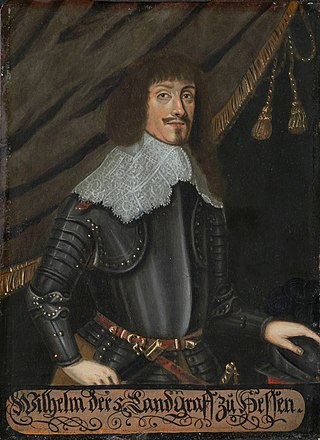
William V, a member of the House of Hesse, was Landgrave of Hesse-Kassel from 1627 to 1637. Having come to rule in unfavorable circumstances and in the midst of the Thirty Years' War, he continued to suffer losses of territory and wealth.
Alexander Nowell, English clergyman and theologian (b. 1507) deaths
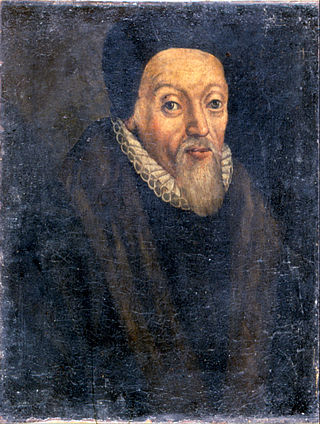
Alexander Nowell was an Anglican priest and theologian. He served as Dean of St Paul's during much of Elizabeth I's reign, and is now remembered for his catechisms.
Pope Alexander VII (d. 1667) births

Pope Alexander VII, born Fabio Chigi, was head of the Catholic Church and ruler of the Papal States from 7 April 1655 to his death in May 1667.
Alfonso Salmeron, Spanish priest and scholar (b. 1515) deaths
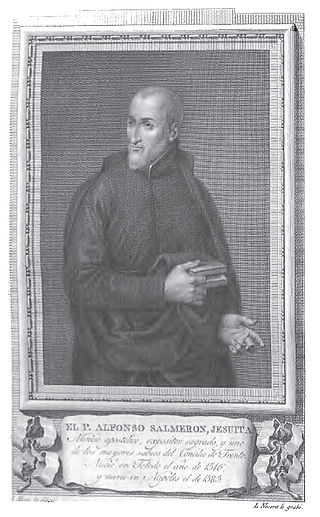
Alfonso (Alphonsus) Salmerón was a Spanish biblical scholar, a Catholic priest, and one of the first Jesuits.
Benvenuto Cellini, Italian painter and sculptor (b. 1500) deaths

Benvenuto Cellini was an Italian goldsmith, sculptor, and author. His best-known extant works include the Cellini Salt Cellar, the sculpture of Perseus with the Head of Medusa, and his autobiography, which has been described as "one of the most important documents of the 16th century."
Johann Reinhard I, Count of Hanau-Lichtenberg (d. 1625) births

Count Johann Reinhard I of Hanau-Lichtenberg ruled the county of Hanau-Lichtenberg from 1599 to 1625.
Catherine Howard, English wife of Henry VIII of England (executed; b. 1521) deaths

Catherine Howard, also spelled Katheryn Howard, was Queen of England from 1540 until 1542 as the fifth wife of Henry VIII. She was the daughter of Lord Edmund Howard and Joyce Culpeper, a cousin to Anne Boleyn, and the niece of Thomas Howard, 3rd Duke of Norfolk. Thomas Howard was a prominent politician at Henry's court, and he secured her a place in the household of Henry's fourth wife, Anne of Cleves, where she caught the King's interest. She married him on 28 July 1540 at Oatlands Palace in Surrey, just 19 days after the annulment of his marriage to Anne. He was 49, and she was between 15 and 21 years old.

Henry VIII was King of England from 22 April 1509 until his death in 1547. Henry is best known for his six marriages, and for his efforts to have his first marriage annulled. His disagreement with Pope Clement VII about such an annulment led Henry to initiate the English Reformation, separating the Church of England from papal authority. He appointed himself Supreme Head of the Church of England and dissolved convents and monasteries, for which he was excommunicated by the pope. Henry is also known as "the father of the Royal Navy" as he invested heavily in the navy and increased its size from a few to more than 50 ships, and established the Navy Board.
Elisabeth of Hesse, Electress Palatine (d. 1582) births

Elisabeth of Hesse was a German noblewoman.
Isabella d'Este, Italian noblewoman (b. 1474) deaths

Isabella d'Este was Marchioness of Mantua and one of the leading women of the Italian Renaissance as a major cultural and political figure. She was a patron of the arts as well as a leader of fashion, whose innovative style of dressing was copied by numerous women. The poet Ariosto labeled her as the "liberal and magnanimous Isabella", while author Matteo Bandello described her as having been "supreme among women". Diplomat Niccolò da Correggio went even further by hailing her as "The First Lady of the world".
Valentin Naboth, German astronomer and mathematician (d. 1593) births
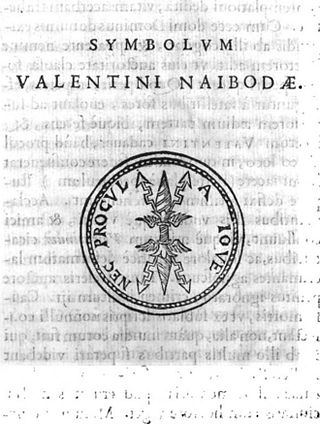
Valentin Naboth, known by the latinized name Valentinus Nabodus, was a German mathematician, astronomer and astrologer.
Girolamo Aleandro, Italian cardinal (d. 1542) births

Girolamo Aleandro was an Italian cardinal, and the first cardinal appointed in pectore.
Elia Levita, Renaissance Hebrew grammarian (d. 1549) births

Elia Levita, also known as Elijah Levita, Elias Levita, Élie Lévita, Elia Levita Ashkenazi, Eliahu Levita, Eliyahu haBahur, Elye Bokher, was a Renaissance Hebrew grammarian, scholar, and poet. He was the author of the Bovo-Bukh, the most popular chivalric romance written in Yiddish. Living for a decade in the house of Cardinal Giles of Viterbo, he was one of the foremost teachers of Christian clergy, nobility, and intellectuals in Hebrew and in Jewish mysticism during the Renaissance.
Mary of Burgundy, Sovereign Duchess regnant of Burgundy, married to Maximilian I, Holy Roman Emperor (d. 1482) births

Mary, nicknamed the Rich, was a member of the House of Valois-Burgundy who ruled a collection of states that included the duchies of Limburg, Brabant, Luxembourg, the counties of Namur, Holland, Hainaut and other territories, from 1477 until her death in 1482.
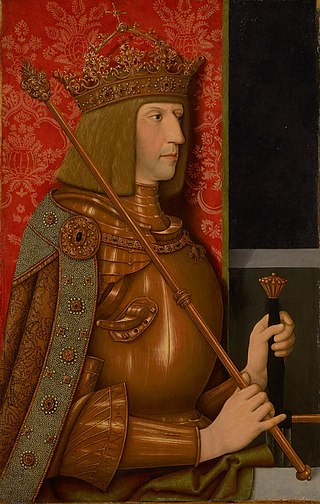
Maximilian I was King of the Romans from 1486 and Holy Roman Emperor from 1508 until his death. He was never crowned by the pope, as the journey to Rome was blocked by the Venetians. He proclaimed himself Elected Emperor in 1508 at Trent, thus breaking the long tradition of requiring a Papal coronation for the adoption of the Imperial title. Maximilian was the son of Frederick III, Holy Roman Emperor, and Eleanor of Portugal. Since his coronation as King of the Romans in 1486, he ran a double government, or Doppelregierung, with his father until Frederick's death in 1493.
Hartmann Schedel, German physician (d. 1514) births

Hartmann Schedel was a German historian, physician, humanist, and one of the first cartographers to use the printing press. He was born and died in Nuremberg. Matheolus Perusinus served as his tutor.
Kō no Morofuyu, Japanese general deaths
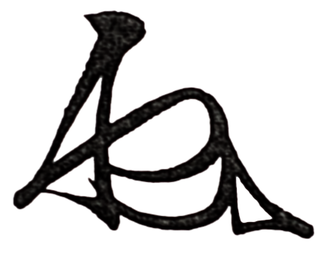
Kō no Morofuyu was, together with his cousins Moronao and Moroyasu, one of shōgun Ashikaga Takauji's most important generals during the Nanboku-chō period. He was adopted as a son by Moronao. He was kami of Mikawa Province, shugo (governor) of Musashi Province and Kantō kanrei. Defeated by Uesugi Noriaki during the Kannō disturbance, he committed seppuku in Kai in 1351.
Andronikos II Palaiologos, Byzantine emperor (b. 1259) deaths

Andronikos II Palaiologos, Latinized as Andronicus II Palaeologus, reigned as Byzantine emperor from 1282 to 1328. Andronikos' reign marked the beginning of the recently-restored empire's final decline. The Turks conquered most of its remaining Anatolian territories and, during the last years of his reign, he also had to fight his own grandson in the First Palaiologan Civil War. The war ended in Andronikos' forced abdication in 1328 after which he retired to a monastery for the remainder of his life.
Minamoto no Sanetomo, Japanese shōgun (b. 1192) deaths

Minamoto no Sanetomo was the third shōgun of the Kamakura shogunate. He was the second son of the Kamakura shogunate founder, Minamoto no Yoritomo. His mother was Hōjō Masako and his older brother was second Kamakura shogun Minamoto no Yoriie.
Stefan Nemanja, Serbian grand prince (b. 1113) deaths
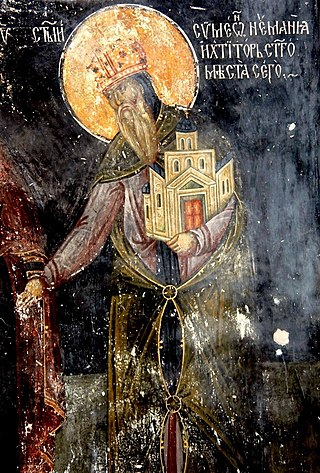
Stefan Nemanja was the Grand Prince of the Serbian Grand Principality from 1166 to 1196. A member of the Vukanović dynasty, Nemanja founded the Nemanjić dynasty, and is remembered for his contributions to Serbian culture and history, founding what would evolve into the Serbian Empire, as well as the national church. According to the Serbian Academy of Sciences and Arts, Nemanja is also among the most remarkable Serbs for his literary contributions and altruistic attributes.
Béla II, king of Hungary and Croatia (b. 1110) deaths
Béla the Blind was King of Hungary and Croatia from 1131 to 1141. He was blinded along with his rebellious father Álmos on the order of Álmos's brother, King Coloman of Hungary. Béla grew up in monasteries during the reign of Coloman's son Stephen II. The childless king arranged Béla's marriage with Helena of Rascia, who would become her husband's co-ruler throughout his reign.
Honorius II, pope of the Catholic Church (b. 1060) deaths
Pope Honorius II, born Lamberto Scannabecchi, was head of the Catholic Church and ruler of the Papal States from 21 December 1124 to his death in 1130.
Al-Hakim bi-Amr Allah, Fatimid caliph (b. 985) deaths

Abū ʿAlī Manṣūr, better known by his regnal name al-Ḥākim bi-Amr Allāh, was the sixth Fatimid caliph and 16th Ismaili imam (996–1021). Al-Hakim is an important figure in a number of Shia Ismaili sects, such as the world's 15 million Nizaris and 1–2 million Musta'lis, in addition to the 2 million Druze of the Levant.
Adalbert Atto, Lombard nobleman deaths
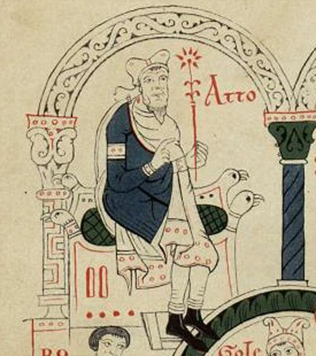
Adalbert Atto was the first Count of Canossa and founder of that noble house which eventually was to play a determinant role in the political settling of Regnum Italicum and the Investiture Controversy in the eleventh and twelfth centuries.
Muhammad ibn Ra'iq, Abbasid emir and regent deaths
Abu Bakr Muhammad ibn Ra'iq, usually simply known as Ibn Ra'iq, was a senior official of the Abbasid Caliphate, who exploited the caliphal government's weakness to become the first amir al-umara of the Caliphate in 936. Deposed by rival Turkish military leaders in 938, he regained the post in 941 and kept it until his assassination in February 942.
Xiao Wen, empress of the Liao Dynasty deaths
Xiao Wen, formally Empress Jing'an, probably née Shulü Wen (述律溫), was an empress of the Khitan-led Chinese Liao dynasty. She was the wife of Emperor Taizong.
Vratislaus I, duke of Bohemia deaths
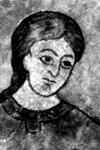
Vratislaus I, a member of the Přemyslid dynasty, was Duke of Bohemia from 915 until his death.
Kenneth MacAlpin, Scottish king (probable; b. 810) deaths

Kenneth MacAlpin or Kenneth I was King of Dál Riada (841–850), King of the Picts (843–858), and the King of Alba (843–858) of likely Gaelic origin. He inherited the throne of Dál Riada from his father Alpín mac Echdach, founder of the Alpínid dynasty. Kenneth I conquered the kingdom of the Picts in 843–850 and began a campaign to seize all of Scotland and assimilate the Picts, for which he was posthumously nicknamed An Ferbasach. Forteviot became the capital of his kingdom, and he also fought the Britons of the Kingdom of Strathclyde and the invading Vikings from Scandinavia. Kenneth also relocated relics including the Stone of Scone from an abandoned abbey on Iona to his new domain.
Chilperic II, Frankish king (b. 672) deaths

Chilperic II, known as Daniel prior to his coronation, was the youngest son of Childeric II and his half-cousin wife, Bilichild. He reigned as king of Neustria from 715 and sole king of the Franks from 718 until his death.
Emperor He of Han (Han Hedi) of the Chinese Eastern Han Dynasty (b. AD 79) deaths
Year 106 (CVI) was a common year starting on Thursday of the Julian calendar. At the time, it was known as the Year of the Consulship of Commodus and Civica. The denomination 106 for this year has been used since the early medieval period, when the Anno Domini calendar era became the prevalent method in Europe for naming years.
Emperor He of Han was an emperor of the Chinese Han dynasty who ruled from 88 to 106. He was the 4th emperor of the Eastern Han.

The Han dynasty was an imperial dynasty of China, established by Liu Bang and ruled by the House of Liu. The dynasty was preceded by the short-lived Qin dynasty and a warring interregnum known as the Chu–Han contention, and it was succeeded by the Three Kingdoms period. The dynasty was briefly interrupted by the Xin dynasty established by usurping regent Wang Mang, and is thus separated into two periods—the Western Han and the Eastern Han (25–220 AD). Spanning over four centuries, the Han dynasty is considered a golden age in Chinese history, and it has influenced the identity of the Chinese civilization ever since. Modern China's majority ethnic group refers to themselves as the "Han people", the Sinitic language is known as "Han language", and the written Chinese is referred to as "Han characters".

AD 79 (LXXIX) was a common year starting on Friday of the Julian calendar. At the time, it was known as the Year of the Consulship of Titus and Vespasianus. The denomination AD 79 for this year has been used since the early medieval period, when the Anno Domini calendar era became the prevalent method in Europe for naming years.
Children's Day (Myanmar)
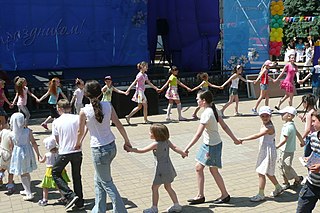
Children's Day is a commemorative date celebrated annually in honor of children, whose date of observance varies by country. In 1925, International Children's Day was first proclaimed in Geneva during the World Conference on Child Welfare. Since 1950, it is celebrated on June 1 in most Communist and post-Communist countries. World Children's Day is celebrated on the 20th November to commemorate the Declaration of the Rights of the Child by the UN General Assembly on 20 November 1959. In some countries, it is Children's Week and not Children's Day.
Christian feast day: Absalom Jones (Episcopal Church (USA))
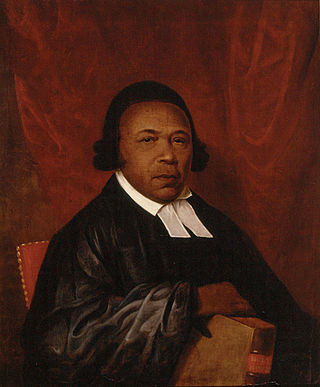
Absalom Jones was an African-American abolitionist and clergyman who became prominent in Philadelphia, Pennsylvania. Disappointed at the racial discrimination he experienced in a local Methodist church, he founded the Free African Society with Richard Allen in 1787, a mutual aid society for African Americans in the city. The Free African Society included many people newly freed from slavery after the American Revolutionary War.
The veneration of saints in the Episcopal Church is a continuation of an ancient tradition from the early Church which honors important and influential people of the Christian faith. The usage of the term saint is similar to Roman Catholic and Orthodox traditions. Episcopalians believe in the communion of saints in prayer and as such the Episcopal liturgical calendar accommodates feasts for saints.
Christian feast day: Beatrice of Ornacieux
Blessed Beatrix d'Ornacieux was a Carthusian nun. Her feast day is 13 February.
Christian feast day: Castor of Karden

Saint Castor of Karden was a priest and hermit of the 4th century who is venerated as a saint by the Catholic Church and the Eastern Orthodox Church. Castor was a pupil of Maximinus of Trier around 345 AD, and was ordained as a priest by Maximinus. Like his teacher, Castor may have come from the region of Aquitaine. At his ordination, Castor settled at Karden on the Moselle as a hermit with various companions, where they dedicated themselves to an ascetic life and established a small religious community.
Christian feast day: Catherine of Ricci

Catherine de' Ricci, was an Italian Dominican Tertiary sister. She is believed to have had miraculous visions and corporeal encounters with Jesus, both with the infant Jesus and with the adult Jesus. She is said to have spontaneously bled with the wounds of the crucified Christ. She is venerated for her mystic visions and is honored as a saint by the Catholic Church.
Christian feast day: Dyfnog
Saint Dyfnog was an early Welsh saint. His feast day is 13 February.
Christian feast day: Ermenilda of Ely
Saint Eormenhild is a 7th-century Anglo-Saxon saint venerated in the Eastern Orthodox and Roman Catholic churches.
Christian feast day: Fulcran

Saint Fulcran was a French saint. He was bishop of Lodève.
Christian feast day: Jordan of Saxony

Jordan of Saxony,, was one of the first leaders of the Dominican Order. His feast day is February 13.
Christian feast day: Polyeuctus (Roman Catholic Church)

Saint Polyeuctus of Melitene was an ancient Roman saint. Christian tradition states that he was a wealthy Roman army officer who was the first martyr in Melitene, Armenia, under Valerian.

The Catholic Church, also known as the Roman Catholic Church, is the largest Christian church, with 1.3 billion baptized Catholics worldwide as of 2019. As the world's oldest and largest continuously functioning international institution, it has played a prominent role in the history and development of Western civilization. The church consists of 24 sui iuris churches, including the Latin Church and 23 Eastern Catholic Churches, which comprise almost 3,500 dioceses and eparchies located around the world. The pope, who is the bishop of Rome, is the chief pastor of the church. The bishopric of Rome, known as the Holy See, is the central governing authority of the church. The administrative body of the Holy See, the Roman Curia, has its principal offices in Vatican City, a small enclave of the Italian city of Rome, of which the pope is head of state.
Christian feast day: February 13 (Eastern Orthodox liturgics)

February 12 - Eastern Orthodox liturgical calendar - February 14
World Radio Day
World Radio Day is an international day celebrated on 13 February each year. The Day was decided by UNESCO on 3 November 2011 during its 36th conference.